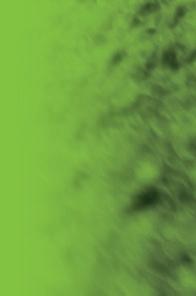



































In Memory of Dr. Joe Vargas | 1942 – 2024





































In Memory of Dr. Joe Vargas | 1942 – 2024


Learn from our world-class turfgrass pros
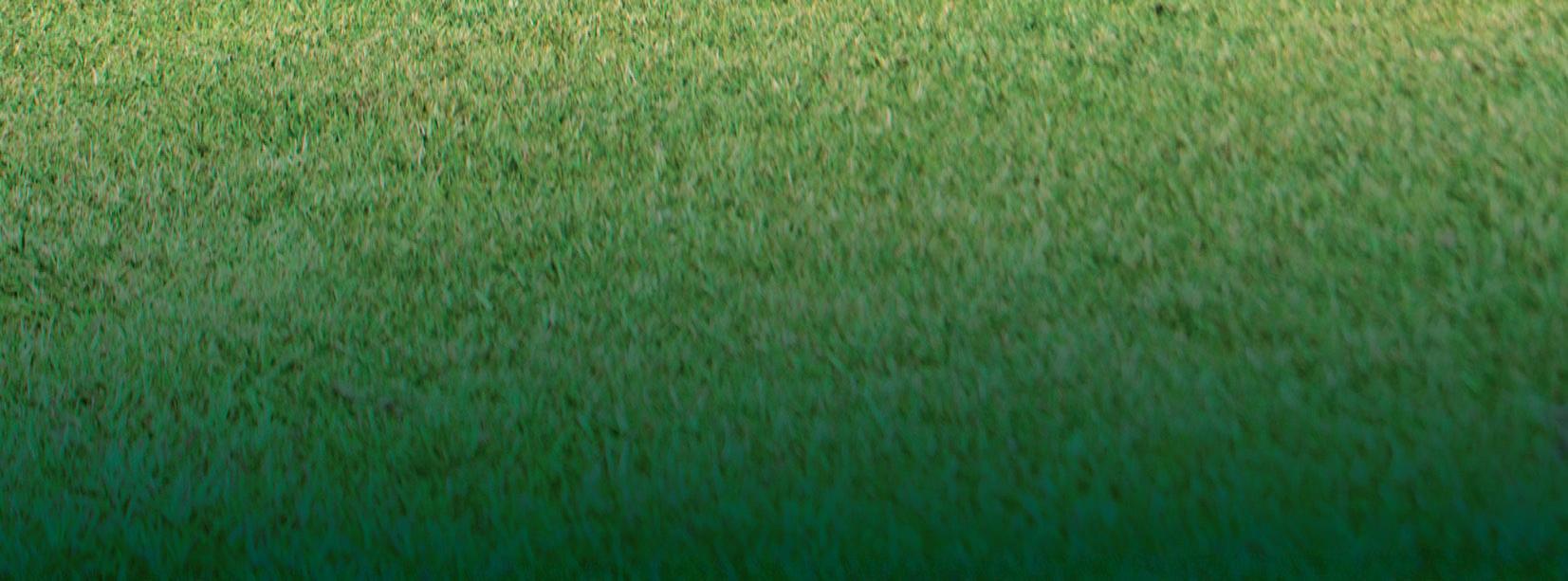

2016 Michigan Golf Hall of Fame inductee Joe Vargas, PhD, has worked to improve turf quality on every global continent except Antarctica. An MSU Distinguished Faculty member, Vargas has advised master’s and doctoral students and served as faculty coordinator of the MSU Turfgrass Research Center while working with industry for more than 50 years.
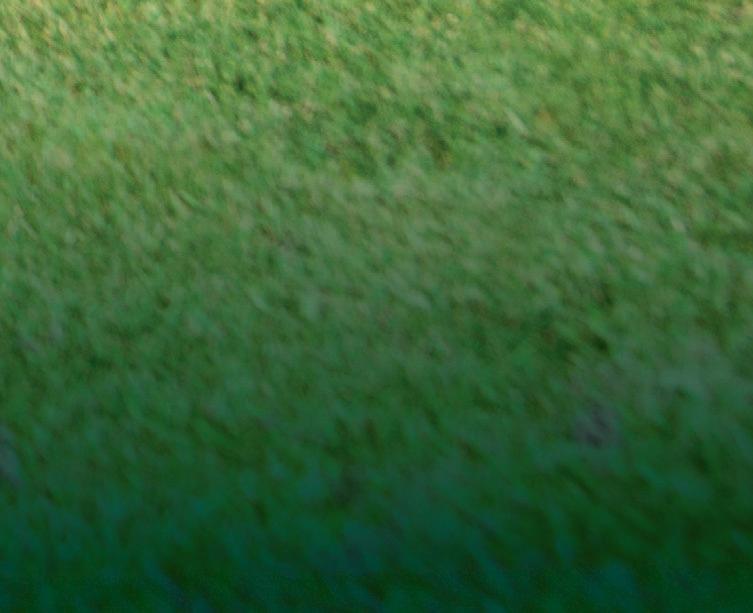
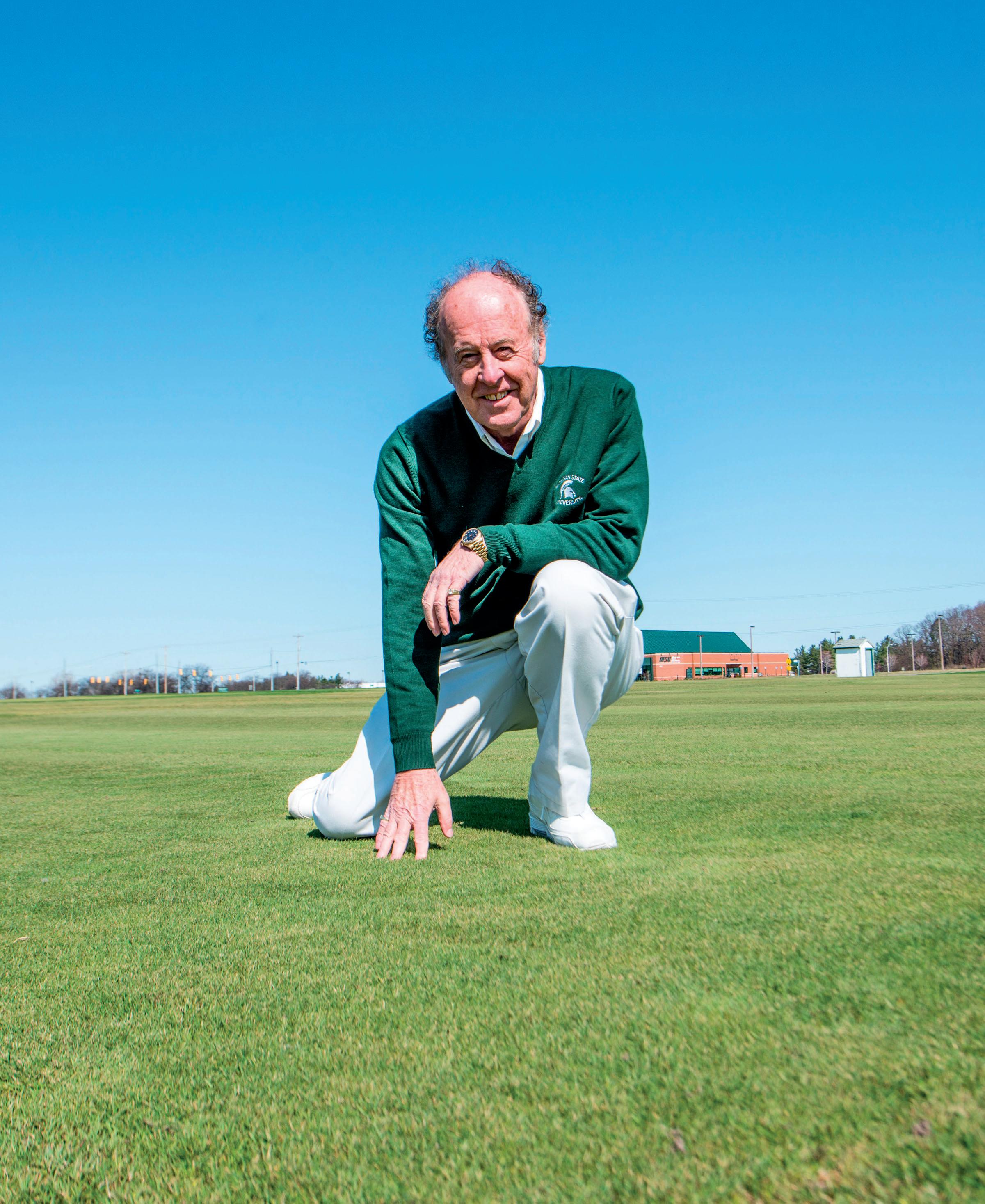

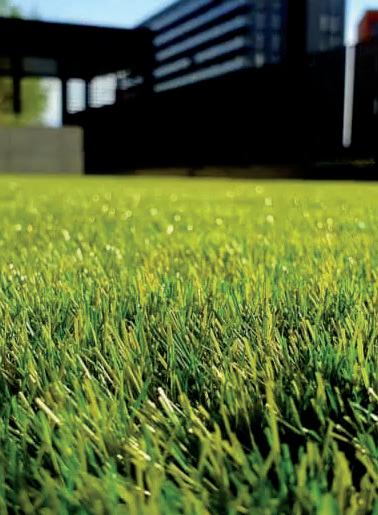
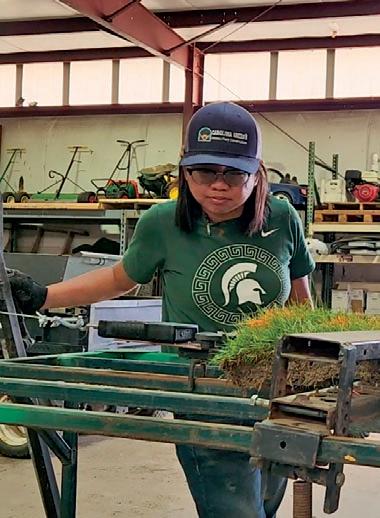
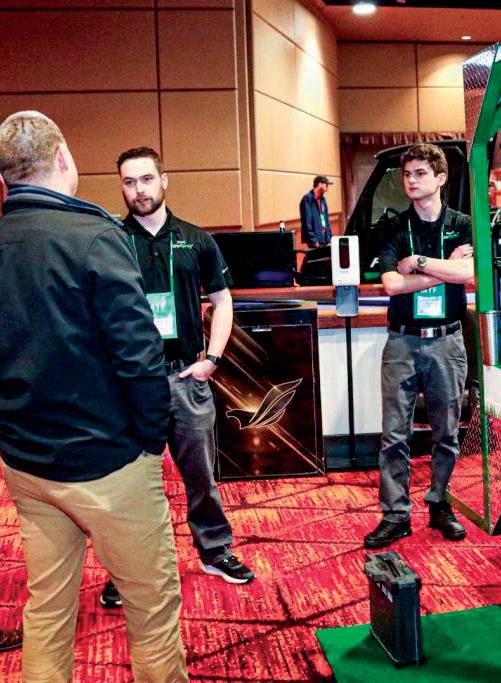
PRESIDENT
Mr. Dan Mausolf
VICE PRESIDENT
Mr. Brad Lazroff
TREASURER
Mr. Brad Lazroff
SECRETARY
Mr. Scott Rettmann

EXECUTIVE DIRECTOR
Mr. Carey Mitchelson
EXECUTIVE SECRETARY
Ms. Britney VanderKodde
PRESIDENT EMERITUS
Mr. Curt Boak
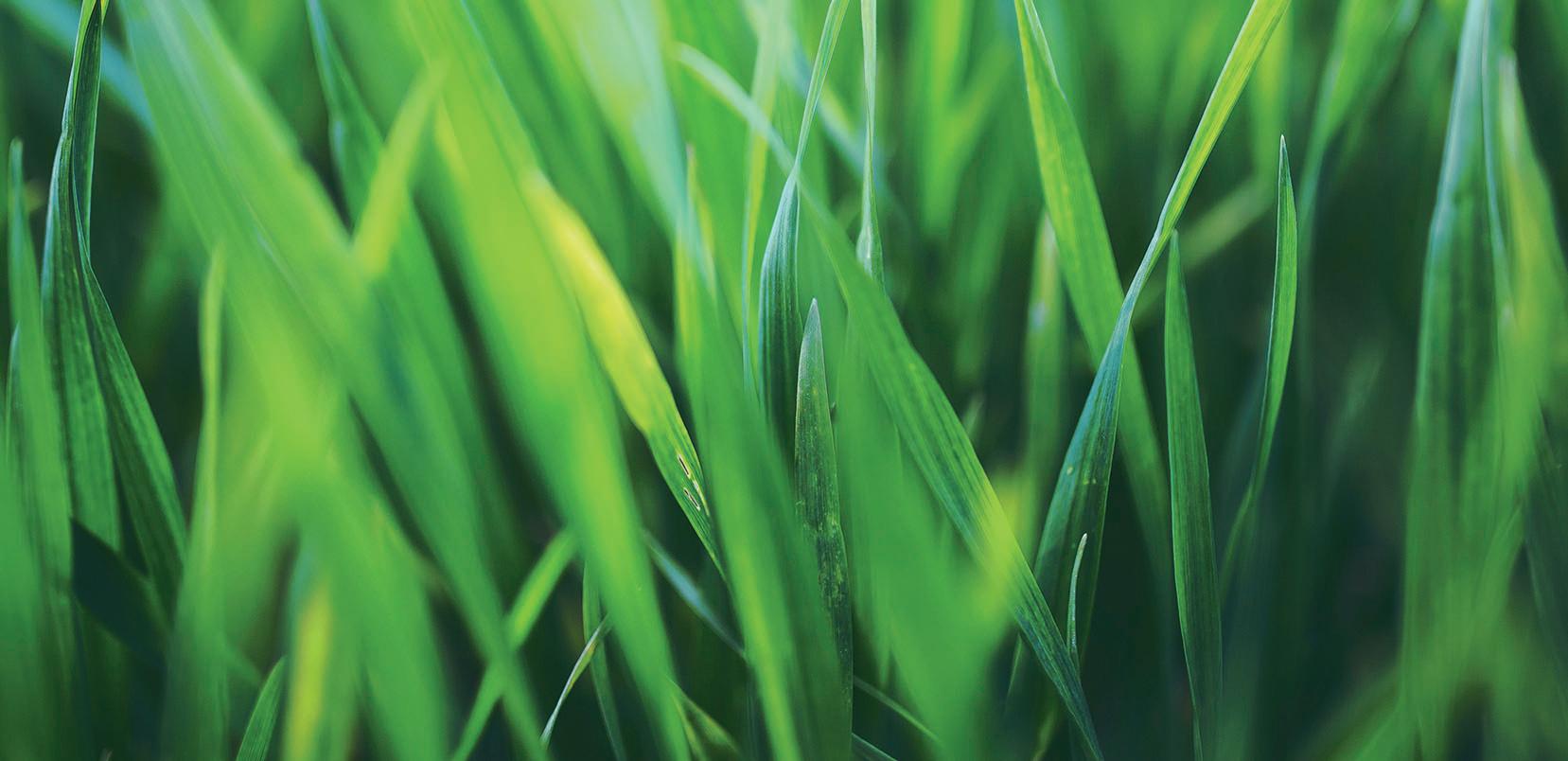

Mr. Curt Boak | Lawn Tech
REPRESENTING: Turfgrass Services
Mr. Dan Mausolf LIC, CSP, ASM | Stine Turf & Snow
REPRESENTING: Lawn & Maintenance

Mr. Brad Lazroff | Huron Meadows Golf Course
REPRESENTING: Cemetery, Park, or Sod
Adam Palmatier | Helena REPRESENTING: Commercial Turfgrass Supplier
Mr. Mitch Hooten | West Michigan Whitecaps REPRESENTING: Sports or Institutional Turf
Mr. Craig Moore | Marquette Golf Club REPRESENTING: Northern Michigan District - MiGCSA

Mr. Jeff Holmes CGCS | Egypt Valley Country Club REPRESENTING: Western Michigan District - MiGCSA
Mr. Eric Davey | Prestwick Village Golf Club REPRESENTING: Greater Detroit District - MiGCSA
Mr. Christian Koval | Lakelands Golf and Country Club REPRESENTING: Mid-Michigan District - MiGCSA
Mr. Scott Rettman | Walnut Creek Country Club REPRESENTING: At Large
Mr. Chris Wilcznski | CW Golf Architecture REPRESENTING: At Large
Mr. Brian Schweihofer | Franklin Hills Country Club REPRESENTING: At Large

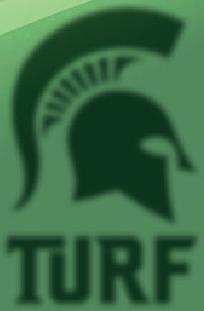

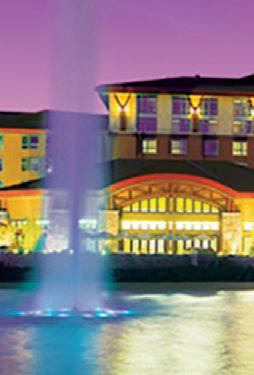
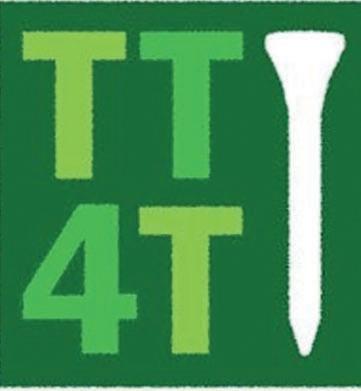
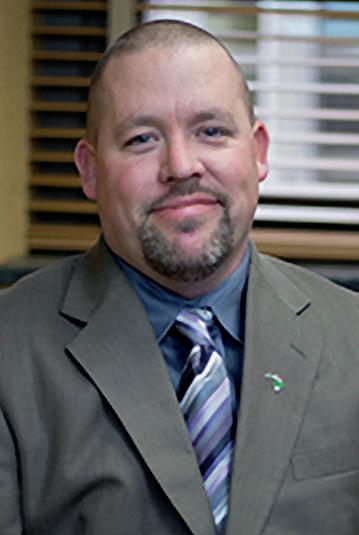
Dear Members,
I extend my greetings to you, whether it be morning, day, or evening.
I am honored to serve as the 69th President of the Michigan Turfgrass Foundation. With 27 years of experience in the green industry, including 19 years in golf and 8 years as the General Manager at Stine Turf and Snow, I bring a wealth of knowledge and passion to this role. My educational background includes degrees in turf from Penn State and business from Washtenaw Community College.
Let me take a moment to express my profound pride in the Michigan Turfgrass Foundation. Our Board of Directors consists of dedicated volunteers whose commitment and efforts have enabled us to achieve remarkable success. I am deeply grateful to all our members, sponsors, and attendees to our events for their unwavering support of our mission to advance turfgrass research at Michigan State University. The legacy of past students, professors, technicians, and managers at The Hancock Turfgrass Research Center is a testament to the impressive accomplishments within our industry, and I am honored to follow in their footsteps.
As we move forward, I am incredibly excited about the potential of our current Board, comprised of 12 esteemed turfgrass professionals. Together, we are dedicated to supporting turfgrass research at MSU and making decisions that will benefit our industry in the long term. I encourage you to reach out to me with any questions or concerns you may have. My door is always open, and I am here to represent you, our valued members. Thank you for your continued support and dedication to the Michigan Turfgrass Foundation.
In closing, I extend my best wishes to all our members for a perfect growing season ahead, with perfect temperatures, consistent rainfall, true lies, and great team members. Here’s to a successful season ahead!
Dan Mausolf President



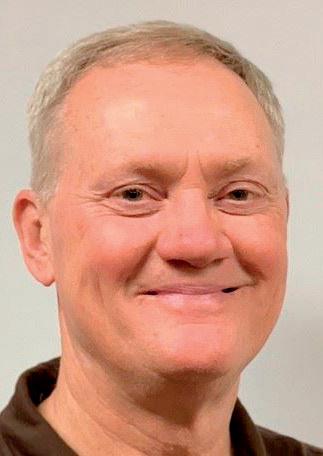

John N. Trey Rogers III, Ph.D. rogersj@msu.edu

Professor, Turfgrass Research - Golf Course Renovations - Sports Turf and Golf Turf Management Programs; Turfgrass Research Telephone: 517-353-0136


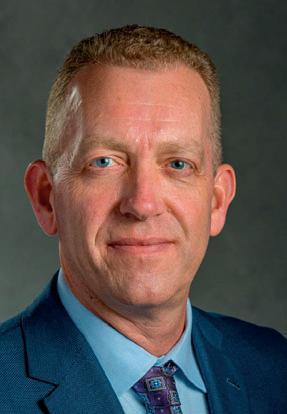



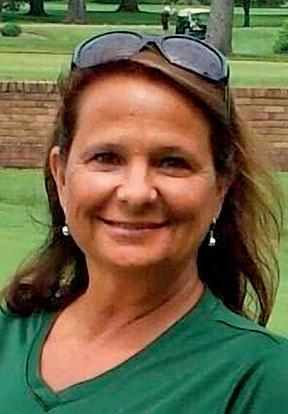

Nancy Dykema dykema@msu.edu
Research Assistant/Instructor, Turfgrass Pathology
Department of Plant, Soil and Microbial Sciences Telephone: 517-353-9082





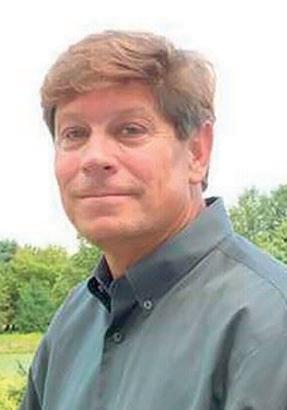
Thomas Nikolai, Ph.D. nikolait@msu.edu


Kevin Frank, Ph.D. frankk@msu.edu
Professor and Turf Extension Specialist Telephone: 517-353-0147







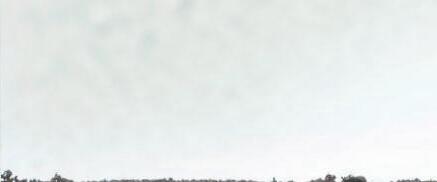
Senior Turfgrass Academic Specialist - Golf Course Putting Green mechanical and cultural practices, turfgrass health. Telephone: 517-353-0133

Dr. David Gilstrap, Ph.D. gilstrap@msu.edu
Senior Academic Specialist Sports and Commercial Turf Management Education Telephone: 517-353-0140


Emily Merewitz-Holm, Ph.D. merewitz@msu.edu
Assistant Professor - Plant physiologist; abiotic & biotic stresses of turfgrass and crop species; whole-plant, biochemical, & molecular techniques. Telephone: 517-353-0203

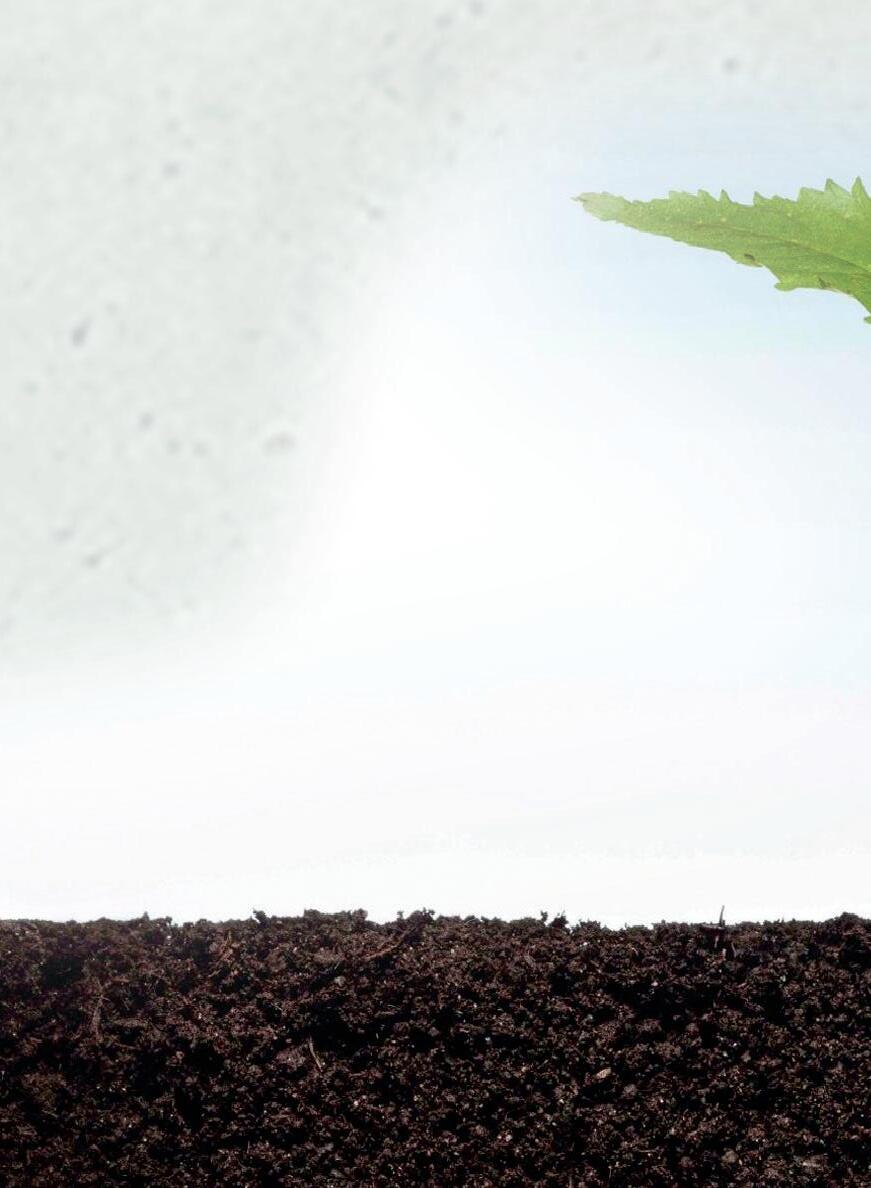
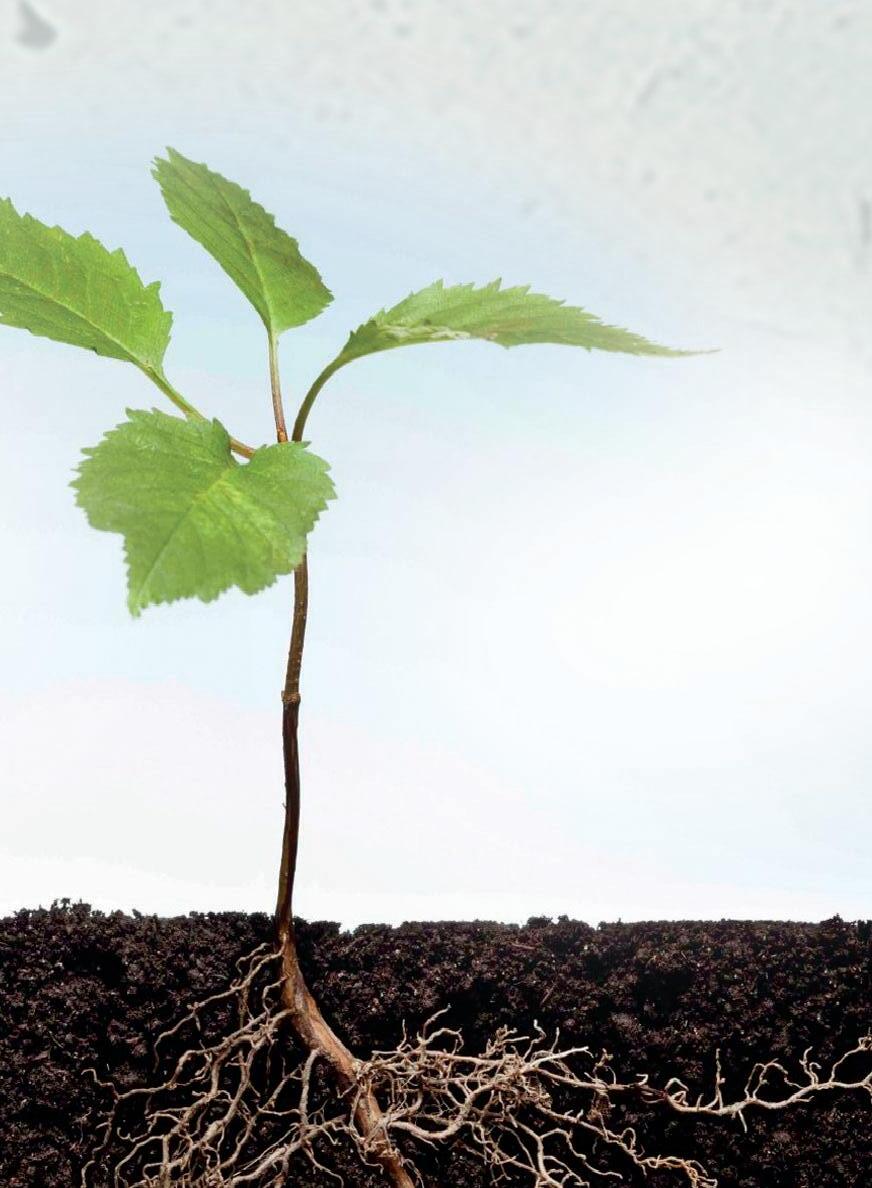





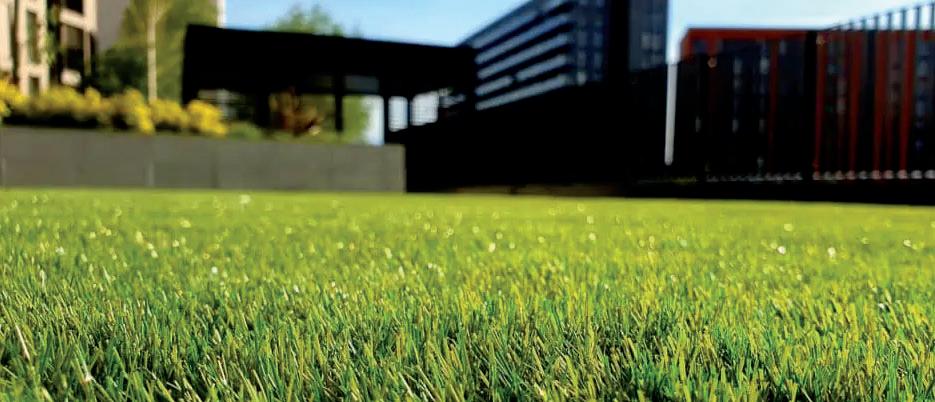



Michigan State University
February 2024
Sod on Plastic Establishment Practices for Cool-Season Grasses
How the MTF funding will be used to support project(s):


Project update:

Support funds will allow researchers to gather sod on plastic (SOP) establishment data at various Michigan locations for the benefit of Michigan sod producers.
Background of the study:
Sod grown on plastic is a method of sod production where turfgrass is established on a thin layer of growing medium spread over plastic sheeting.
Benefits of growing SOP
• Complete control of the growing medium, preventing soil layering issues.
• Ability to harvest the whole rootzone without damaging the roots, avoiding transplant shock during sod harvest and installation.
• Faster establishment rate, reducing production time from 18 months to 4 months.
Study #1: Evaluating Kentucky Bluegrass and Perennial Ryegrass Seeding Ratios for Sod Grown on Plastic Production
This study was conducted from May to September in 2022 and June to August in 2023 at the Hancock Turfgrass Research Center, East Lansing, MI. The location and methods to level the site were different between years. In 2022, the area was rolled and leveled manually by hand. In 2023, a clay mix called DuraEdge was used as a base and was laser graded to achieve 1% slope. Treatments consisted of six Kentucky bluegrass: perennial ryegrass seeding ratios (100:0, 98:2, 96:4, 92:8, 84:16 and 0:100) sowed at 20 seeds inch-2. To quantify sod harvestability and stability of seeding ratios, tensile strength and shear strength were measured 18 weeks after seeding, respectively.
• Incorporating perennial ryegrass into Kentucky bluegrass during seeding stabilized the surface and improved the harvestability of the sod

• Facilitates sod production on non-arable lands (e.g., concrete, parking lots).
• A seeding ratio of 84% KBG and 16% PRG is recommended to minimize washouts and expedite sod production.


• PRG sod (0:100) had the highest tensile and shear strength, demonstrating that PRG sod on plastic production is feasible.
• To further validate these claims, this experiment will be repeated on the DuraEdge area in 2024.
This study was conducted from June to August 2023 at the Hancock Turfgrass Research Center, East Lansing, MI. Four pure live seeding rates (10, 20, 40 and 60 seeds in-2) were established and evaluated at 4, 6, 8, 10 and 12 weeks after seeding. Turfgrass cover, shear strength, tensile strength and root cover were measured.
• 20 seeds in-2 (5 lbs per 1000 ft2) provided the highest sod tensile strength with the lowest amount of seed, making it the optimum seeding rate for perennial ryegrass sod grown on plastic production.

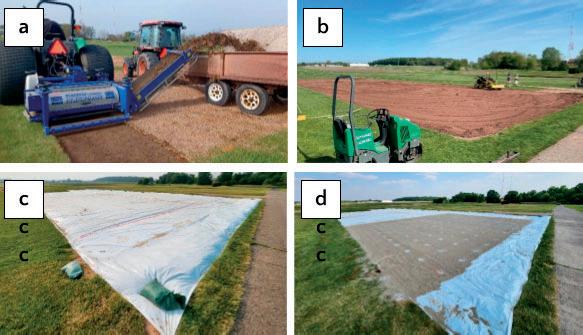

• To further validate this claim, this experiment will be repeated in 2024.
Grad Student(s) Involved:
PhD Candidate Jackie Guevara, MSc student Jake Kilby and Research Technician/PhD Student Ryan Bearss
Benefit Group:
In the short term, these experiments will benefit prospective Michigan Sod Producers interested in entering the sod on plastic market. In the long term, these data will benefit international sports associations (FIFA, MLS, NFL, etc.). Spartan Stadium will also benefit from these endeavors by gaining access to reliable sources of sod on plastic for annual stadium re-sodding.
Figure 1. Sod grown on plastic establishment at Hancock Turfgrass Research Center, East Lansing, MI in June 2023. (a) DuraEgde was used as a base for sod grown on plastic establishment. The area was laser-graded to have a 1% slope. (b) A white plastic was laid down on the area. (c) Sand (1-inch depth) was topdressed on top of the plastic sheet.


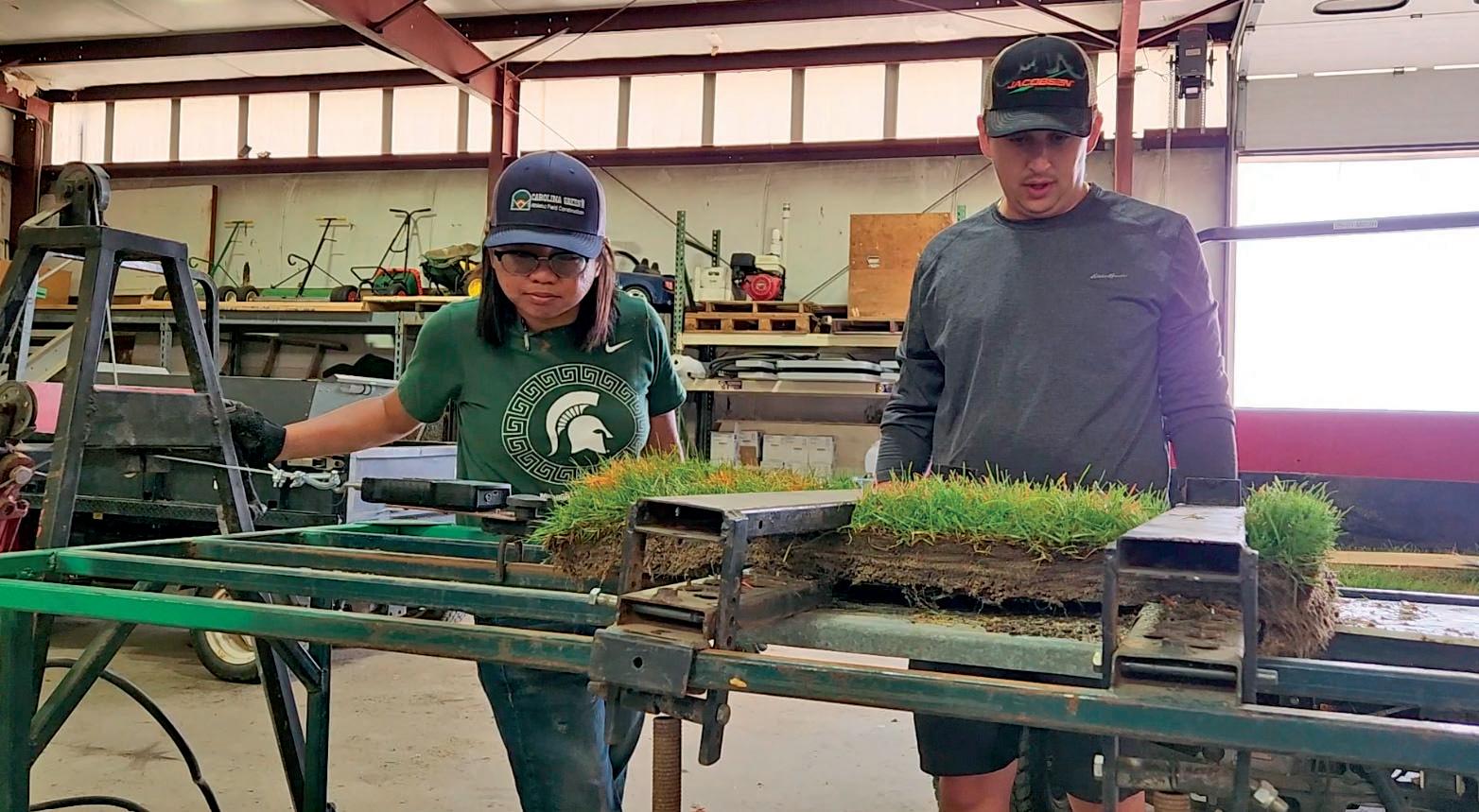
Figure 2. Measurement of sod harvestability (tensile strength) at Hancock Turfgrass Research Center, East Lansing, MI – 2023: (1) a Calrochan Sod Puller was used to pull apart a 1 ft x 1.5 ft sod piece, and (2) a digital force gauge was used to measure the force required (lbs · force) to pull sod apart.
Estimated project duration:
Studies started in Spring 2022 and will continue through Summer 2025.



Dr. Kevin W. Frank, Payton Perkinson, and Eric Galbraith
Michigan State University


Since the summer of 1998 leachate samples have been collected from the monolith lysimeters at the HTRC and analyzed for nitrate-nitrogen. July 2023 marked 25 years of consecutive leachate collection and 33 years since turfgrass was established on the lysimeters. The high N rate of 5 lb. N/1000 ft.2/yr was applied in 1998 and concluded following the 2002 season. High levels of NO3-N leaching were measured from the high N rate from 1998-2002. In 2003 the high N rate was reduced from 5 to 4 N/1000 ft.2/yr, and subsequently leachate NO3-N concentrations declined over an approximately 15-year period. After 15 years of treating the high N rate at 4 lb. N/1000 ft.2/yr, in 2018 we reverted to applying urea at 5 lb. N/1000 ft.2/yr split over 5 applications to two of the lysimeters to determine if the high N rate would once again result in high nitrate-nitrogen concentrations in leachate. The application dates were May 1, June 1, July 1, Aug. 1, and Sept. 1. The remaining two lysimeters were treated with urea at 2 lb. N/ 1000 ft.2/yr split over two applications on May 1 and Sept. 1. The turf was mowed at 3 in. and clippings returned to the plots. Lysimeter percolate was collected regularly, volume measured, and a sub sample collected for NO3-N, NH4-N, and phosphorus (orthophosphate) analysis.

This research will continue to measure nitrogen leaching in a continually managed turfgrass system and provide insight into the effect of fertilizer rates on nitrogen leaching from mature turfgrass stands.
1. After six years of the high N rate, 5 lb. N/1000 ft.2/yr, mean annual nitrate-nitrogen concentrations have increased from 1.1 to a high of 5.7 ppm in 2022.
2. Dormant season leaching continues to be a point of concern for the high N rate application.
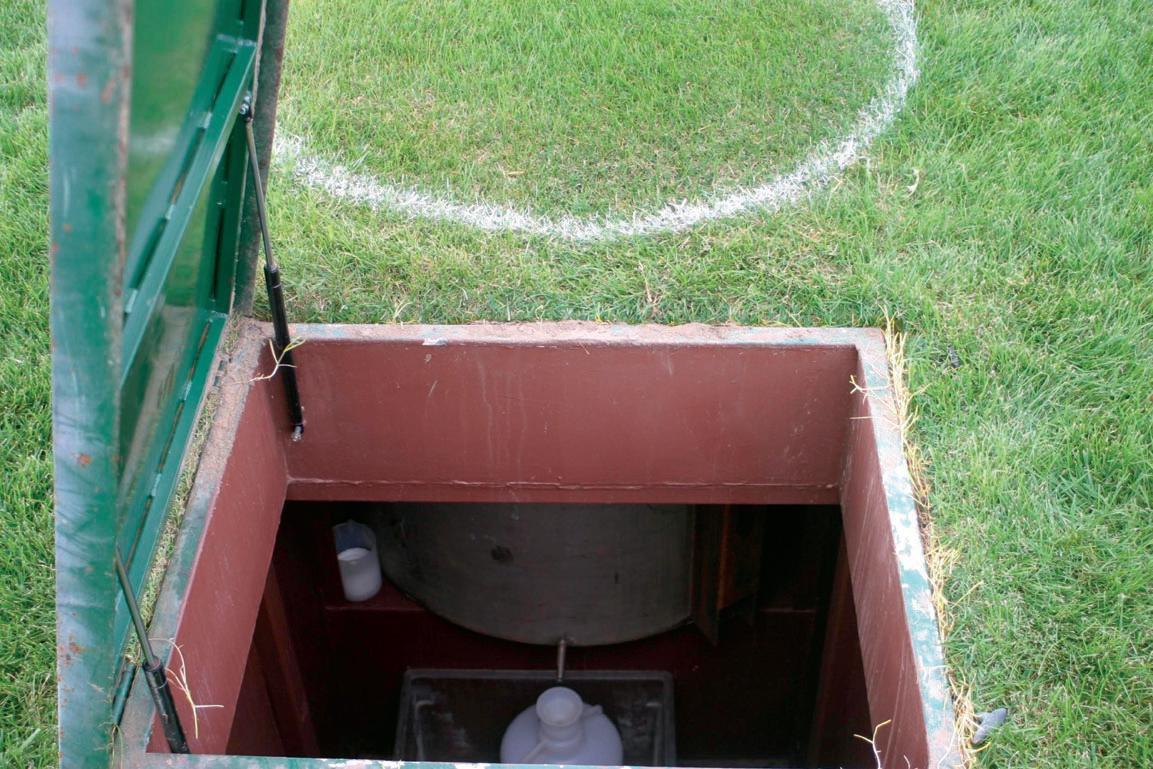


Leachate was collected from January through December in 2023. The mean NO3-N concentration in leachate for the low and high N rates was 0.8 and 4.1 ppm, respectively. Mean leachate concentration for the low N rate was basically unchanged from 2022 to 2023, 0.9 and 0.8 ppm, respectively. Mean leachate concentration for the high N rate increased from 1 to 6 ppm from 2018 to 2022 and then moderately decreased from 2022 to 2023, 5.7 to 4.1 ppm, respectively. After 6 years of the 5 lb. N rate, NO3-N concentration in leachate has increased from 1 ppm in 2018 to 4.1 ppm in 2023.
In the spring of 2022 reestablishment seeding research was conducted at MSU, University of Minnesota, University of Wisconsin, and Iowa State University. On three consecutive weeks in the spring of 2022, four creeping bentgrass cultivars and Two-Putt annual bluegrass were seeded into an existing putting green that was killed with glyphosate the previous fall. The bentgrass cultivars were Penncross, Declaration, Pure Distinction and A4. Previous seed germination research at the University of Minnesota found that some bentgrasses displayed high germination rates at low temperatures while others performed poorly.

We had poor germination and establishment across all locations in 2022. In addition to unfavorable temperatures that are often typical of establishing following winterkill, we had considerable amounts of creeping bentgrass survive and reemerge following the glyphosate applications. To eliminate the confounding factor of bentgrass not being completely killed by glyphosate applications, the turf was stripped from a green in the fall of 2022 so that in the spring of 2023 seed could be applied directly to bare soil.




Reestablishment research was conducted in 2023 at MSU, University of Minnesota, University of Wisconsin, and Iowa State University. The objective was to evaluate spring establishment rates of creeping bentgrass and annual bluegrass seeded three consecutive weeks. Seeding treatments were four creeping bentgrass cultivars (‘Penncross’, ‘Pure Distinction’, ‘Declaration’, ‘Penn A-4’), one annual bluegrass (‘Two-Putt’), and a 50/50 by weight mixture of Pure Distinction and Two-Putt. The first seeding date at each location corresponded to when soil temperature at a 2-inch depth was 40°F. After seeding each date, plots were lightly raked with a leaf rake to provide adequate seed to soil contact and starter fertilizer was applied at 1 lb. P/1000 ft.2. Overhead irrigation was applied when necessary to maintain a moist seed bed. Plots were fertilized with 0.1 lb. N/1000 ft.2 at 2, 4, 6, and 8 weeks after first seedling emergence for each date. The experimental design was a split-plot design with whole plot in randomized complete block design with four replications. The whole plot was seeding timing and subplot was cultivar. Data was collected weekly using a light box to assess percent coverage. Statistical analysis was conducted separately at each location. One location showed significance in seeding timing with the earliest seeding date having a higher percent coverage than middle and late seeding timing during the first two measurement dates. Two locations showed statistical significance in cultivar, with Penncross, Penn A-4, and Pure Distinction having the highest percent coverage among cultivars and Declaration having the lowest.
At MSU we conducted a reestablishment trial on a native soil annual bluegrass green that was killed with
glyphosate and diquat in the fall of 2022. Seeding occurred once soil temperature reached 40°F at a 2-inch depth. Seeding treatments were four creeping bentgrass cultivars (‘Penncross’, ‘Pure Distinction’, ‘Declaration’, ‘Penn A-4’), one annual bluegrass (‘Two-Putt’), and a 50/50 by weight mixture of Pure Distinction and TwoPutt. The early seeding date had the highest percent cover for the first 6 weeks of the trial and then there were no differences among the seeding dates.
There are three different research trials related to snow mold that we have conducted in cooperation with Dr. Koch at the University of Wisconsin. All these trials are completing their 2nd year of research in 2024. There are two trials studying the effect of nitrogen and potassium applications on snow mold incidence on a creeping bentgrass fairway. Trial 1 is analyzing the effect of annual rate of nitrogen and potassium on snow mold incidence. Trial 2 is analyzing the effect of timing of the last application of nitrogen and potassium on snow mold incidence. In addition to measuring snow mold incidence, we are also measuring turfgrass quality and tissue nitrogen and potassium levels.

The third trial is determining the effect of leaf mulch on snow mold incidence on Kentucky bluegrass. There are six different treatments, mulched and non-mulched leaves at low, medium, and high rates. Turfgass quality, smothering effect, and snow mold incidence are measured.

For all the snow mold research trials we did not have any snow mold occur in 2022-2023 so there were no differences among treatments. Unfortunately, it appears that we had the same result again following the winter of 2023-2024 with no snow mold occurring. The plots in Wisconsin did have snow mold in their plots the 1st year.
The MTF Founders Society funded the purchase of six winterkill sensor packages in 2020. The sensor package was developed by scientists at the University of Minnesota as part of the WinterTurf grant. Since 2020, we have been able to increase the number of sensor packages on golf courses in Michigan from the


initial 6 in 2020 to 11 in 2023-2024. The objective is to be able to develop a low-cost sensor package that would allow golf course superintendents to monitor winter conditions in real time and make decisions, for example on removing ice, to prevent winterkill. The golf courses with sensor packages in 2023-2024 were: Arcadia Bluffs, CC of Lansing, Egypt Valley CC, Keweenaw Mt. Lodge Golf Course, Marquette Golf Club, Meadowbrook CC, Oak Pointe CC, Prestwick Village Golf Club, Treetops, Walloon Lake CC, and Warwick Hills CC.
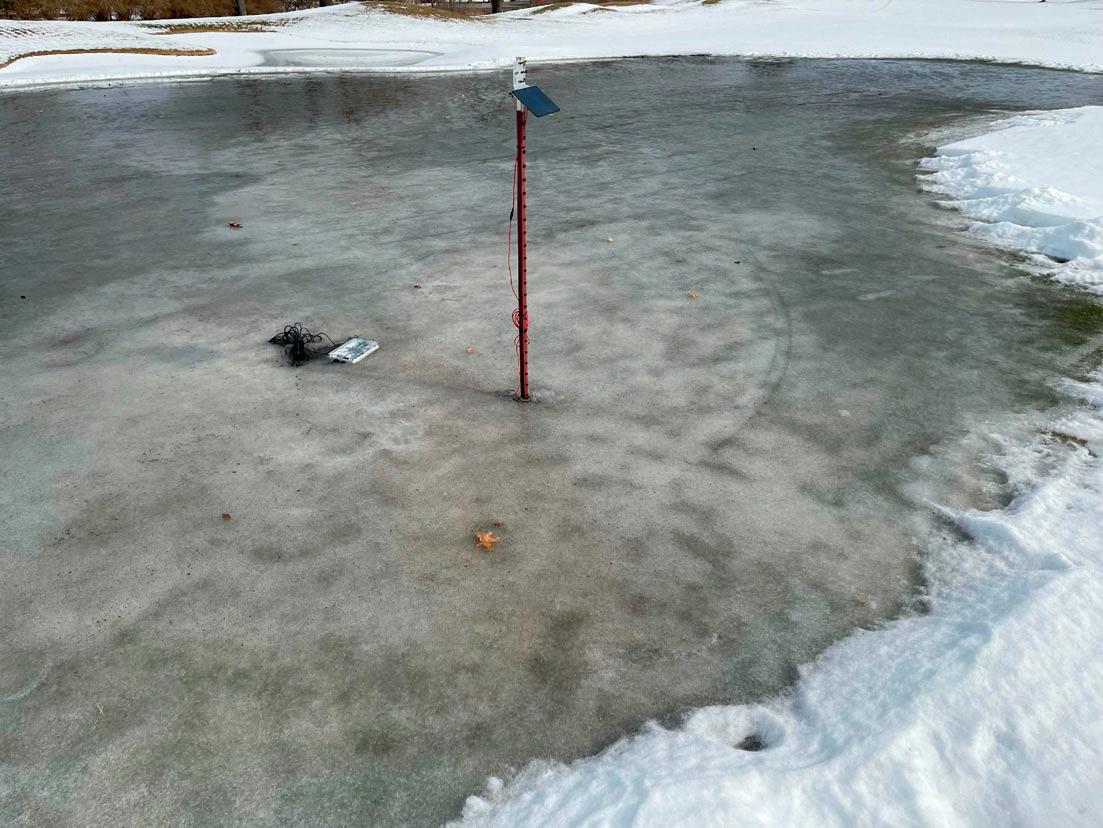



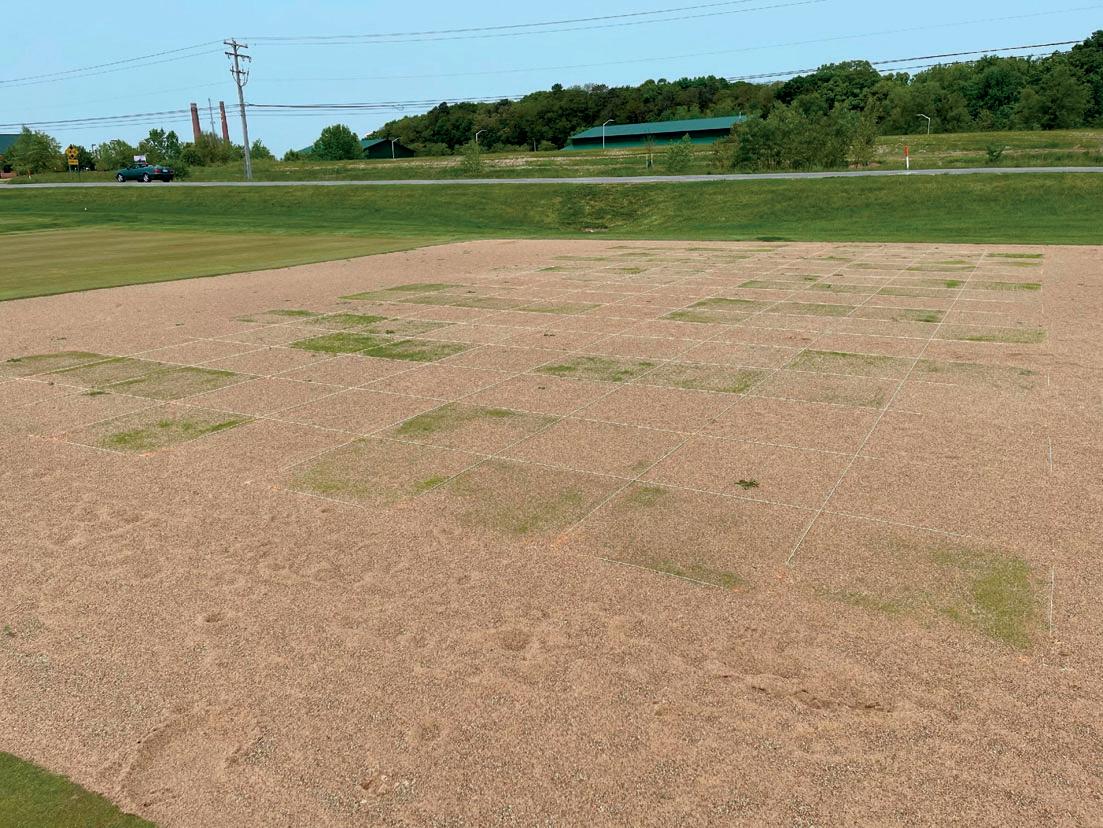
Michigan State University
Project Description: Accurate and early stress detection is essential to research and applied turfgrass management, so photosynthetic health and protection parameters need further evaluation for resource conservation and enhanced sustainability of turfgrass management. A limitation in turfgrass research systems is the inability to accurately quantify metabolic stress. For any stress put on turf system, it is unclear how turfgrass species are protecting their photosynthetic machinery (i.e. the most important food and power source essential to all turfgrasses). The photosynthetic health parameters evaluated here could revolutionize turfgrass product testing and management practice evaluations.

Methods: The experiment will evaluate field-based utility of photosynthetic health parameters such as NPQ, Phi2 and others by modifying a PhotoSynQ device for turfgrass use.
Expected Results: Development of methodology to monitor photochemical health during field conditions and abiotic stress
Benefit Group: Lawn/Athletic Field, Golf Course
Estimated project duration: One year




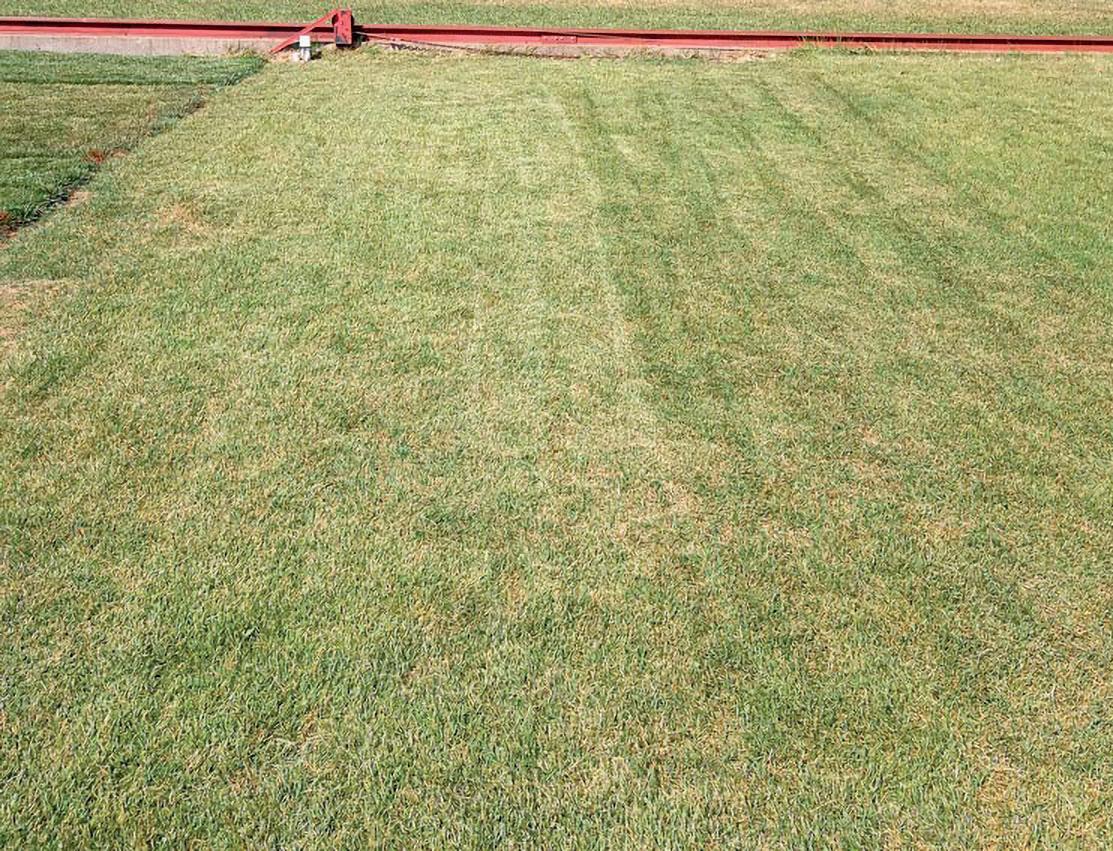

is declining. Raising the mowing height would be a viable and costeffective practice to adopt. But first, superintendents need more information on at what level and on approximately what date the mowing height needs to be raised to see any increase in winter survival. Thus, the objective of this study is to determine the effect of mowing height on winterkill survival of annual bluegrass putting greens. We hypothesize that raising mowing heights in September from a 0.125-inch standard height to higher levels of cut will reduce winterkill associated with ice cover on annual bluegrass putting greens.
Influence of fall mowing height changes and timing of the change on winter survival of annual bluegrass putting greens
MTF funding is requested for graduate student support (Ruilin Miao), facility fees, and consumable costs.

Project Description: In theory for perennial species, the accumulation of sugars from photosynthetic leaf tissues that can go into storage as starches is very important for winter survival and the quantity stored could be influenced by mowing height. The carbohydrates are largely transported from the leaves or root system and stored in crown or other overwintering structure. Theoretically, if annual bluegrass is allowed to develop more leaf surface area for photosynthesis, more carbohydrates could be stored and used for regrowth in the spring; however, annual bluegrass’s unique genetics and flowering capacity calls into question whether annual bluegrass will benefit from increased mowing heights and extra storage carbohydrates. Golf course superintendents may be reluctant to raise cutting heights of putting greens due to slower green speeds and the demand to maintain optimal playing conditions as long into the fall as weather permits play. Typically, if superintendents raise cutting heights at all it is when play

Methods: Research plots at the Hancock Turfgrass Research Center of annual bluegrass putting greens will be mowed at 0.125 inch mowing height until the following treatments with 4 replications begin: Mowing height treatments: Height 1: 5,10,12,15, always mow 0.125 inch for 9 weeks. Height 2: 7,9,13,20, mow 0.125 at start, 0.150 for week4, 0.175 for week 5 and 0.200 in all remaining weeks. Height 3: 3,8,16,19, mow 0.125 at start, 0.150 for week 2, 0.175 for week 3 and 0.200 in all remaining weeks. Height 4: 1,6,14,17, always mow 0.200 for 9 weeks. Turfgrass quality, normalized difference vegetative index, canopy height, root length, and root biomass will be measured in plots on a weekly basis starting in the late summer, through fall mowing treatments, and in the spring for winter survival ratings.. Turf plugs 4 inch in diameter will be taken from each plot in mid-November prior to soil freezing and brought into a low temperature growth chamber (-4°C).

Growth chamber methods. For ice treatment, plants will be misted under low temperature to develop an ice layer of 1.27 cm depth. Plants will be exposed to two ice treatments 1) no ice 2) ice cover (1.27 cm deep). Plants will be sampled at 0, 20, 40 and 80 days of ice cover. Lights in the chamber will be set to simulate an overcast winter day in Michigan (200 μmol m-2 s -1 with 10 h day length). Thus, a total of 128 turf plugs will be taken (4 replications x 4 mowing height treatments x 2 ice treatments x 4 sampling dates). On a given sampling day, turfgrass plugs will then be cut in half. Half of the plugs will go towards a regrowth


assay in a greenhouse (plants will be de-acclimated for one week in a refrigerator prior to transferring to the greenhouse) and percent regrowth will be documented weekly or on an as needed basis. Half of the turfgrass plug will be used for ice stress tolerance characteristics.
Expected Results: Enhanced recommendations regarding putting greens care will be the major outcome of this project. We expect mowing height to significantly influence winter survival of annual bluegrass.
Bene
fit Group: The benefit groups include golf courses and turfgrass scientists.
Estimated project duration: 2 years (initiated in summer 2021). The 2023 Spring season will be year 2 of field analysis of regrowth following winter and will conclude the study.

survival assessments are typically based on whole-plant regrowth that takes a minimum of 2 weeks for accurate assessment. A high-throughput method would increase efficiency of identifying germplasm with improved winter hardiness traits. We will evaluate a widely used cell viability assay, using triphenyl tetrazolium chloride (TTC), and compare cell viability with dyes.

WinterTurf: A holistic approach to understanding the mechanisms and mitigating the effects of winter stress on turfgrasses in northern climates (U of MN lead institution)
USDA-SCRI funded project. Requesting MTF funding for supplementation of researcher support (Devendra Chalise), facility fees, and consumable costs

Project Description: This is a large, multi-state project with broad objectives for investigating strategies to improve turfgrass winter survival. The objectives lead by Dr Holm include 1) developing a method for determination of crown viability correlated with whole-plant survival and 2) identifying physiological and metabolic factors associated with tolerance to anoxia and accumulation of toxic metabolites.
Methods: For objective 1) The most widely used method of testing cold tolerance using leaf electrolyte leakage is not necessarily correlated with actual crown viability in grasses. Consequently,
For objective 2) Under prolonged ice encasement, oxygen depletion is one of the most important factors leading to winterkill. The continued consumption of oxygen under ice, due to plant and microbial respiration, results in hypoxia or anoxia. Moreover, the shift to anaerobic respiration leads to changes in metabolism that result in accumulation of toxic fermentation metabolites. The ability to study deprivation in both controlled environment and field experiments is complicated by the ability to maintain consistent ice cover. We will expose plants to different durations of anoxia and evaluate various gas treatments to better understand inter- and intraspecific differences in survival under ice for informing phenotyping approaches.


Expected Results: These studies will provide fundamental information to facilitate breeding efforts for improved winter survival through the identification of mechanisms/traits associated with enhanced tolerance to ice encasement and freezing. We will also develop and implement an improved crown viability assay to enhance screening efficiency of other physiology and breeding studies. Information generated from the above studies will also provide information to better inform management practices associated with winter preparation in fall months as well as winterkill mitigation strategies (e.g. defining critical gas concentrations or byproducts to trigger ice removal; risks of post-anoxia injury following ice or cover removal).
Benefit Group: The benefit groups include golf courses, athletic fields, homelawns, and turfgrass scientists since the project outcome is new knowledge of turfgrass resistance mechanisms to winterkill for research and breeding purposes.
Estimated project duration: 4 years (2021-2025)


Michigan State University
February 2024

How the MTF funding was used to support project(s): Support funding allowed researchers to evaluate annual bluegrass seedhead suppression potential in PGR products (alone or in combination with Proxy) applied during the fall, winter and spring on a mixed Poa annua/Agrostis solonifera green.
Project update: PGRs such as Proxy and Anuew applied during the fall have been shown to decrease annual bluegrass seedheads the following spring in fairways. An experiment was initiated at the Hancock Turfgrass Research Center, East Lansing, MI where we tested different combinations of PGRs and application intervals to assess annual bluegrass seedhead suppression efficacy on green height turfgrass. Initial fall applications (timing code A) were applied on 28 November 2022. Sequential applications (B and C) were made on 13 February 2023 (12GDD base 32) and 6 March 2023 (68 GDD base 32) respectively.

Table 1. Effects of treatments on Poa annua seedheads (Percent
Results: We expected to see similar results on green height turf as has been observed on fairway height turf. Our data indicates significant seedhead suppression can be achieved with early applications of PGRs during the winter and early spring.
at the Hancock Turfgrass Research Center, East Lansing, MI—2023.



Benefit Group: This research will benefit golf courses and help superintendents to better plan how to deal with annual bluegrass during spring green up. In Michigan, annual bluegrass typically produces seedheads during May, when


golfers are eager to hit the courses. The seedheads are bright silver in color and are considered by some to be unsightly on greens and fairways. Carefully planned PGR applications during the off season can help minimize seedheads and make for a more aesthetically pleasing start of golf season.
Future Research: Our 2023 trial was a popular stop during the 2023 HTRC field day and has garnered a lot of interest. Many superintendents were curious about application timing options and further suggestions for additional treatment combinations were discussed. Following up on our 2023 trial, we decided to run a similar large trial this year in coordination with Adam Van Dyke of Professional Turfgrass Solutions. He conducts numerous scientific studies annually and is mirroring our trial this year at his site in Utah.


Table 2. Poa annua seedhead control trial #2 (2024) at the Hancock Turfgrass Research Center, East Lansing, MI—2023.
Figure 1. 2023 Annual bluegrass seedhead suppression trial in March 2023, 2 weeks after application C at Hancock Turfgrass Research Center, East Lansing-MI.
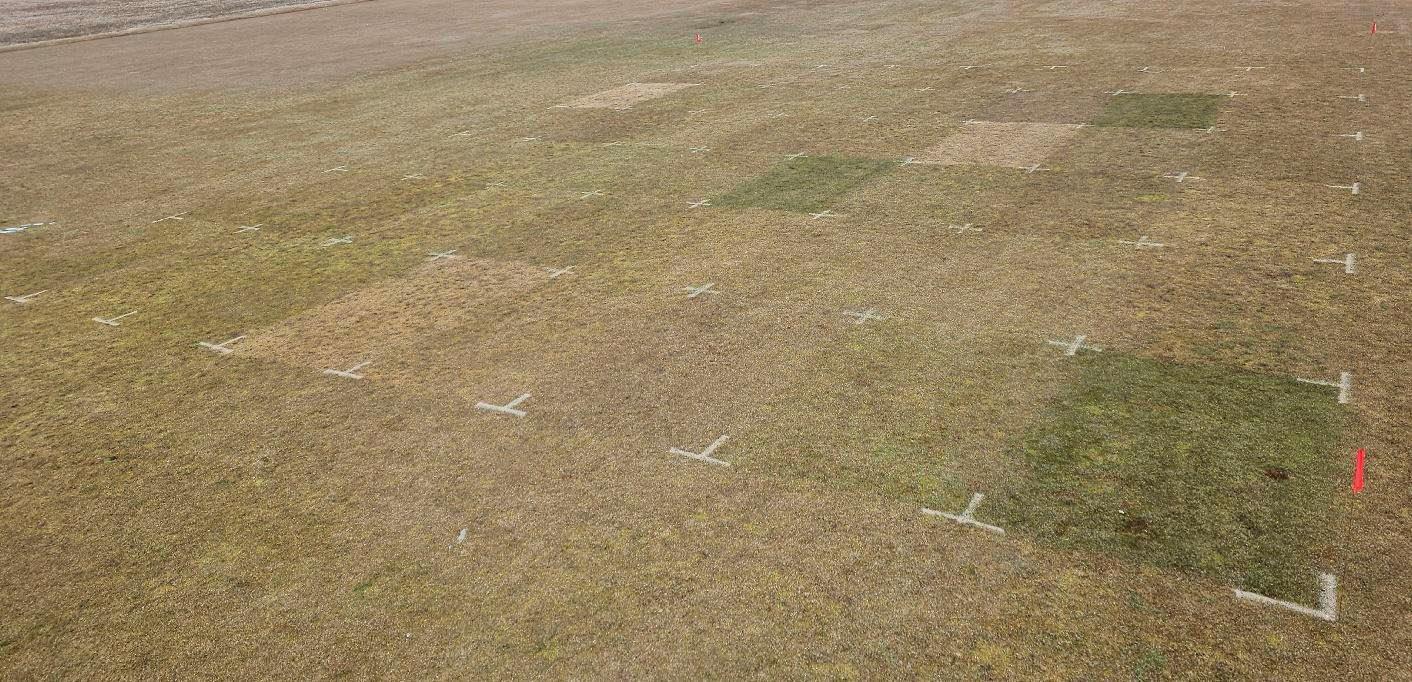


Figure 2. 2023 Annual bluegrass seedhead suppression trial in May 2023, 10 weeks after application C at Hancock Turfgrass Research Center, East Lansing-MI.
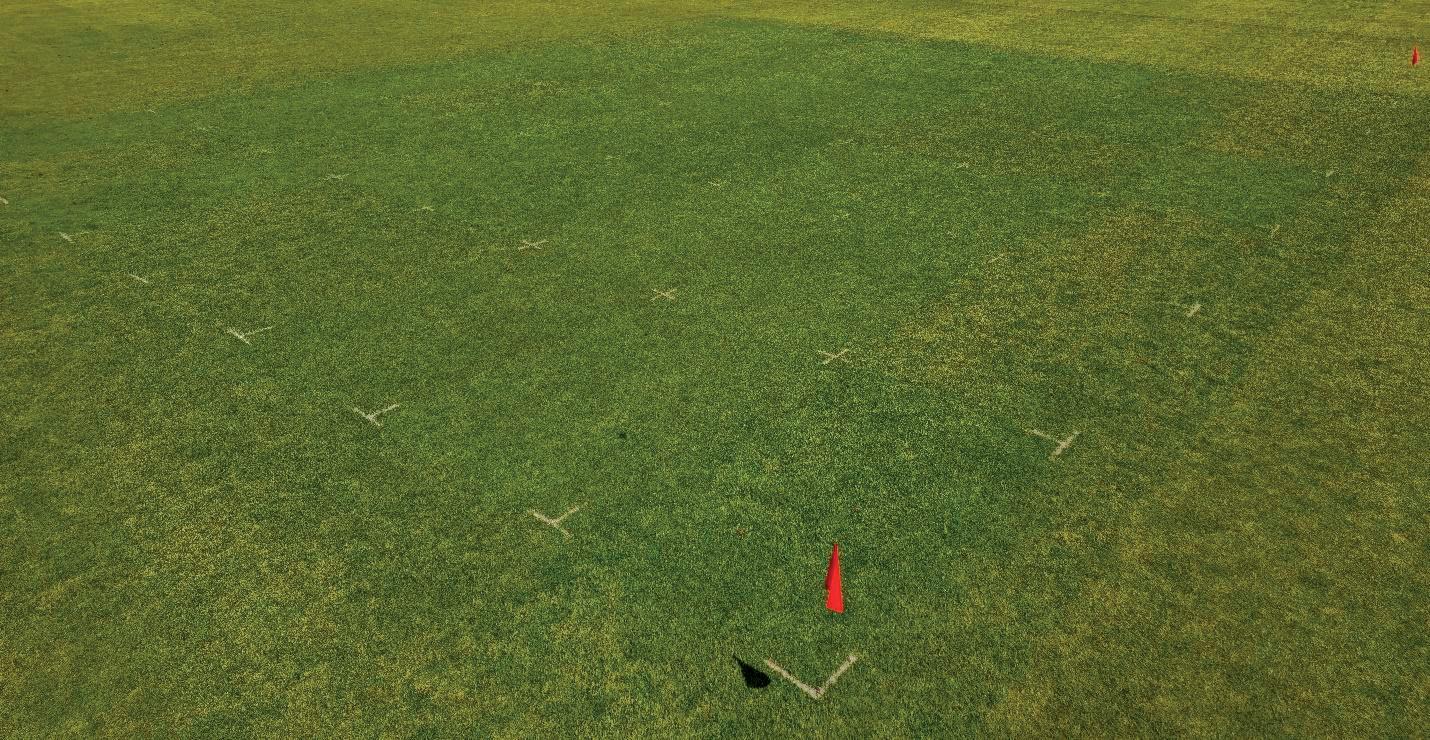

Figure 3. 2024 Annual bluegrass seedhead suppression trial #2 (new study) in Feb 2024, 2 days after application B at Hancock Turfgrass Research Center, East Lansing-MI. Application A was applied on 12/6/23 and application B was applied on 2/6/24.
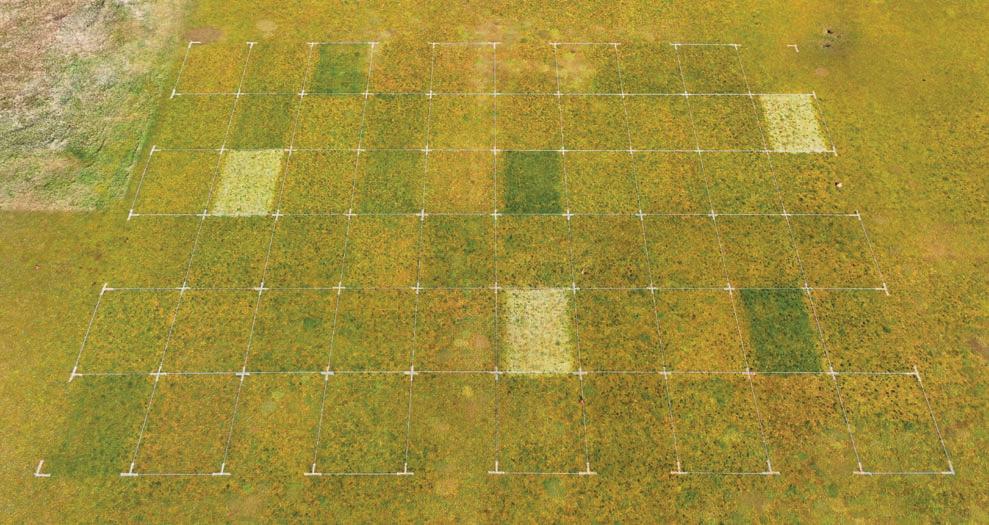


How the MTF funding was used to support project(s): Support funding allowed researchers to evaluate weed control and soil effects from dried leaf matter mulched into turfgrass plots.
Project update: An experiment was established at the Hancock Turfgrass Research Center, East Lansing, MI in the fall of 2021. During 2022 and 2023, soil temperature and volumetric water content data were gathered throughout the winter and weed populations were evaluated in the spring. Mulch applications were made in November 2021 and 2022.
• Mulching leaves into turf in the fall can significantly reduce weed populations in spring.
were mulched had significantly fewer clover weeds than the nonmulched control and although there were no significant differences in the percentage of dandelion weeds between the mulched and non-mulched treatments, treatments that were mulched had significantly fewer dandelion flowers in April than the control.
Table 3. The effects of herbicide and mulch on surface temperature in lawn height turf, evaluated from January to April at the Hancock Turfgrass Research Center, East Lansing, MI—2023.



• Lawn height treatments receiving 20 lbs of dried mulch in November of 2021 showed significantly less dandelions and dandelion flowers than the nontreated control in May of 2022.
Results: 2023 Results for the lawn height trial initiated in 2021 have corroborated with findings of previous, related research conducted at MSU. From January to April, treatments that were mulched had significantly higher volumetric water content than the nonmulched treatments. With the exception of a few early winter rating dates where plots were under snow cover, treatments that were mulched had significantly warmer surface temperatures than the non-mulched treatments. Treatments that
Table 4. The effects of herbicide and mulch on soil moisture in lawn height turf, evaluated from January to May at the Hancock Turfgrass Research Center, East Lansing, MI—2023.




Table 5. The effects of herbicide and mulch on dandelion populations in lawn height turf at the Hancock Turfgrass Research Center, East Lansing, MI—2023.






Table 6. The effects of herbicide and mulch on clover populations in lawn height turf at the Hancock Turfgrass Research Center, East Lansing, MI—2023.
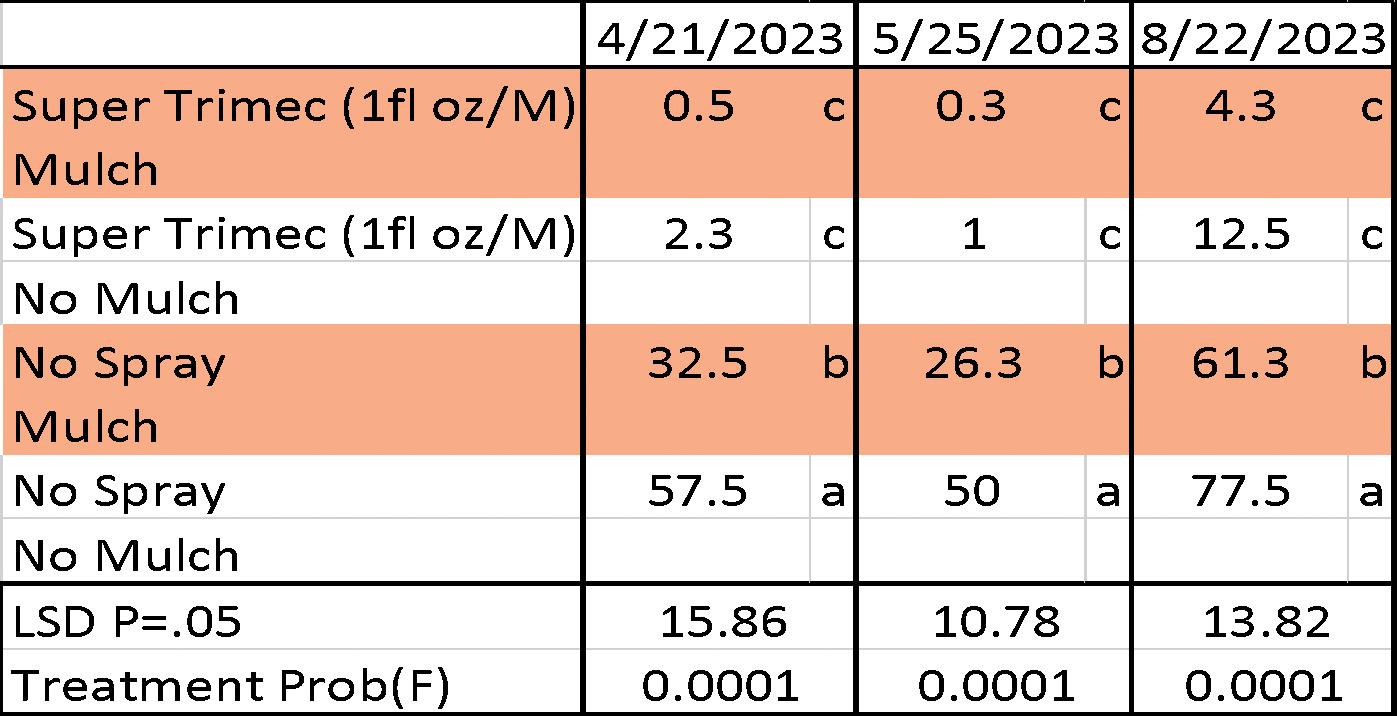
Figure 6. Lawn Height Maple Mulch Trial dandelion populations in May 2023 at Hancock Turfgrass Research Center, East Lansing-MI.
Benefit Group: These experiments will benefit golf courses and home lawn care operators. Research could lead to better cultural practice recommendations. If mulching in leaves during the fall improves soil health and controls weeds, then seasonal herbicide and fertilizer inputs could be minimized and financial costs cut.


Figure 4. Lawn Height Maple Mulch Trial snow cover in January 2023 at Hancock Turfgrass Research Center, East Lansing-MI.


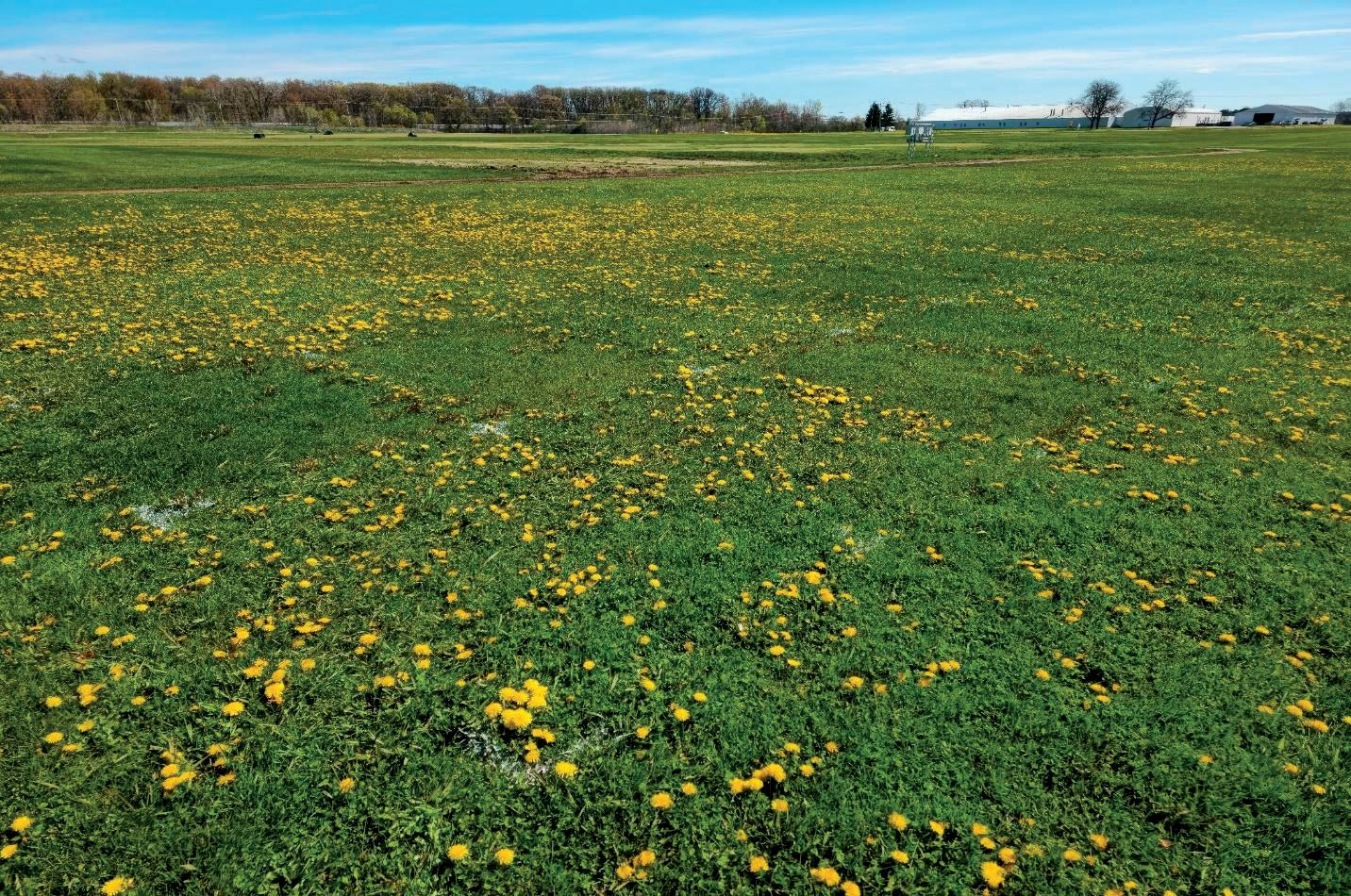
Future Research: Our 2023 study results have led to a follow up trial using pelletized leaf mulch. One hypothesis is that pelletized leaf mulch could potentially be applied in larger quantities without smothering the turf. Pellets will work their way down through canopy to the soil level and decompose without forming a mat of decomposing mulch on top of the foliage. Observation of pellet breakdown process will be interesting and data results could give us a better idea of how the mulch controls weed populations.
Figure 5. Lawn Height Maple Mulch Trial clover populations in August 2023 at Hancock Turfgrass Research Center, East Lansing-MI.

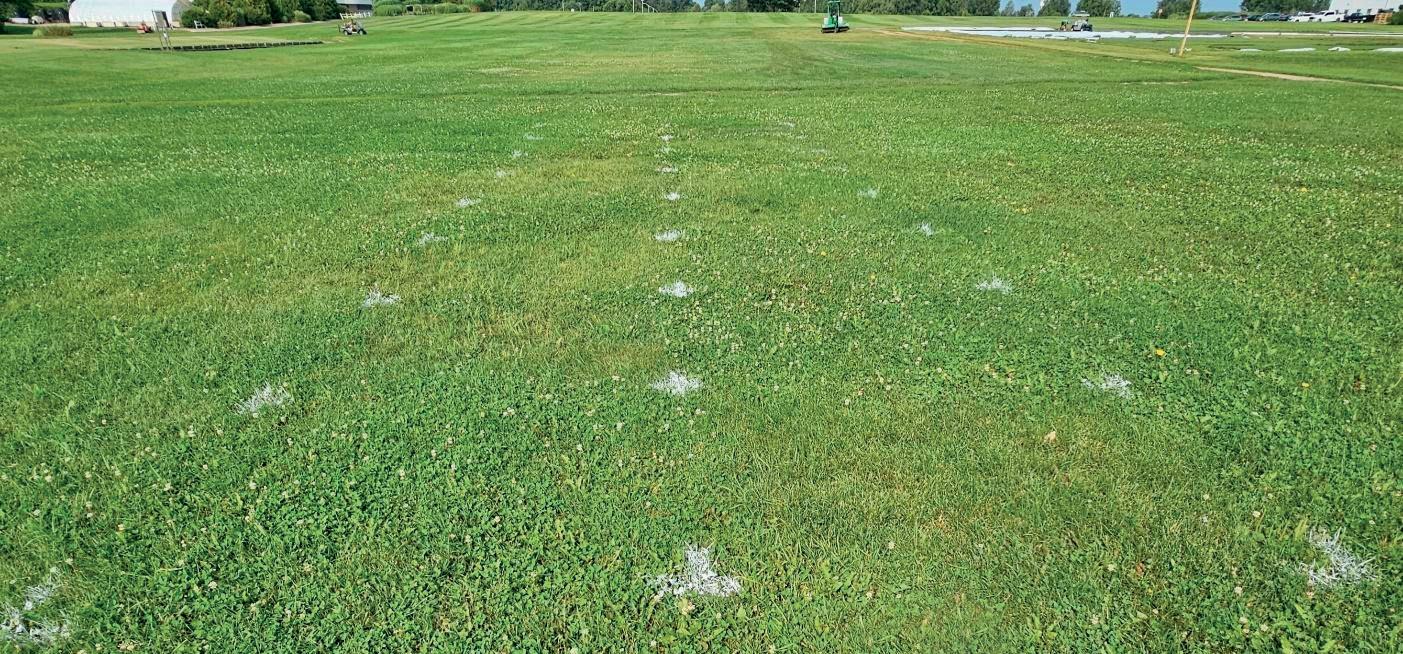


How the MTF funding will be used to support project(s): Support funding will allow researchers to evaluate the effects of pelletized maple leaf mulch on turf and soil health when applied to fairway height turf in winter.
Project update: An experiment was established at the Hancock Turfgrass Research Center, East Lansing, MI in the winter of 2023. Soil temperature and volumetric water content data will be gathered throughout the winter and spring. Soil profile pictures and core samples were taken prior to

application and follow up soil samples will be analyzed for differences in spring after pellet decomposition. 1350 grams (10L volume) of maple mulch pellets were applied to each plot on December 15, 2023.

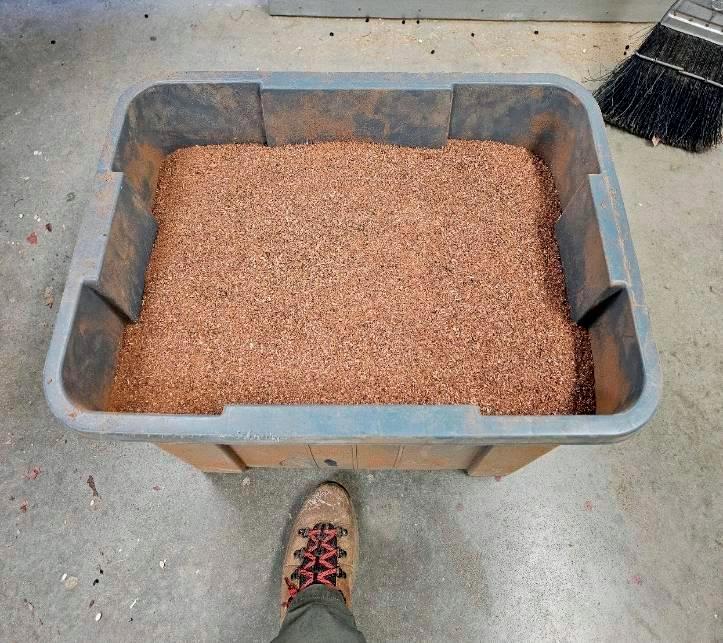


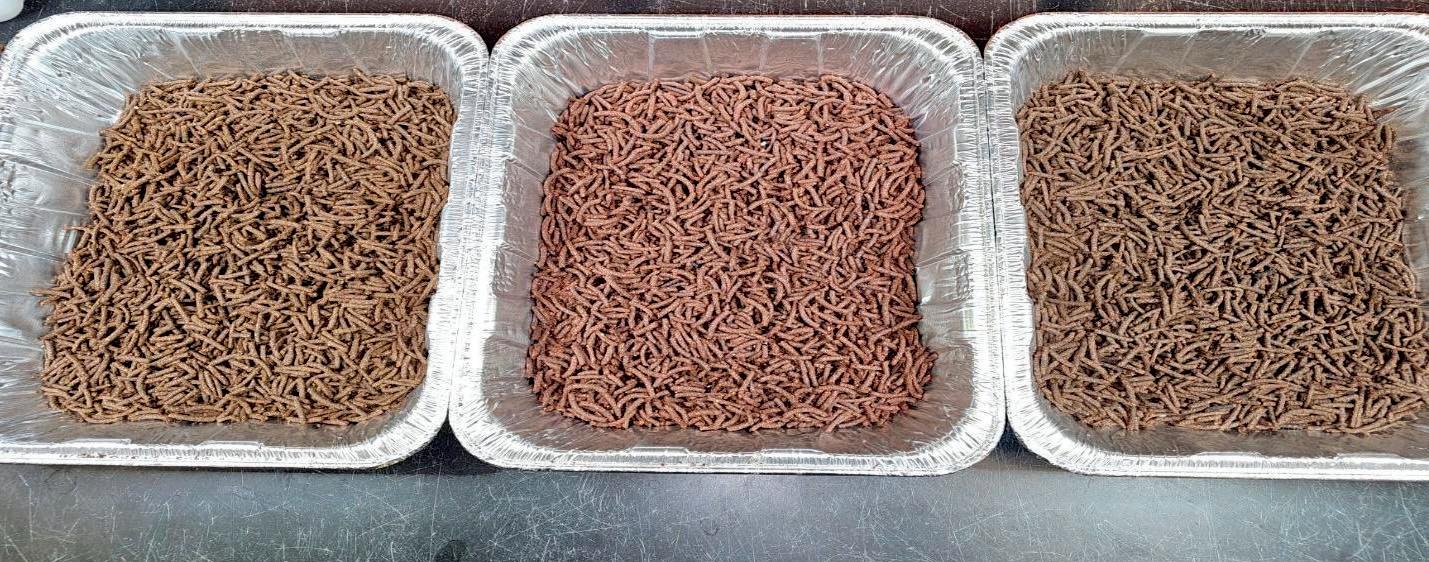


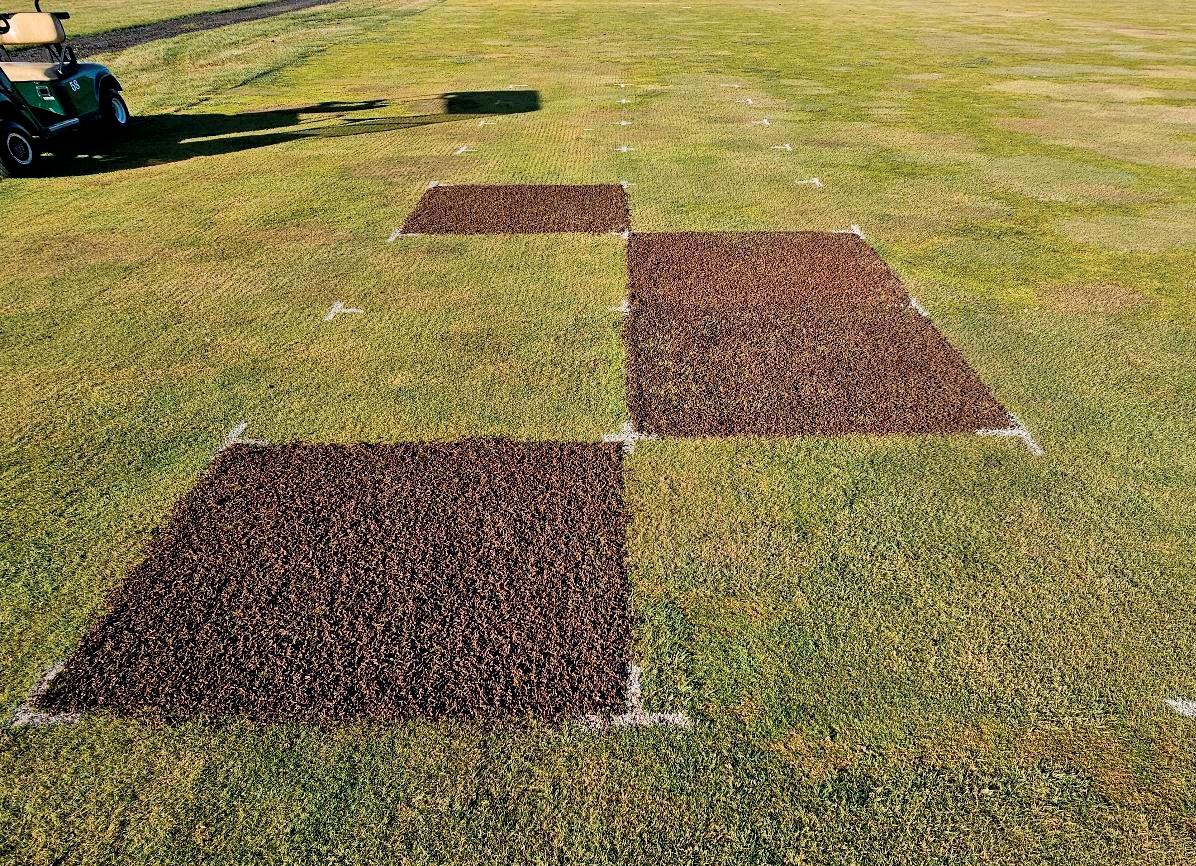

PROJECT NAME:
Evaluating GDD model accuracy when applying PRE and POST emergence herbicides for crabgrass control

How the MTF funding will be used to support project(s): Support funding will allow researchers to evaluate the accuracy of GDD models when making PRE and POST emergence herbicide applications for crabgrass control. Percent crabgrass cover will be visually estimated throughout the growing season.
Project update: Two trials were initiated in 2023 and will be repeated in 2024. Both are identical trials but one was dethatched prior to applications in an attempt to encourage crabgrass and one was not. These trials are multi-factorial design and will evaluate the efficacy of different PRE herbicides when applied at various Growing Degree Days on crabgrass control.
Results: By the end of the 2023 trial, crabgrass control was poorest when PRE herbicides


were applied at 1270+ GDD. Herbicide had no effect on crabgrass control across GDD application timings. The combined effects of GDD application timing and herbicide were observed 2 MALA in the Dethatched trial, where for Dithiopyr and Pendimethalin, the level of crabgrass control was significantly reduced when applications were made after 750 GDD. Across herbicides, crabgrass control was significantly reduced when applications were made at POST GDD. These data demonstrate the importance of PRE herbicide timing. That is, when applied too late in the season, the level of crabgrass control that these products offer declines drastically.
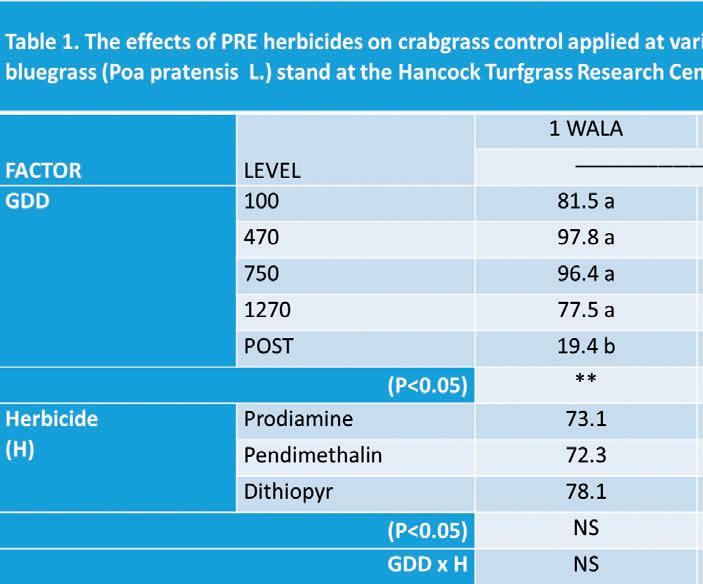
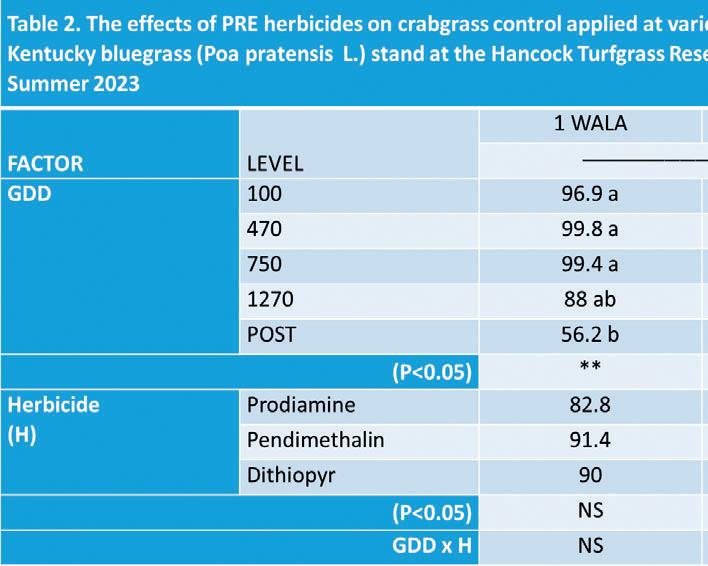
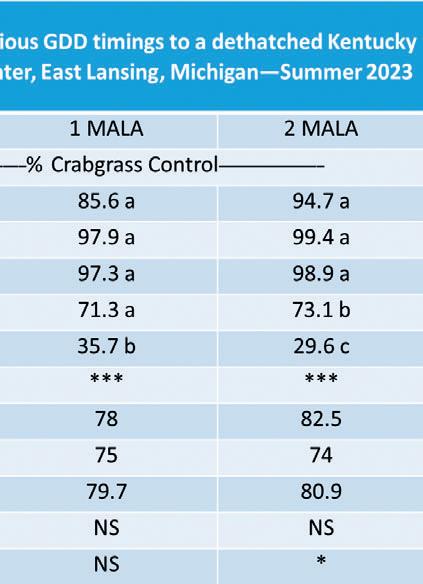

Benefit Group: This research will benefit golf courses and home lawn care operators by suggesting optimal application timings for PRE-emergence herbicides for crabgrass control. It will also demonstrate the effectiveness of the GDD model in predicting when to make applications.
How the MTF funding will be used to support project(s): Support funding allowed researchers to determine if a ride on sprayer (Perma Green, Steel Green, Z Spray) can effectively deliver product to the target as compared to the standard practice of using a shower head nozzle.
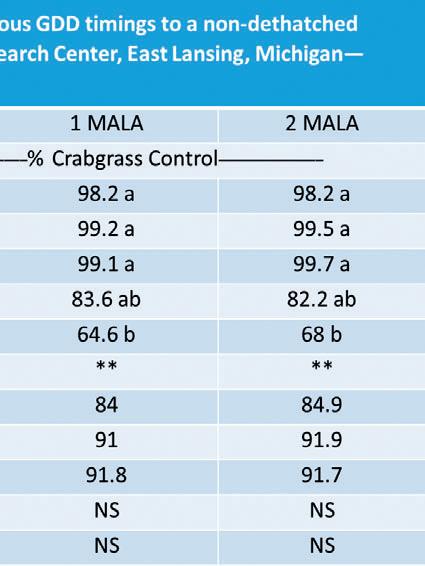

Project update: Since many lawn care operators are now applying products using a ride on sprayer, it is important that the efficacy of these modes of delivery be evaluated. Our trial simulated a ride on sprayer by using a hand held boom with air induction nozzles (15 GPA, AI 11002 nozzles on a 20-inch spacing at a 2ft. height). Ground sprayer was simulated using a boom with flat fan nozzles (50 GPA) and shower head nozzle was a Chemlawn Gun (2 gallons/1000ft^2). The first application was made on June 13, 2023 and a follow up application was made on July 14, 2023. Crabgrass control was evaluated.

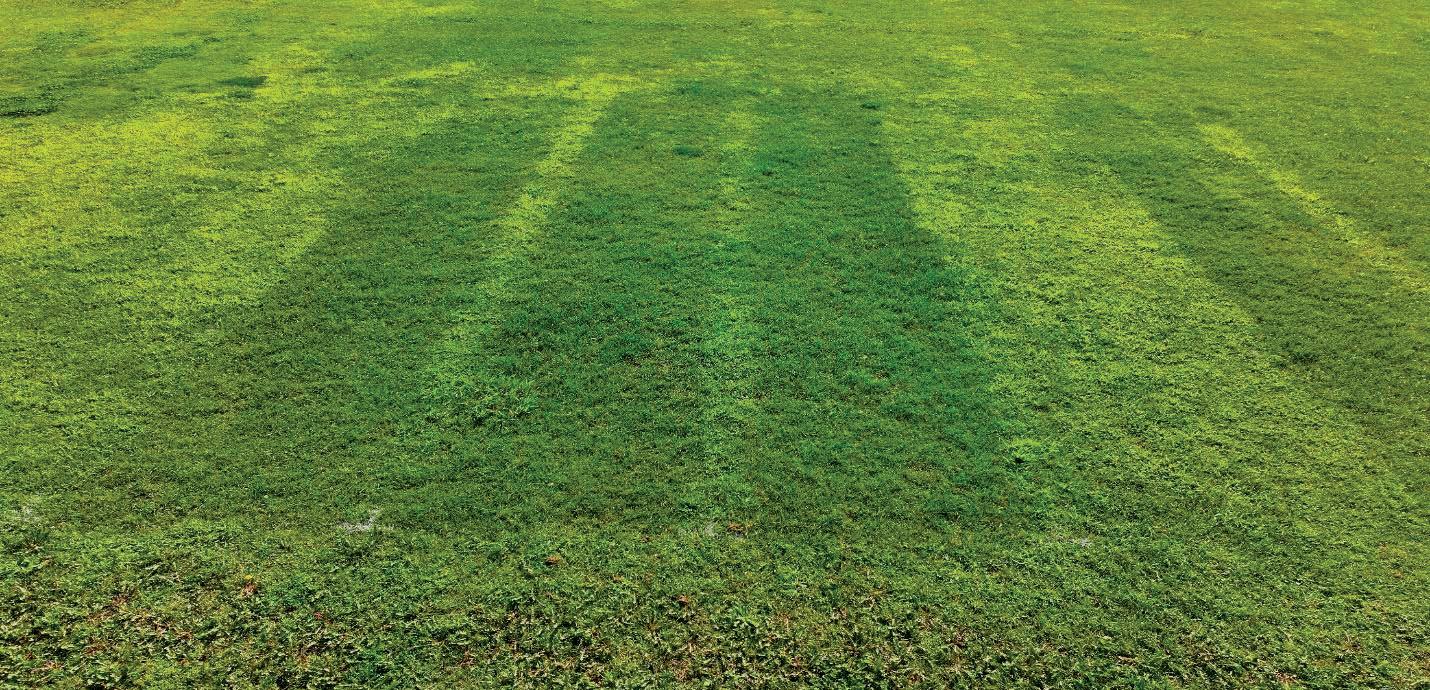


Results: Our data indicate similar levels of crabgrass control can be achieved using ride on sprayers compared to the standard practice of using a shower head nozzle. Lawn care operators may be able to lower costs and increase time efficiency without sacrificing weed control by making applications with a Perma Green or other ride on sprayer.
The addition of Pylex also seems to increase the rate of control. While not statistically significant, treatments with a lower rate of Drive XLR8 combined with Pylex generally resulted in less crabgrass than the treatment with a higher rate of Drive XLR8 alone.


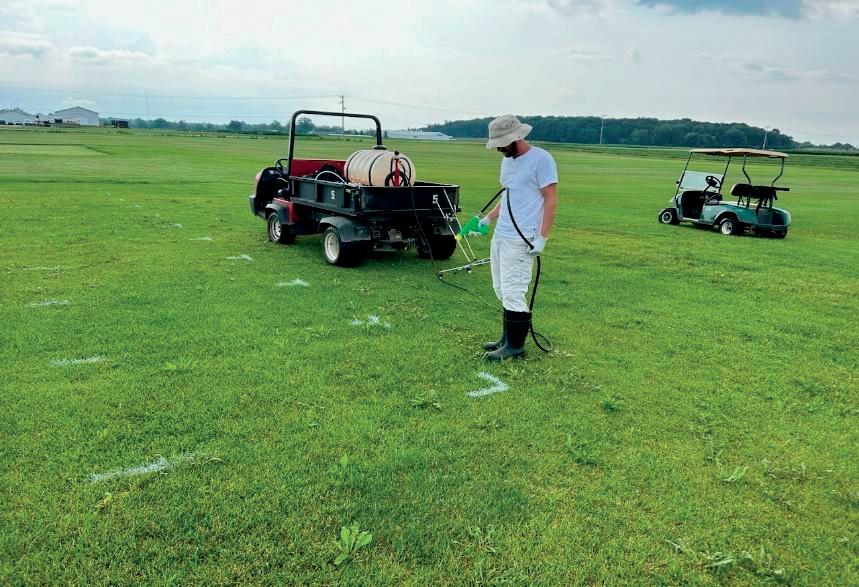
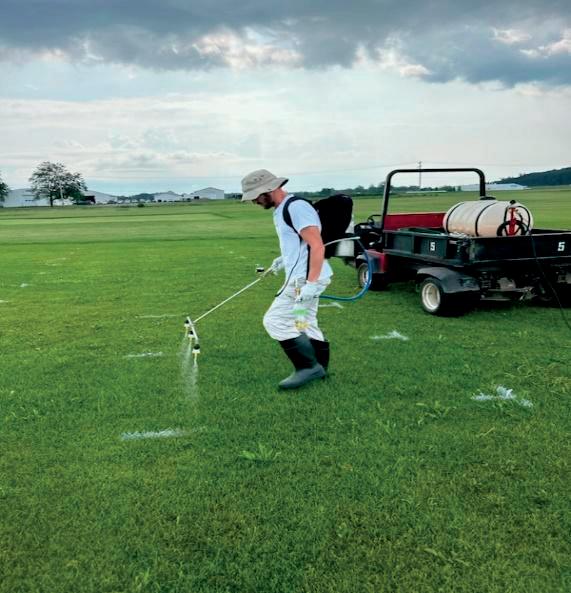

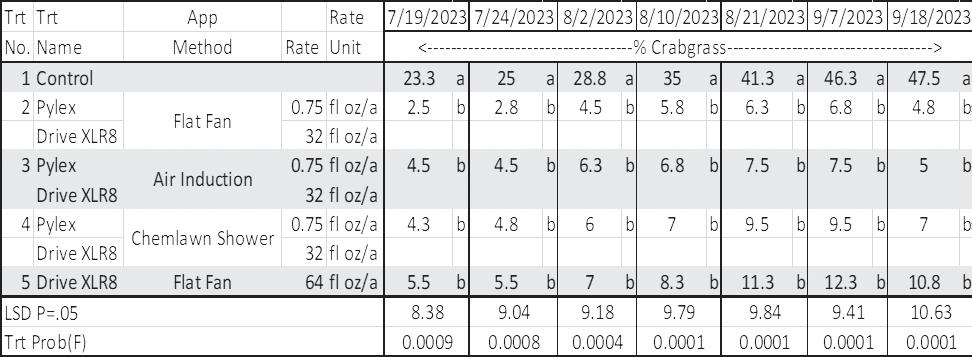

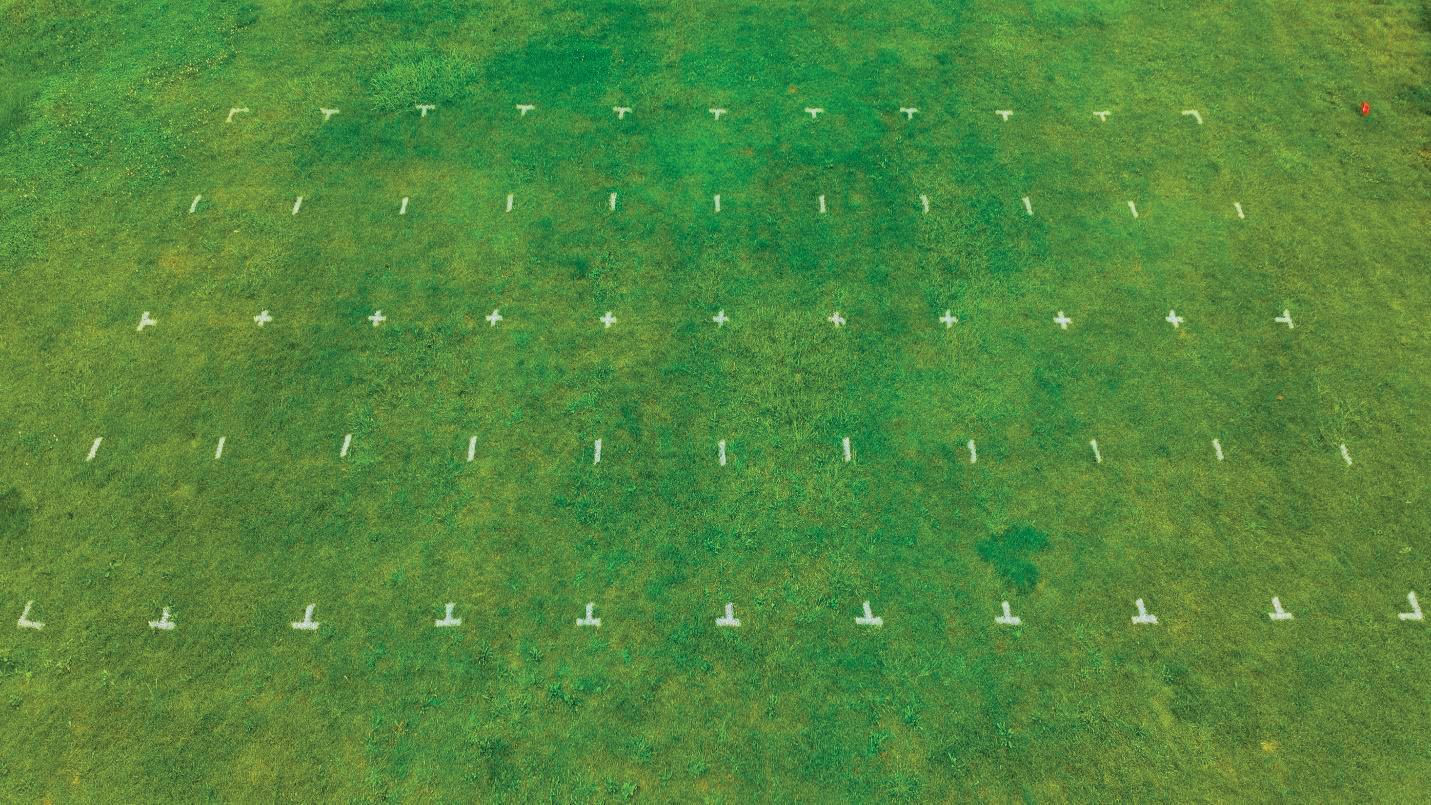

How the MTF funding will be used to support project(s): Support funding will allow researchers to evaluate different management practices for golf course native areas and develop optimal seeding rates, stand mixes and mowing regimes for these low maintenance areas.

Project update: Since many Golf Course Superintendents are interested in knowing the optimal seeding rates to use for low input native areas, we decided to focus on seeding rates and species mixes for the first year. We prepared 16,000 square feet and will be evaluating EcoStar Hard Fescue and Marco Polo Sheep Fescue at three different seeding rates. Turf quality, density and weed populations will be evaluated. After looking at establishment data in 2024, we will follow up with studying different mowing heights, frequencies and their effects.

Table 7. Native/No Mow Area Trial plot plan at Hancock Turfgrass Research Center, East Lansing-MI.
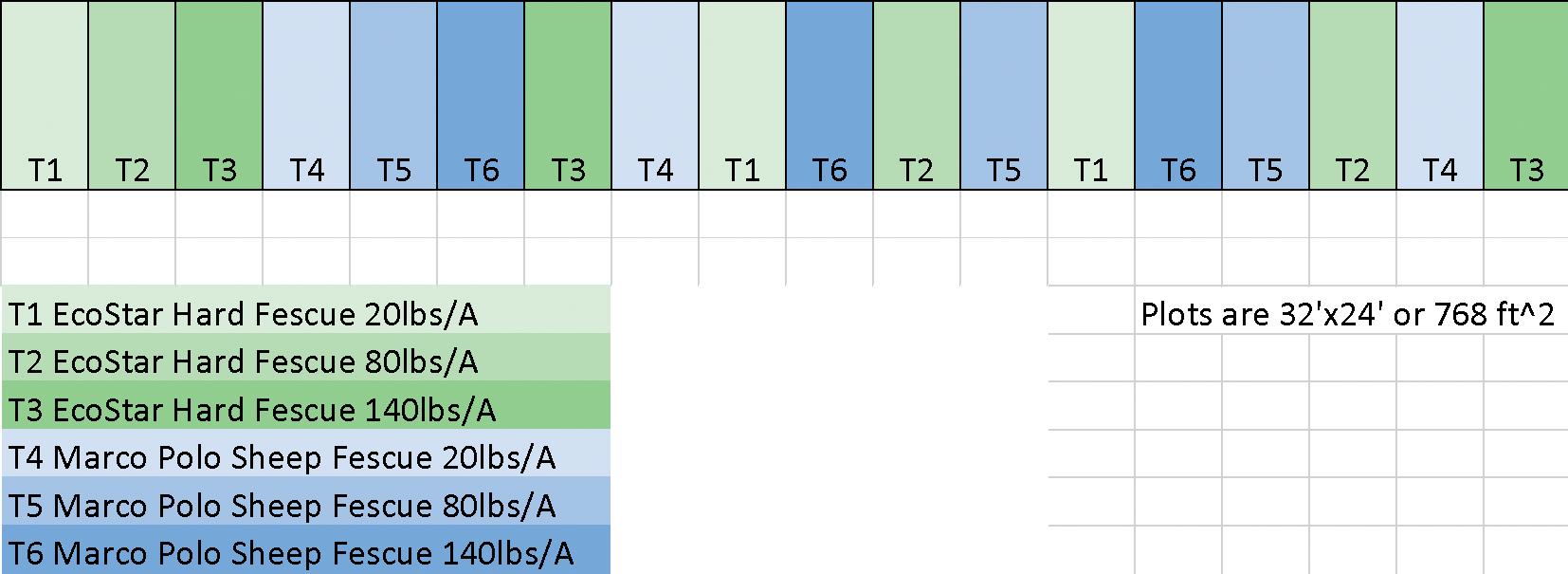
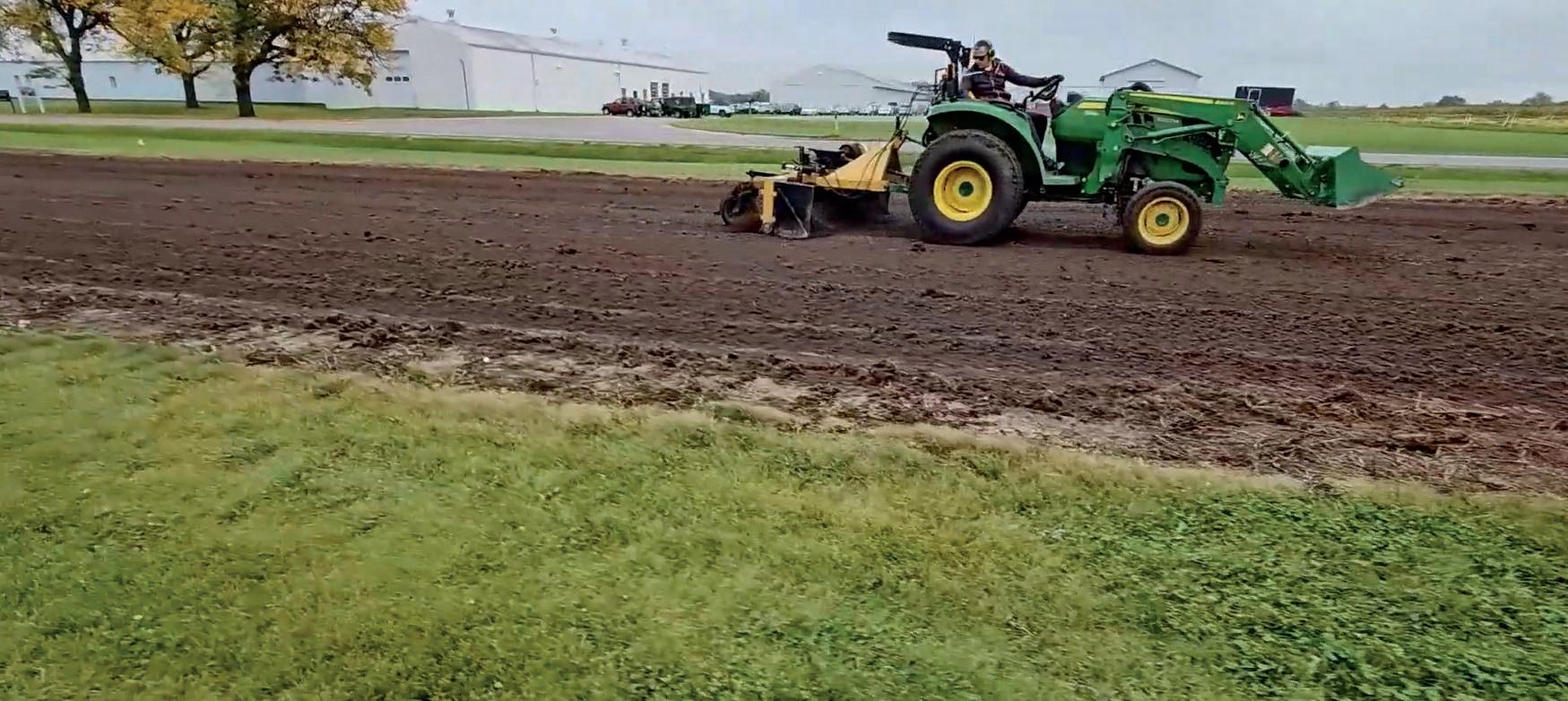


Figure 13. Native/No Mow Area Trial being established in September 2023 at Hancock Turfgrass Research Center, East Lansing-MI.

Figure 14. Native/No Mow Area Trial being established in September 2023 at Hancock Turfgrass Research Center, East Lansing-MI.
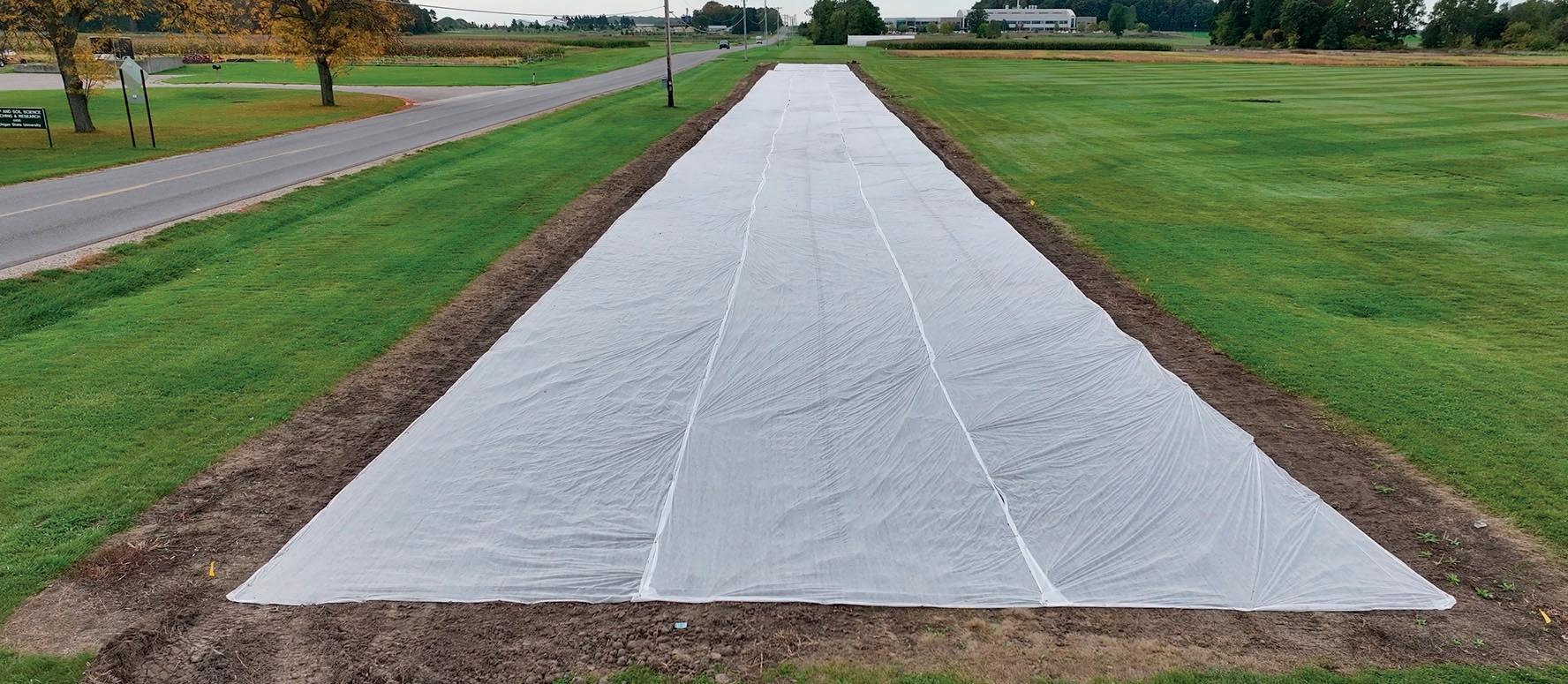



Figure 15. Native/No Mow Area Trial being covered in October 2023 at Hancock Turfgrass Research Center, East Lansing-MI.
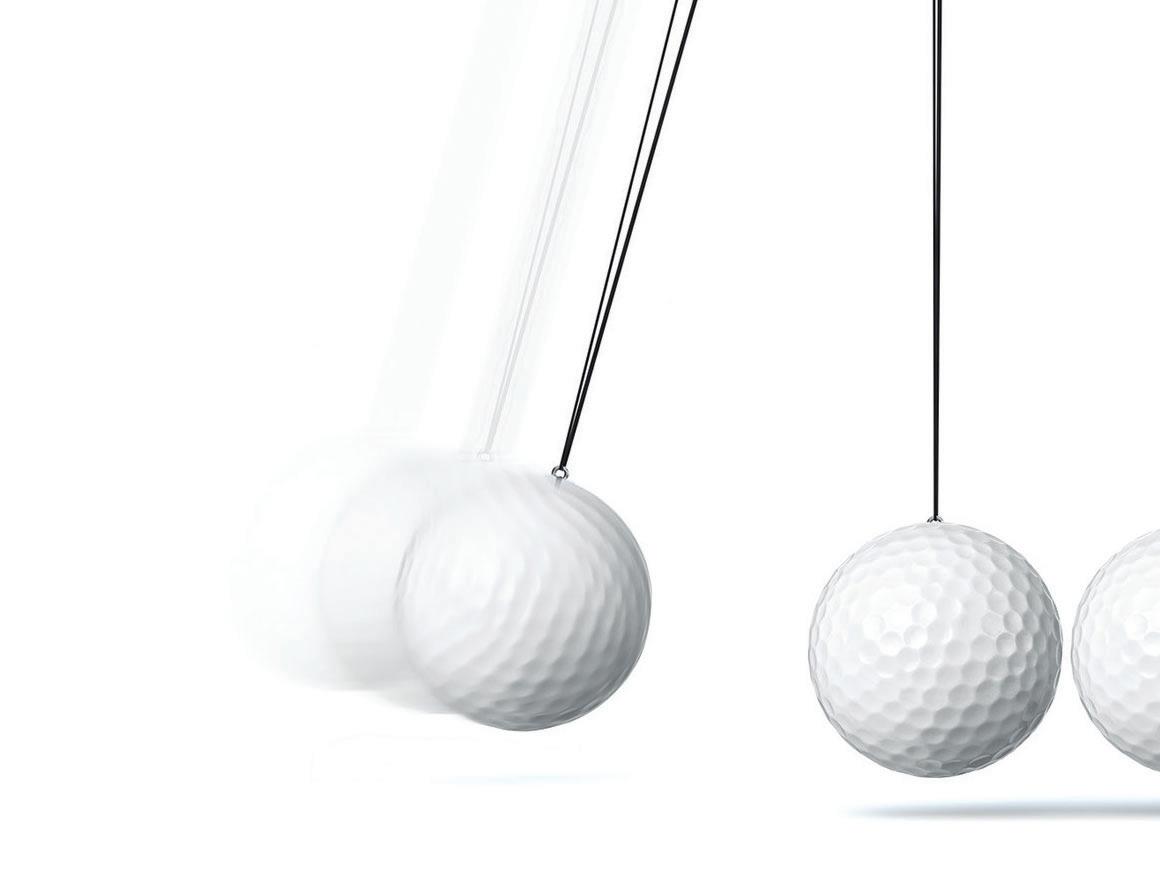

Featuring three leading active ingredients in different FRAC groups, Posterity® XT and Posterity Forte fungicides are the driving forces for powerful disease protection that lasts.
DEAD SPOT control plus TAKE-ALL ROOT ROT control
BROAD-SPECTRUM CONTROL of more than 25 cool-season turf diseases on fairways, tees, greens or roughs UP TO 28 DAYS OF CONTROL of more than 20 diseases including BROWN PATCH,SUMMER PATCH and DOLLAR SPOT UP TO 28 DAYS of strong DOLLAR SPOT control with added BROWN PATCH and LEAF SPOT protection
Find your fit at GreenCastOnline.com/PosterityXT and GreenCastOnline.com/PosterityForte or contact your local Syngenta territory manager: Eric Schutman | eric.schutman@syngenta.com | 248-392-8446
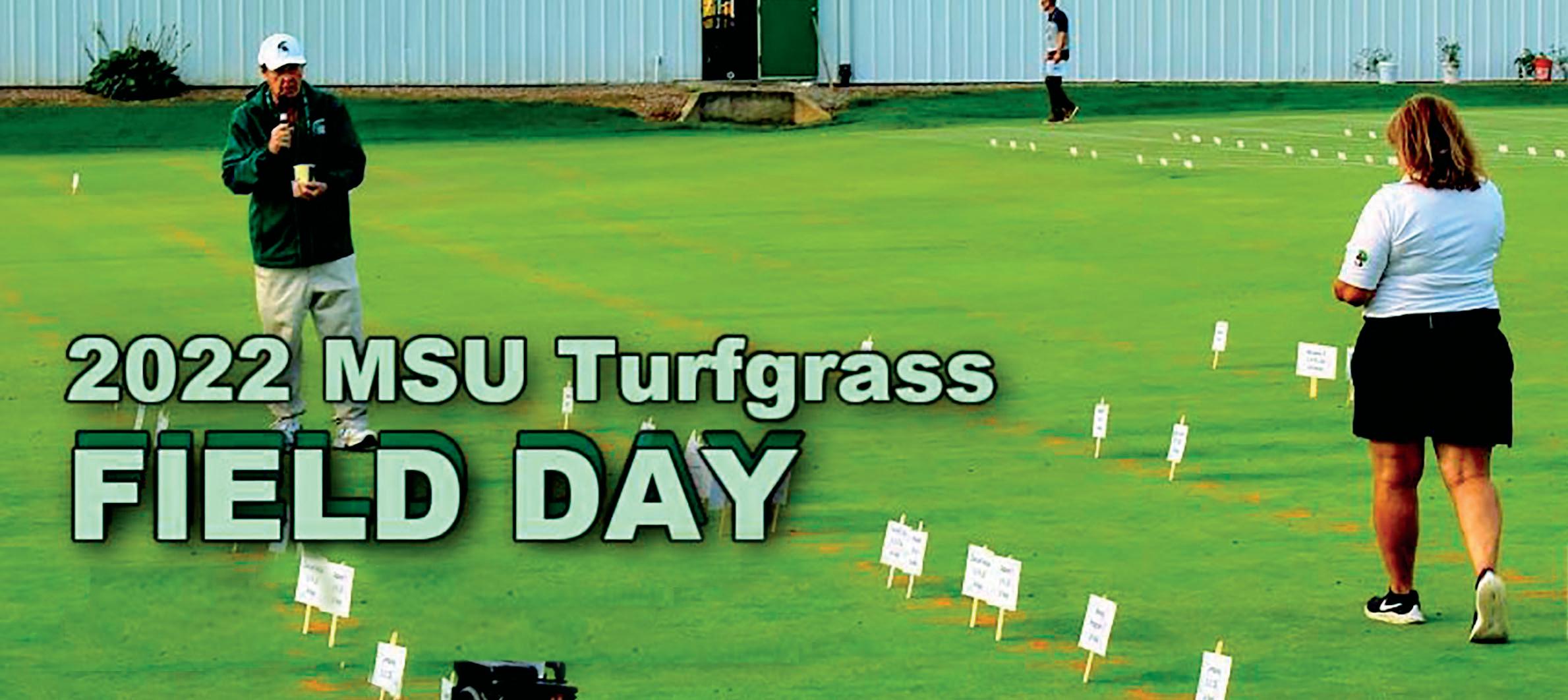

8:00 AM - 2:00 PM
Location: Hancock Turfgrass Research Center
Cost: $70 Morning Session/ $60 MTF Members
$40 Afternoon Session/ $30 MTF Members
Pre-Registration Online thru August 12, 2024
CORPORATE SPONSORSHIPS:
Bottled Water Sponsorship – $500.00
Coffee Cup Sponsorship – $500.00
Coffee and Donuts Sponsorship – $500.00
Corporate Lunch Sponsorship – $500.00
Support turf research at MSU by becoming a lunch sponsor at Field Day. Only 4 sponsorships will be sold, sponsors will be acknowledged during opening comments and with signage.
Lanyard Sponsorship – $1,000.00
MDARD CREDITS AVAILABLE
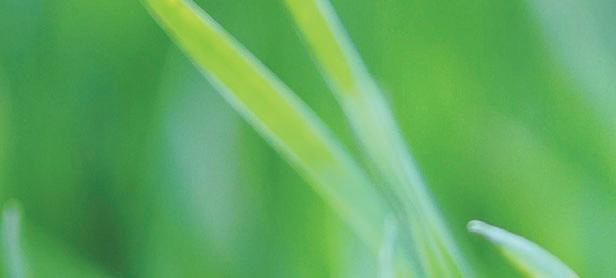

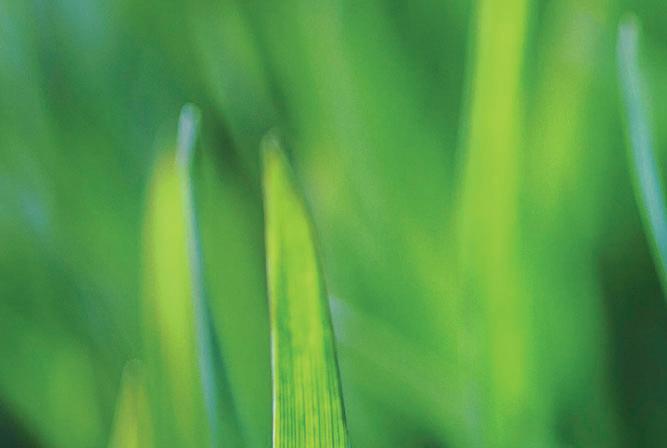
Nancy Dykema on her time working with Dr. Joseph Vargas at Michigan State University
May 17, 2024
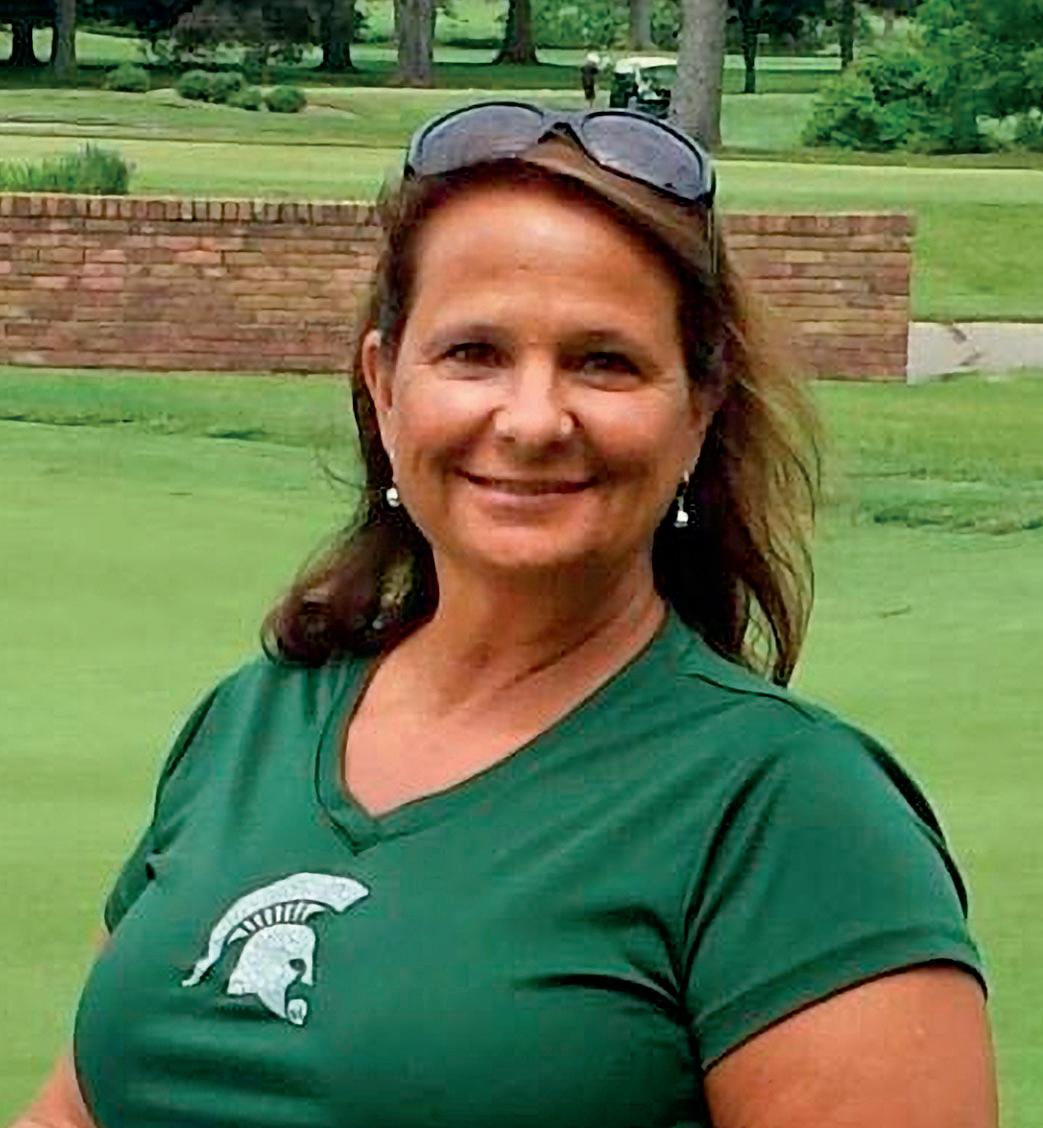
NANCY
DYKEMA
Research Assistant
III
Department of Plant, Soil and Microbial Sciences
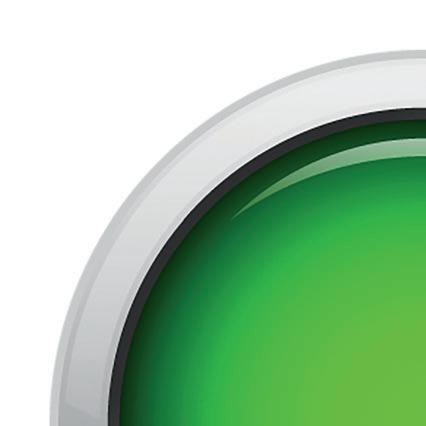



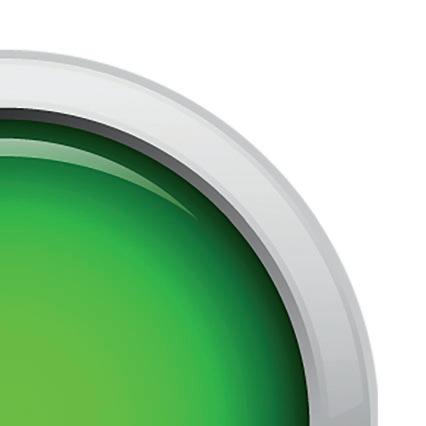

graduated with my bachelors degree from MSU in secondary education and biological sciences. As an undergraduate, I worked in Joe’s lab as a student assistant. That was my first exposure to plant pathology or turf pathology. After graduation, I left then returned to MSU to work. I ran into Joe at lunch one day and told him I was thinking of getting back into research.
im I search.
ngor hasany

“Do you know of anybody who’s hiring or has any funded projects?” He just happened to have a project that had just gotten funded, working on necrotic ring spot. We chatted a bit, he asked for my resume, and the rest is history!
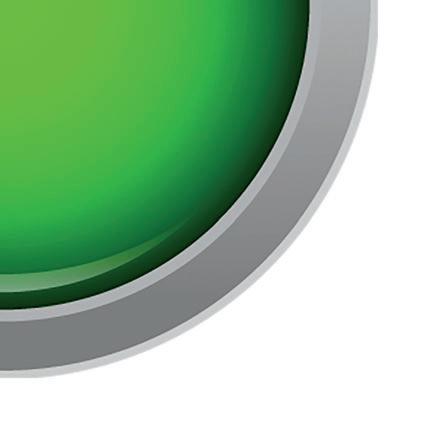
He hired me for that project, and I became a research tech. That was about thirty two years ago. In June this year, I will have 36 years of service at MSU. I’ve worked on various projects throughout the years, including fungicide testing. Initially in my career I did mostly grant-funded research projects. I also was Joe’s technical and office assistant. Joe traveled extensively so it was challenging to run a successful research lab. He was very “techy” so I was charged with keeping him using the latest and greatest in computers and technology. I also worked alongside Ron Detweiler. He enjoyed the applied side of research out in the field, while I focused more on lab experiments and handling data. We worked together really well, and I think that made Joe really happy because things were very smooth.
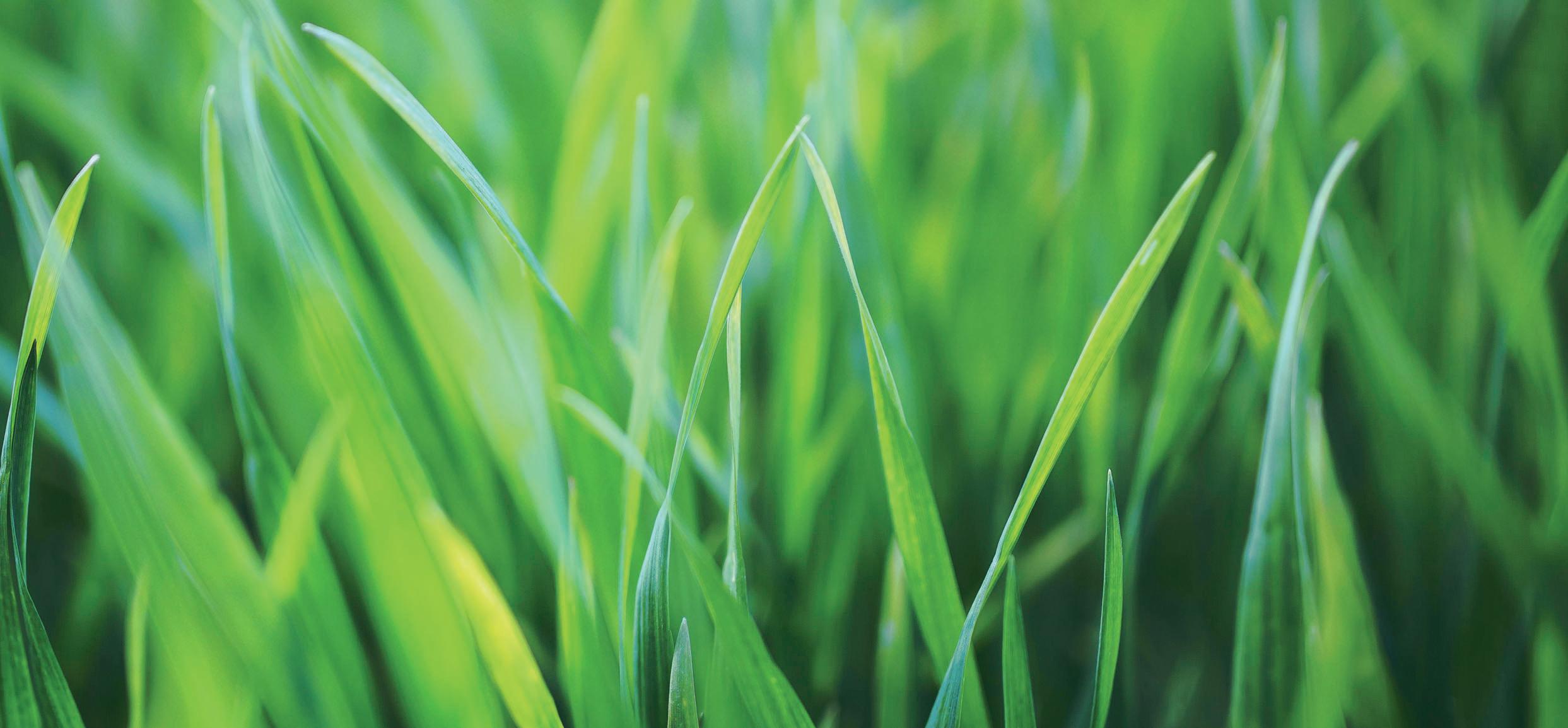
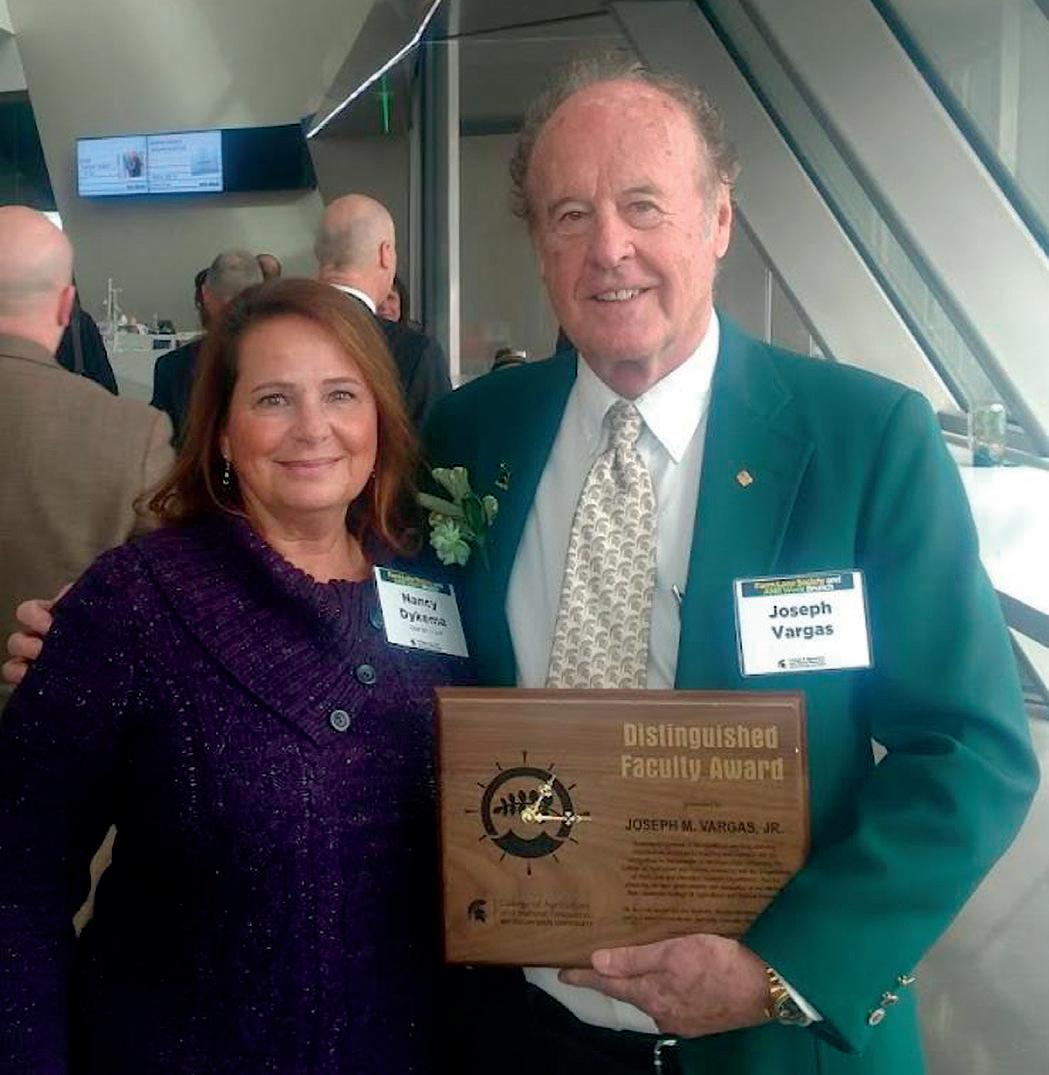
As I mentioned, Joe traveled a lot. I remember one day getting a phone call, and I answered the lab phone, “Hello Vargas’ lab.” The person asked, “Is he in?” I said no. “Well, do you know where he is or when he’ll be back?” I said no. They asked, “Do you know anything?” I said evidently not! Joe was highly respected, so people in the lab didn’t want to push for information from him, especially asking him his whereabouts. So after that call, I went into his office and said, “Joe, I don’t need to know where you’re going. I don’t need to know what you’re doing. But can you please just tell me when you’re going to be back so I don’t sound clueless when I answer the phone?” We laughed when I told him what had
happened. He said, “I’m so sorry, yeah I’m going here, I’ll be back on such and such date,” and that opened the communication between us.
One thing we did have that was likely integral to our long working relationship is excellent communication. I’m probably an oversharer, and he probably didn’t want to hear some of the things I said, but he listened. And I listened when he talked, so it was a mutual back and forth. I think he benefited from my tenacity and my dedication to my work, and I was inspired by his positive outlook and having him as a supervisor. I learned a lot from Joe, not just about science, but about life too. He was a mentor in many facets of life for me.
Early on, the graduate students would sometimes be nervous or on edge to talk with Joe, for instance, if we needed a new piece of equipment in the lab. “Nancy, go ask Joe if we can get a new centrifuge because ours is on the fritz.” I was sort of like the sacrificial lamb. “Why don’t you go ask him?” They’d say, “No, no, you’re better at it.” One of the students, I’ll never forget him saying… “Nancy, we’re behind you. You may not be able to see us, but we’re waaaay behind you.” And off I’d go into the wolf’s den.
Initially, Joe was in his office in a separate space, and the rest of us would be in the lab. Once we started to bridge that communication gap, things changed. In the long run, his graduate students were appreciative of the leader he was. He was a great scientist and just a great mentor to have. I feel really fortunate to have worked with him. I mean, how many people have

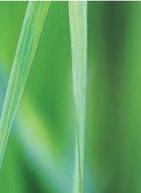
one boss their entire career, some 30 plus years? Between Joe, Ron and myself, we had almost 150 years, combined, working in the MSU turf pathology lab!
He always liked to put a positive spin on things rather than focusing on the negative. Even in science, if you got a “negative” result so to speak, you still learned something. What did we learn? Maybe we learned a method didn’t work, so let’s try to find something that does. He had a very, very positive outlook on life, in general. That is something that was really impactful.
I have funding from the University until May of 2025. So for this next year, I’m running our research trials as normal in the summer, which will include getting the reports out in the fall. In the fall, I’ll be teaching the undergraduate turf pathology class that Joe and I taught together. It will be strange to not
have him there for class. I’ve reached out to some former graduate students who are excited about giving guest lectures to class. I think it’s going to be really, really good! I want to make it the best class I’ve ever taught. I’m definitely looking forward to that. Teaching is something I have always loved.
In the meantime, I’m also working on sorting, organizing, and cleaning out our lab, preparing materials for the next turf pathologist. Turf pathology won’t be located in the same lab, so there’s a lot of housekeeping to do. Actually, 55 years worth of housekeeping to do!
The graduate students and I would sometimes play little jokes on each other, mostly just silly things to blow off steam when research was challenging or the day just felt long. I’ll never forget going to work on my 30th birthday. The corner of the lab where my desk was very dark. Every inch of the 8’ tall window next to me was covered in black paper. There was a curtain of black streamers surrounding my desk,
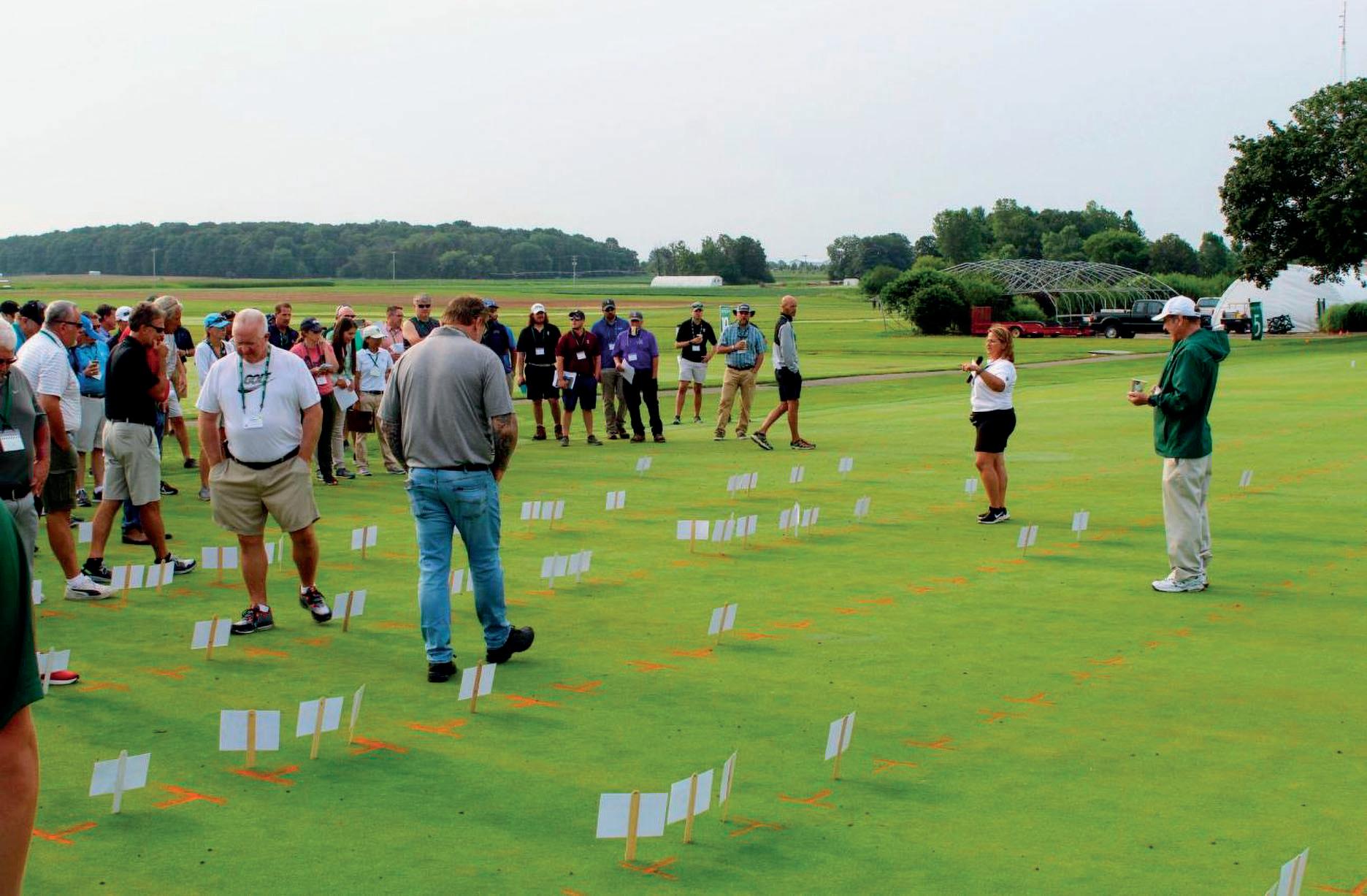



and black balloons were stuck everywhere in my little corner. To this day, there is a piece of black streamer stuck on the ceiling tile above my desk! The non-stop teasing and jokes we shared in the lab were a lot of fun. We became a “work family”, and those graduate students still feel like family to me today. I think Joe appreciated that we got along well. He also liked a good joke, and he shared many with us over the years.
Joe was highly revered in the turf world. He had that deep voice and could be very intimidating. But if you knew him beyond that perception, he was an endearing figure. He was supportive, and genuinely polite and kind. I had been working for Joe for almost 20 years when one day I said, “Hey Joe. I’m thinking about going to graduate school.” He surprised me and responded, “Oh, I think that’s a great Idea.” That just kind of shows that he wanted people to be the best version of themselves. He wanted to help elevate them if he could. He didn’t discourage me even though I might have had to cut back my hours. Instead, he thought it was a great idea, knowing it was what I wanted. And that’s what he was like. So 27 years after my bachelors degree, I completed my masters degree.
It was challenging, intriguing, rewarding, and mostly enjoyable. You definitely had to be independent and self-sufficient. If you ever had a chance to see Joe working while on an extension visit, you got to witness “Turfgrass CSI”. It was amazing. His observational skills combined with his knowledge and experience resulted in diagnoses of even the most puzzling of golf turfgrass problems. I truly enjoyed the times I was able to accompany him on golf course visits, as they were engaging learning experiences for me.
These extension visits were similar to how Joe and I would ride around at the turf center, reviewing our field trials or talking about plans for future research projects. I’d present him with the plan of action I thought we should follow, and he’d acknowledge or amend it. It was a reassuring part of our routine, and one of the things I’ll miss most about not having him
around this summer. I felt I was a trusted and respected part of a team. Joe was usually receptive to new ideas. When you were working on a project and got stuck, you could bounce ideas off of him. He typically had an open mind, and he didn’t make you feel stupid. Instead he would listen and ask leading questions to help you along. Sometimes he’d say “I don’t know if that’s a good idea, but why don’t you try it and see what happens?”
As an example, my master’s degree project was using irrigation strategies and cultivar resistance to manage disease. I had worked with fungicides for decades, and now I was going to use water? It sounded like a waste of time, but Joe was supportive. When the results were in, he said “Nancy, you corrected all my books!” He also shared one of his popular quotes in our lab: “And that’s why we do the research.”
A lot of people know of Joe, or they’ve seen him give talks. People who didn’t know him personally don’t know that he really was a kind and caring person. He treated people with respect. That kindness and mutual respect is probably a factor in us working together for so long. I did what I could to make his life at work easier and our research better. Together, we made a really good team.
He put a lot of clout in our research, data and results. If you conducted sound scientific research, he was a proponent. His former graduate students would likely agree that he was amenable to new ideas as long as you did the research. I believe it fostered a lot of the creativity that was innately there in our graduate students, when they were able to go with it, to follow their ideas. We have some very successful former graduate students who benefited from this.
Just being able to be supportive of the graduate students, their successes, watching their careers, it’s kind of like the proud momma thing. Having spent my career as part of the MSU turf pathology team, with the reputation we developed, the accomplishments we achieved, and the impacts we created, it has been a fulfilling career and one I’m proud of.
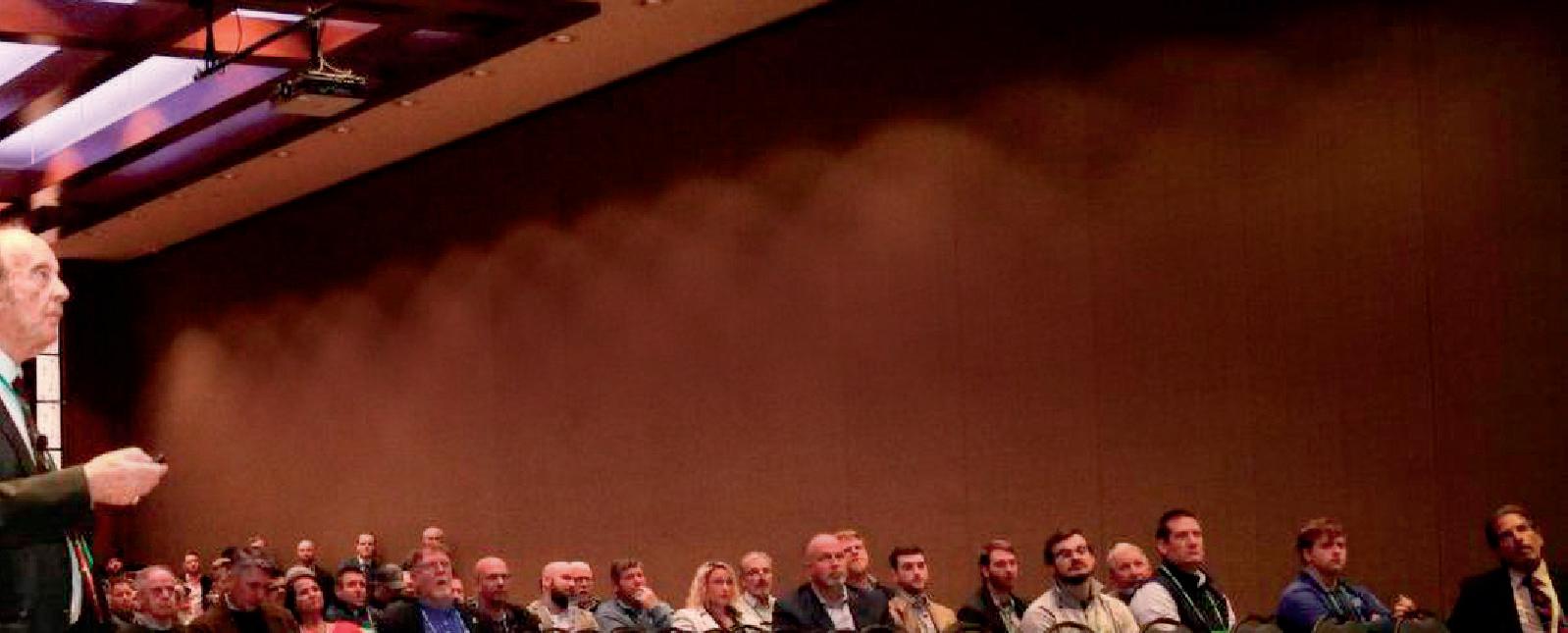
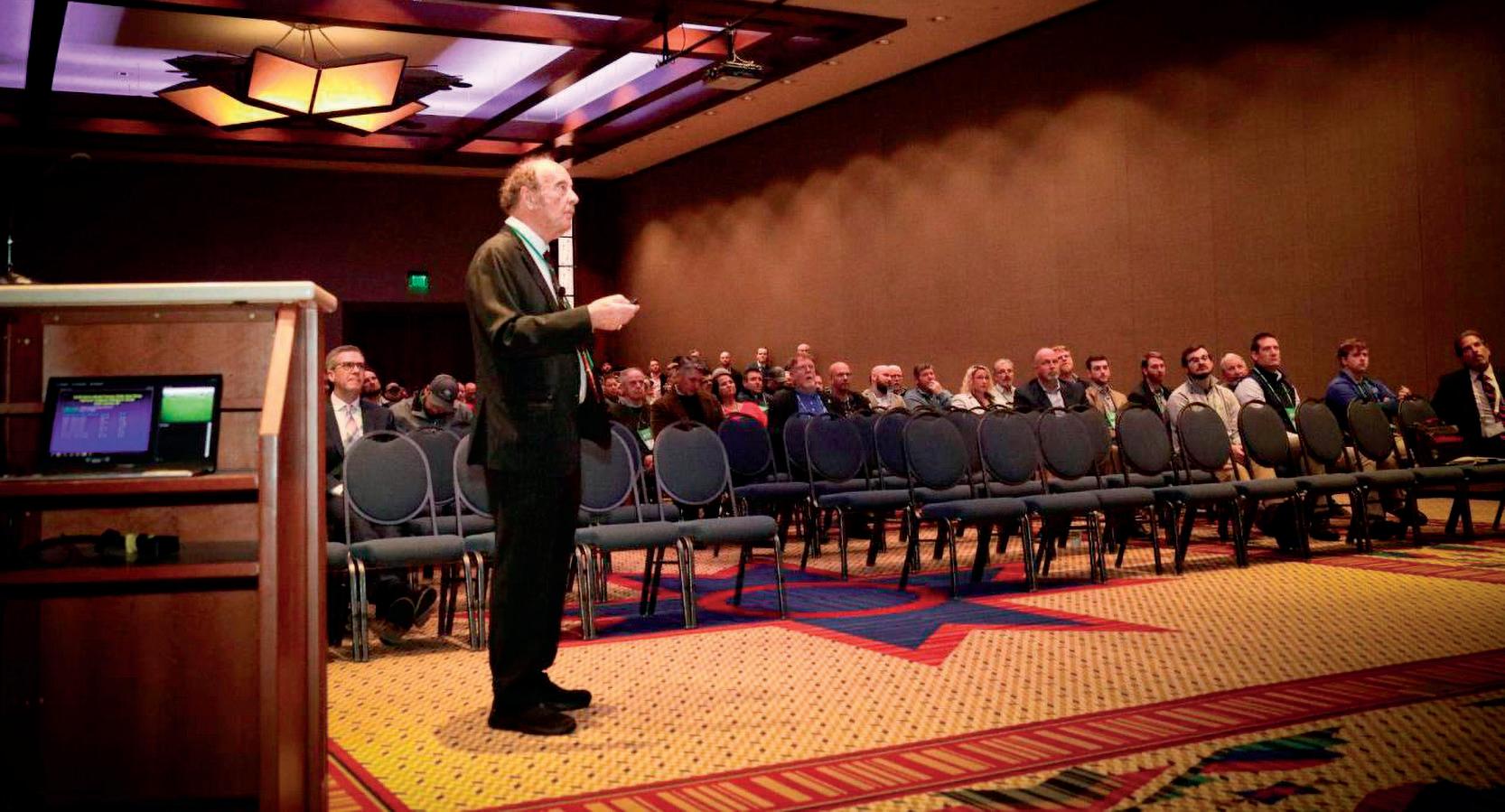
The Michigan Turfgrass Foundation would like to thank everyone, including the attendees, presenters, vendors and sponsors, that helped make the 2024 Michigan Turfgrass Conference such a great success. The Conference had over 500 attendees this year making it one of our highest attended to date. The Conference will be back at the Soaring Eagle Casino & Resort again in 2025, save the dates January 7-9, 2025!
During this year’s Annual Meeting, the Michigan Turfgrass Foundation welcomed new board members, Chris Wilczynski and Brian Schweihofer. Dan Mausolf was appointed to the position of MTF President, with Curt Boak becoming President Emeritus. The Board also thanked outgoing board member Dan Lucas for his dedication and service to the organization.

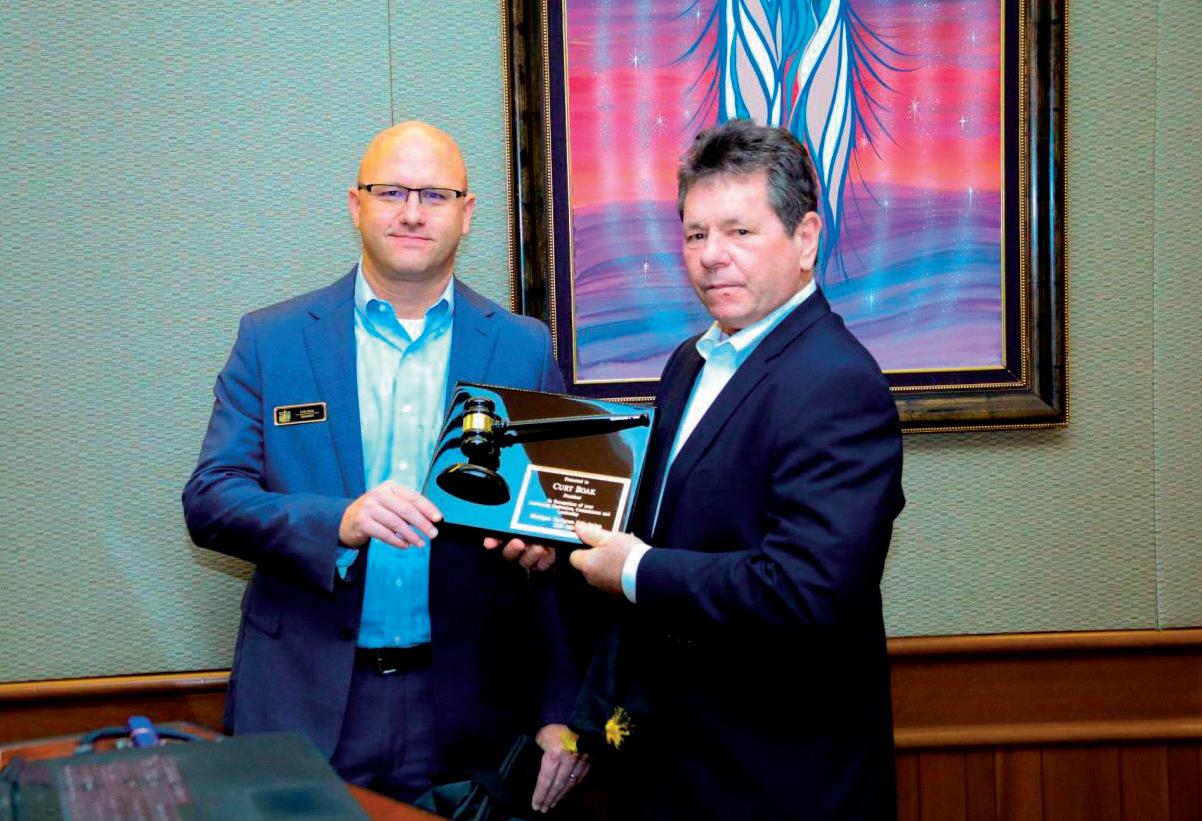
MTF President Curt Boak (l) receives acknowledgment and congratulations from MTF Executive Director Carey Mitchelson for Mr. Boak and his 3 years as President of MTF.



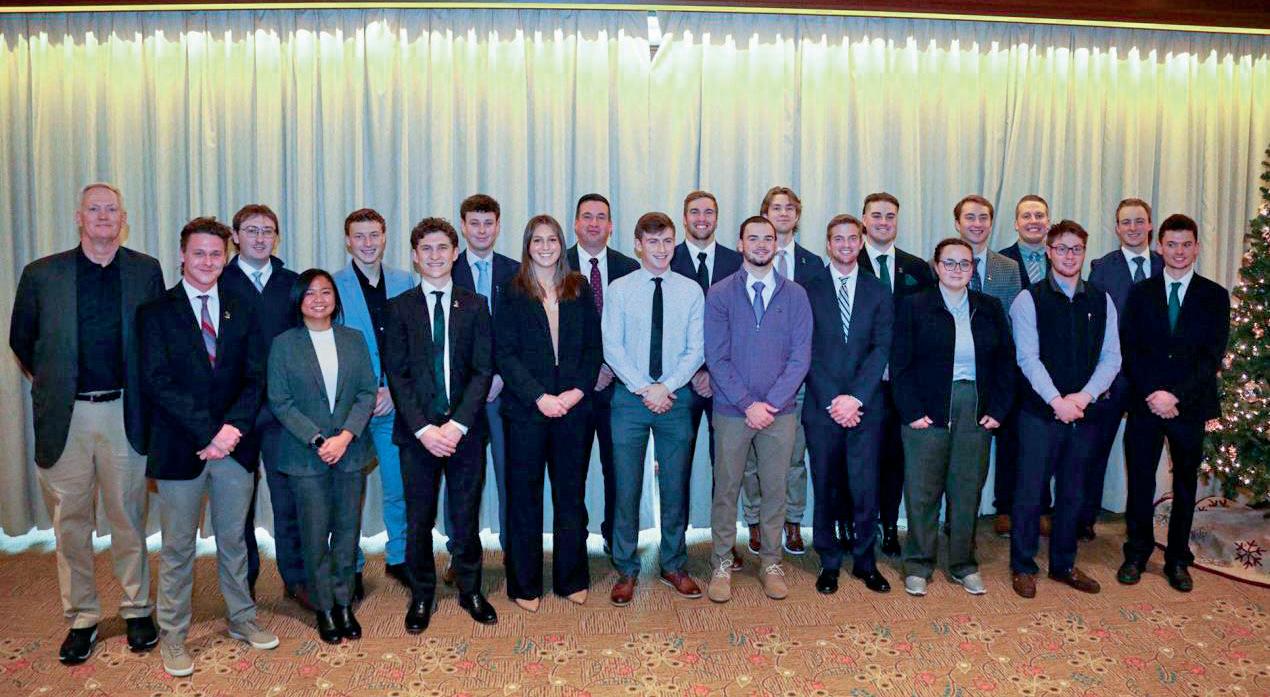
Dr. Trey Rogers, on his “favorite day of the year”, presented awards to Michigan State Turf students from the Michigan Turfgrass Foundation, Michigan State University, MiGCSA, GCSAA, MiSFMA and other numerous National Awards.
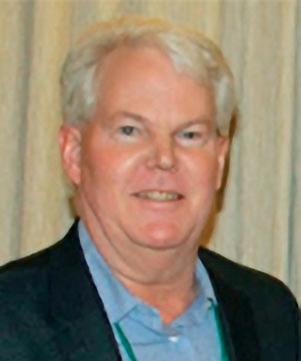
The MTF is proud to offer 5 scholarships for eligible MSU Turf Students. Candidates make their applications in the fall and are interviewed in December prior to the MTF Conference. Board Member Dan Lucas has served as Awards and Scholarship Chair each of his 9 years on the MTF Board of Directors.
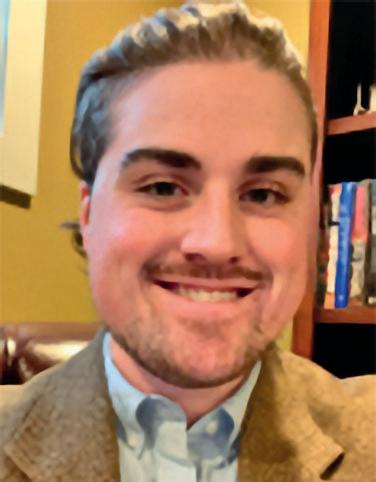
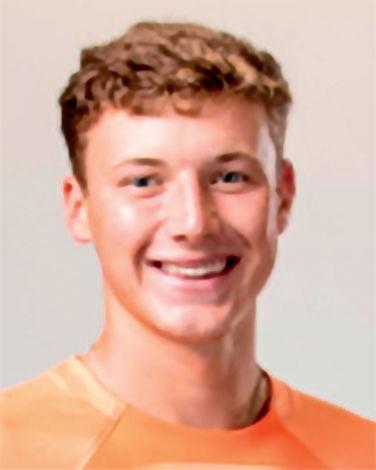
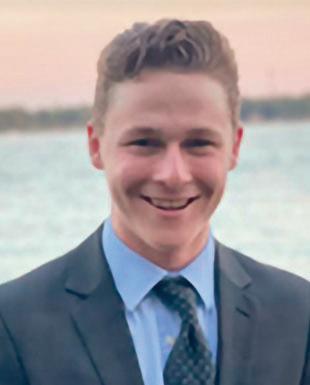

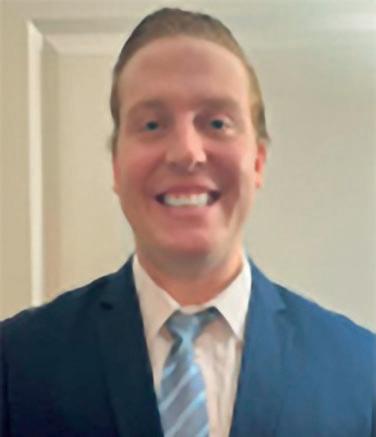

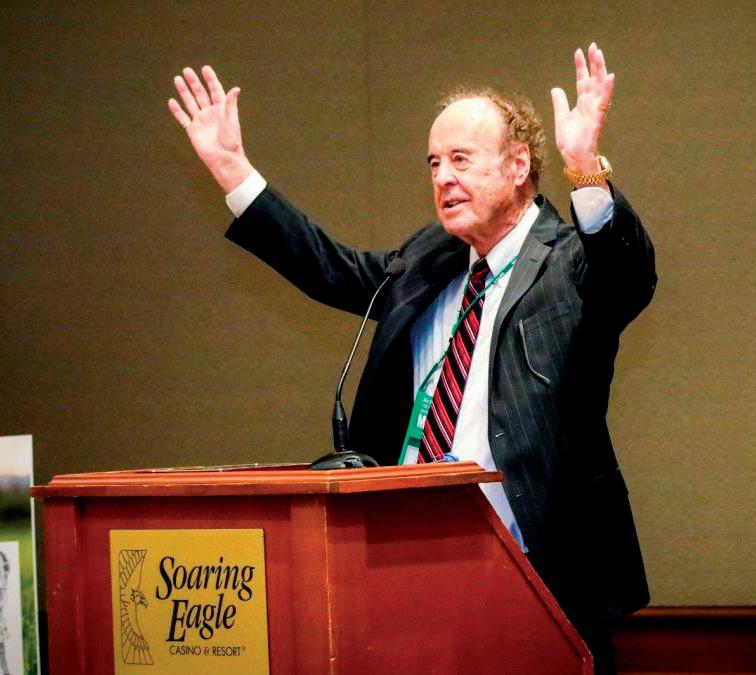
Over 200 colleagues attended the retirement celebration for Dr. Joe Vargas in recognition of his 55 years of service to MSU and the Turfgrass Industry. The night was highlighted by the stories and words of recognition from his friends, colleagues and industry leaders and Dr. Vargas’s final words being met with a lengthy and enthusiastic standing ovation.
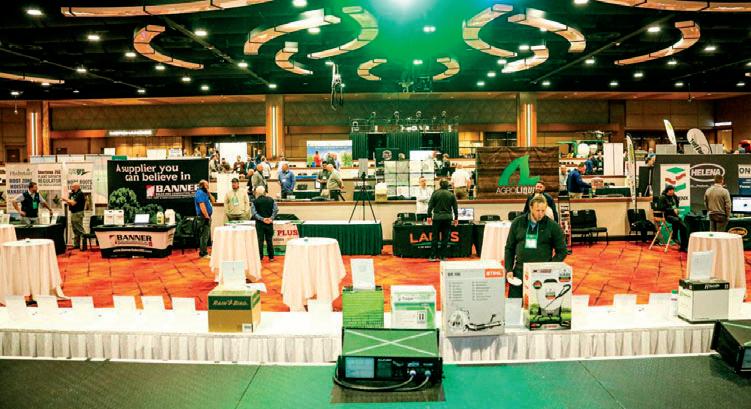
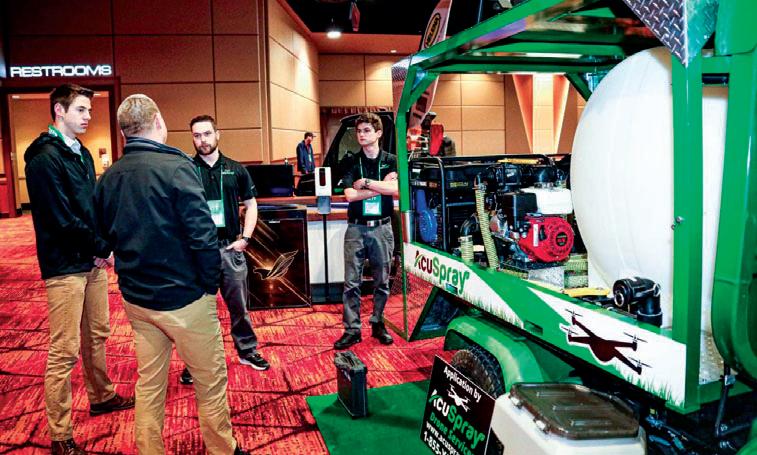
42 vendors helped make this year’s vendor show one to remember. Thank you also, to the industry members who donated to the silent auction, which raised almost $7,000 for turfgrass research.

Thank you to the 2024 Conference sponsors for their continued support of turfgrass research.
Michigan Golf Course Association - Vargas Reception Food/Drink
Spartan Distributors - Vargas Reception Food/Drink
Syngenta - Coffee, Sports Turf Track
US Golf Cars / Ladd’s - Vargas Reception Food/Drink
Target Specialty Products - Vargas Reception Food/Drink
Advanced Turf Solutions - Lunch, Coffee
C.W. Golf Architecture - Vargas Reception Food/Drink
DeBuck’s Sod Farm, Inc. - Speakers Dinner
Rhino Seed - Vargas Reception Food/Drink
Harrell’s, LLC - Coffee, Lawn Care Speaker Track
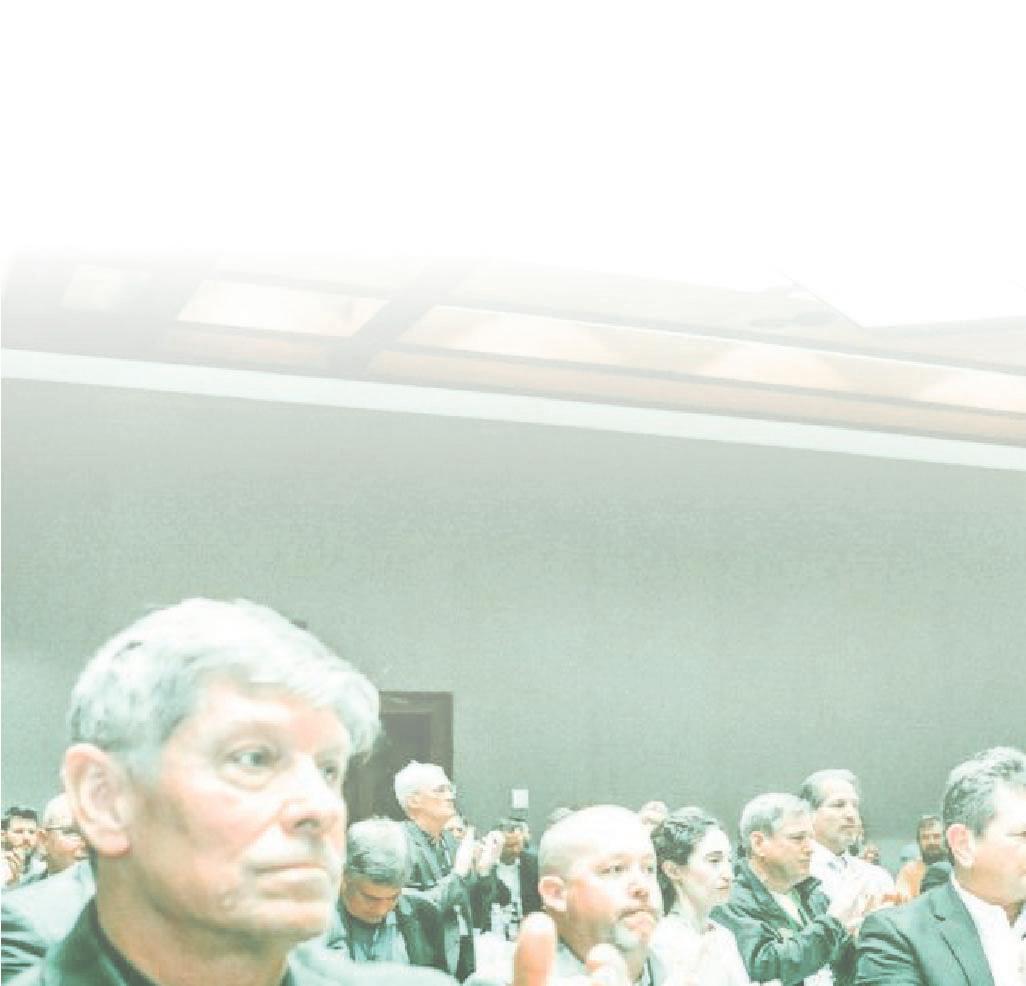
Helena - Coffee Cup
MiGCSA - Golf Track Speaker
MTESP - Coffee
Stine Turf & Snow, Inc. - MSU Student Scholarship Banner
LADD - Lanyard
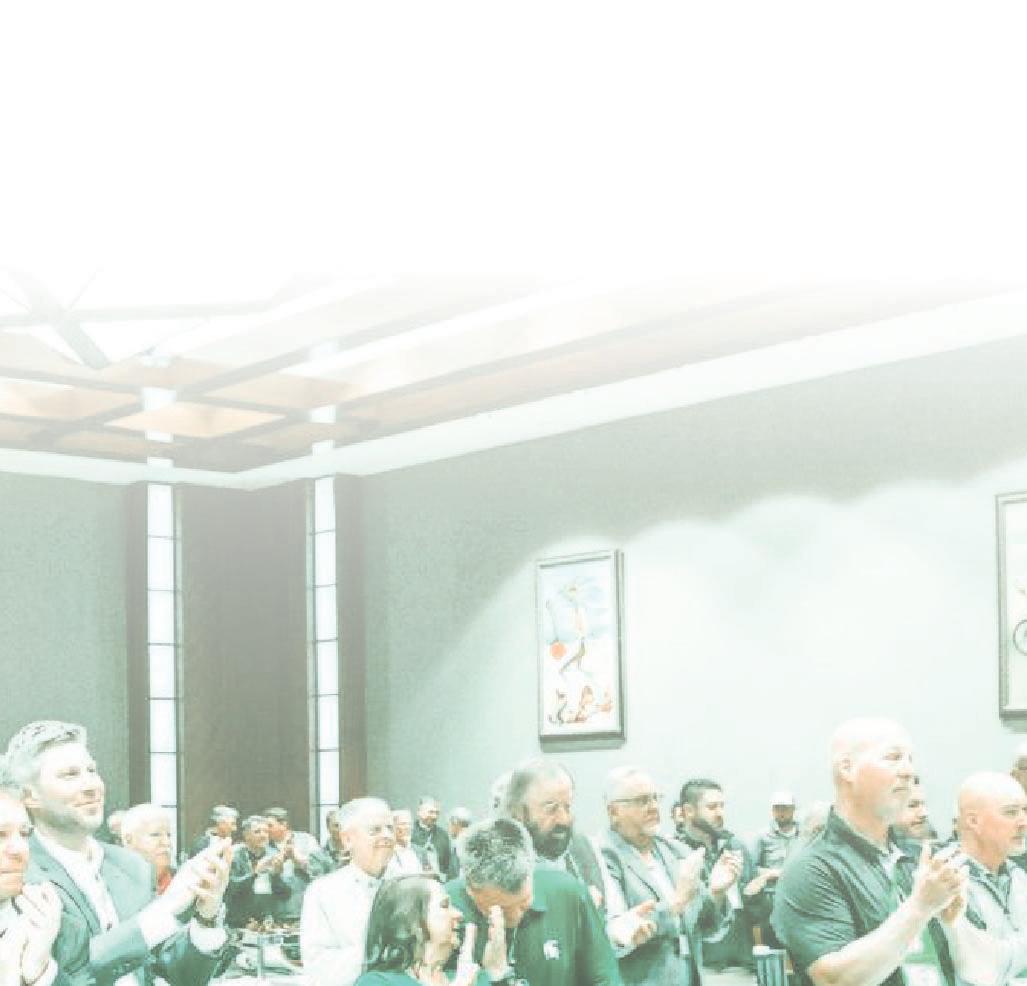
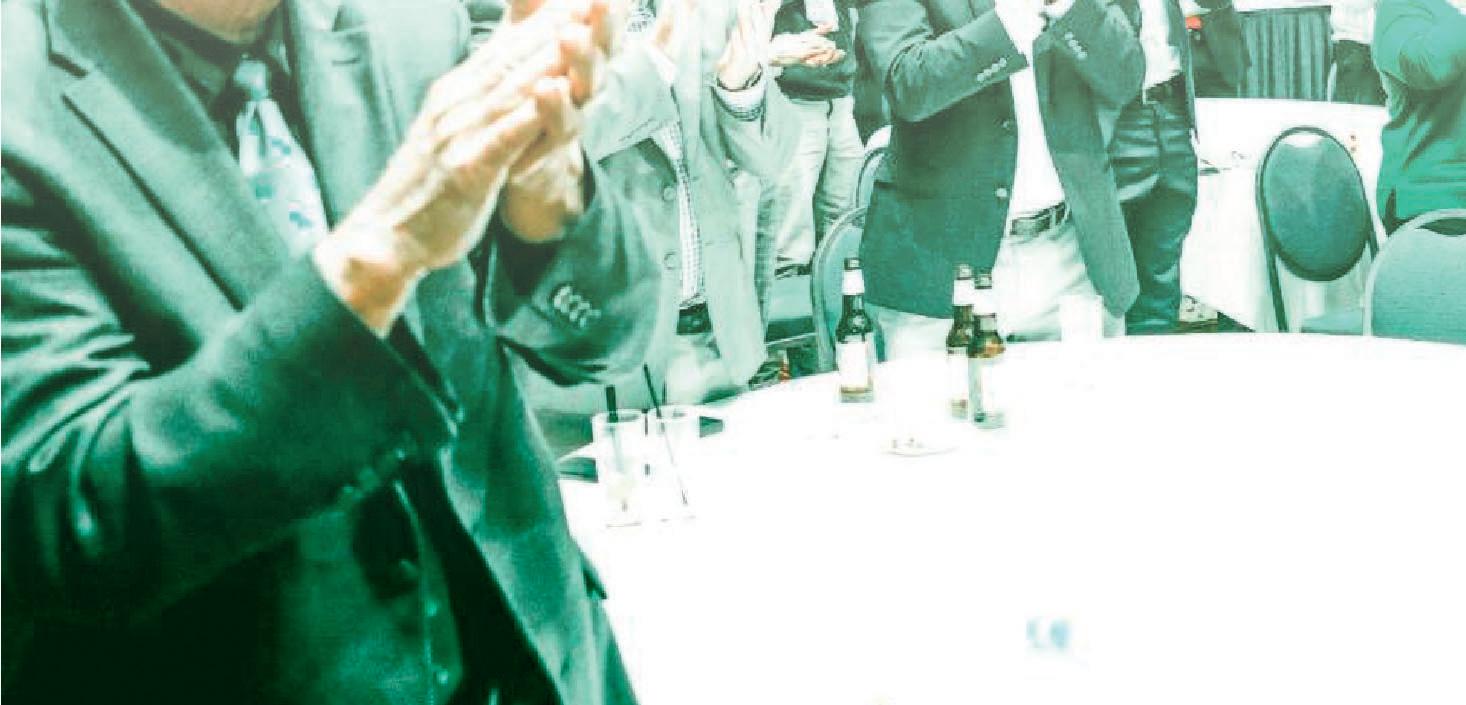


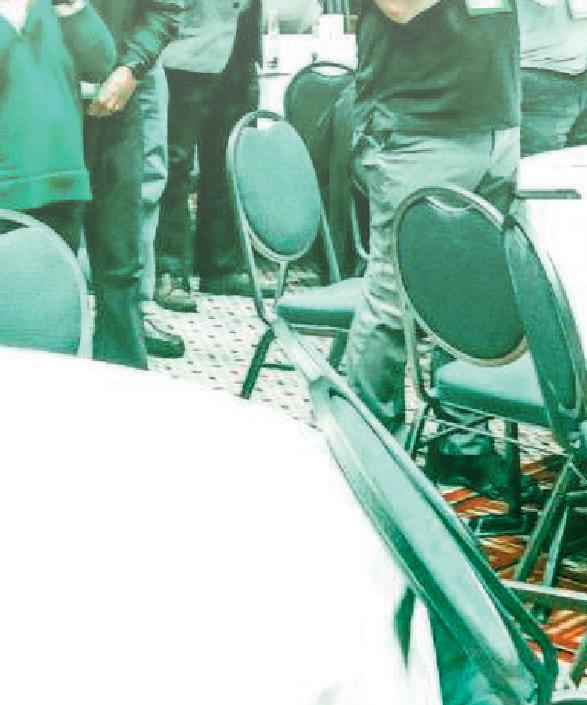








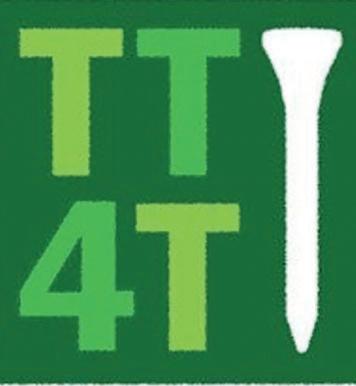
There were 192 items available for bid and 394 registered bidders, resulting in a total of 1,886 bids placed. Total gross income exceeded $51,000 and set a new record for the auction since its conception.
Golf courses that generously donated rounds for this year’s edition are listed for your review and the MTF appreciates their participation. TT4Turf has become one of the MTF’s most valuable fundraising endeavors each year and it cannot be done without the support of the golf industry in Michigan. Funding research is the Mission Statement of the MTF and the MSU Turf Team is equally thankful for those who participated.
Registration for next year’s event will begin this June with the goal of registering as many loyal courses as possible this summer. If your club participated, please take a moment to link to the 2025 registration and help make next year one of our most beneficial ever. If your club has not had a chance to participate previously, we welcome your interest and hope you can take a moment to inquire about registering for next year.
Thank you to all supporters!
MTF TT4Turf Committee
Scott Rettmann / Eric Davey
2025 Early Registration Form:


Alpena Golf Club
Alpine Golf Course
American Dunes Golf Club
Apple Mountain Golf Course
Arbor Hills Golf Club
Arcadia Bluffs
Arcadia Bluffs - South Course
Arrowhead Golf & Grill
Atlas Valley Country Club
Avon Oaks Country Club
Barton Hills Country Club
Battle Creek Country Club
Bay County Golf Course
Beacon Hill Golf Course
Bedford Valley Golf Club
Bellaire Centenial Golf Club
Belvedere Golf Club
Birchwood Farms Golf & Country Club
Blythefield Country Club
Boulder Pointe Golf Club
Brentwood Golf Club & Banquet Center
Briar Ridge Golf Course
Brookshire Inn & Golf Course
Bucks Run Golf Club
Burning Tree Golf and Country Club
Cadillac Country Club
Calderone Golf Club
Canadian Lakes Royal Golf Course
Cascade Hills Country Club
Cattails Golf Course
Chandler Park Golf Course
Cherry Creek Golf Course
City Of Livonia Golf Division, Fox Creek, Idyl Wyld or Whispering Willows
College Fields Golf Club
Country Club of Detroit
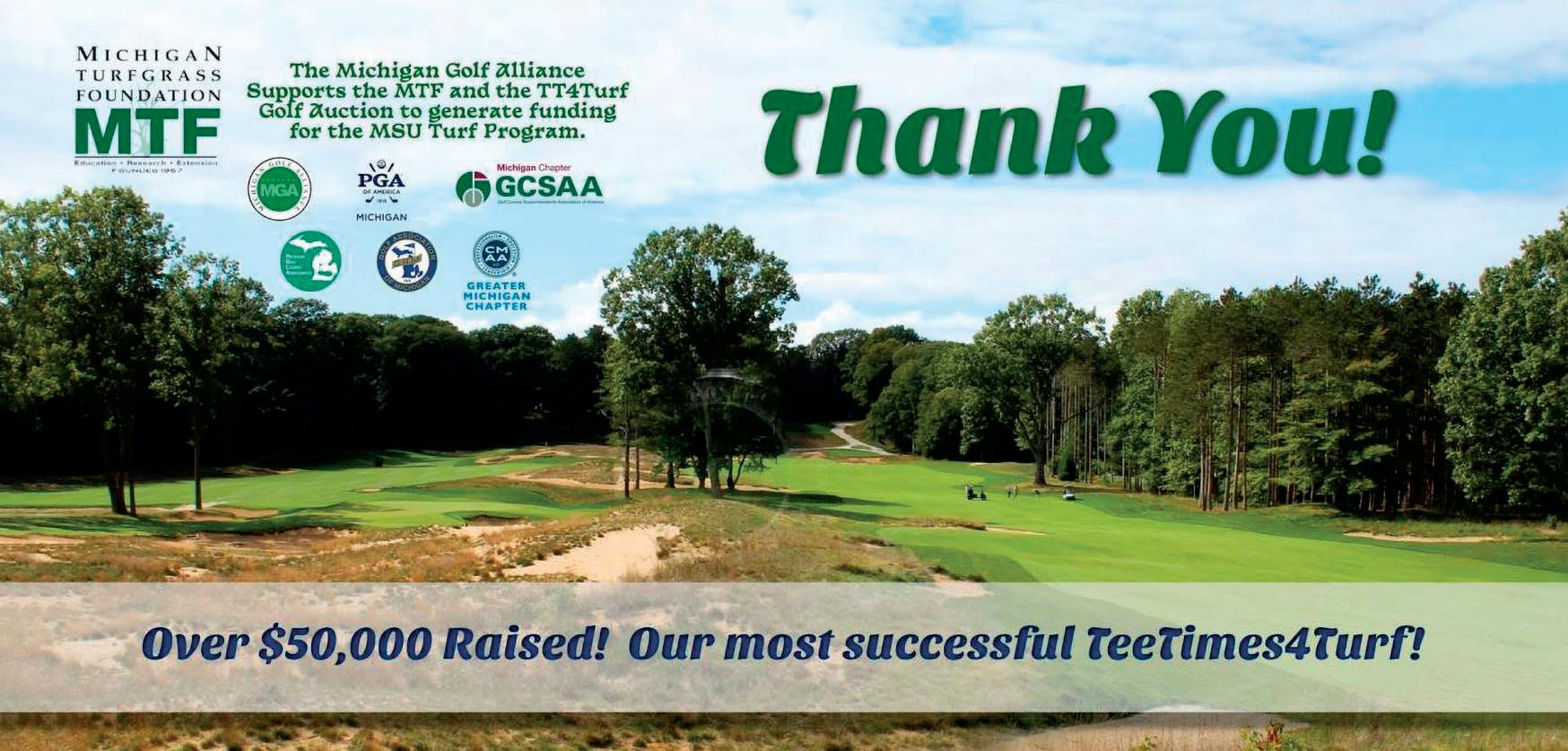
Country Club of Jackson
Country Club of Lansing
Coyote Golf Club
Coyote Preserve Golf Club
Cracklewood Golf Club
Crystal Downs Country Club
Dearborn Country Club
Dunham Hills Country Club
Eagle Eye Golf Course
Eagle Glen Golf Course
Edgewood Country Club
Egypt Valley Country Club - Ridge Course
Egypt Valley Country Club - Valley Course
Elk Rapids Golf Club
Farmington Hills Golf Club
Fellows Creek
Fieldstone Golf Club
Flint Golf Club
Forest Akers West Golf Course
Forest Lake Country Club
Fountains Golf and Banquet
Gaylord Golf Club
Golden Passbook to Michigan Golf - NORTH
Golden Passbook to Michigan Golf - WEST
Grayling Country Club
Great Oaks Country Club
Greystone Golf Club & Banquet Center
Groesbeck Golf Course
Grosse Ile Golf & Country Club
Gull Lake Country Club
Gull Lake View - EAST
Gull Lake View - WEST
Hankerd Hills Golf Course
Hartland Glen Golf Course
Hawk Hollow Golf Course
Highland Meadows Golf Club
Hilltop Golf Course
Huntmore Golf Club
Huron Hills Golf Course - City of Ann Arbor
Indian Run Golf Club
Indian Trails Golf Course
Island Hills Golf Club
Kent Country Club
Lakelands Golf and Country Club
Lakes of Taylor Golf Course
Leslie Park Golf Course - City of Ann Arbor
Lincoln Golf Club
Links at Crystal Lake
Lochmoor Club
Lost Lake Woods
Manistee National Golf & Resort
Marquette Golf Club - Greywalls
Marquette Golf Club - Heritage
Meadowbrook Country Club
Midland Country Club
Mt. Pleasant Country Club
Mystic Creek
Naperville Country Club
North Kent Golf Club
Oak Pointe Country Club - Championship Course
Oak Pointe Country Club - Honors Course
Oakland University - RS Sharf Course / University Course
Paint Creek Country Club
Petoskey-Bay View Country Club
Pilgrim’s Run Golf Club
Pine Knob Golf Club
Pine River Country Club
Pineview Highlands
Plum Hollow Country Club
PohlCat Golf Course
Prestwick Village Golf Club
Rackham Golf Course
Radrick Farms Golf Course
Railside Golf Club
Redwater Golf
Rich Harvest Farms
Riverview Highlands
Rouge Park Golf Course
Rush Lake Hills Golf Club
Sage Run Golf - ‘Island Resort and Casino’
Sweetgrass Golf Club - ‘Island Resort and Casino’
Saginaw Country Club
Scott Lake Golf & Practice Center
Shanty Creek
Shenandoah Country Club
Spring Lake Country Club
Spring Meadows Country Club
St. Ives Golf Club at Tullymore Golf Resort
Stoatin Brae Golf Club
Stonehedge - North
Stonehedge - South
Stonycroft Hills Club
Sugar Loaf “The Old Course”
Tanglewood Golf Club
Taylor Meadows Golf Club
The Bear @ Grand Traverse Resort & Spa
The Chief Golf Course
The Classic Fox
The Dream
The Dunes Club
The Emerald Golf Course
The Falls at Barber Creek
The Fortress
The Golden Fox
The Majestic at Lake Walden
The Meadows Golf Club
The Medalist
The Mines Golf Course
The Moors Golf Club
The Nightmare
The Orchards Golf Club
The Quest Golf Course
The Strategic Fox
The Tamaracks Golf Course & Estates
The Wyndgate Country Club
Timber Ridge
Timber Trace
Timber Wolf Golf Club
TPC of Michigan
Traverse City Golf & CC
Travis Pointe Country Club
Treetops Resort - Traditions Course
Tullymore Golf Resort
Twin Lakes Golf & Swim Club
Walnut Creek Country Club
Warwick Hills Golf & Country Club
West Michigan White Caps Game! 4 Tickets!!
Western Golf Club
Westshore Golf & Country Club
Westwynd Golf Course
Wuskowhan Players Club
CAREY MITCHELSON
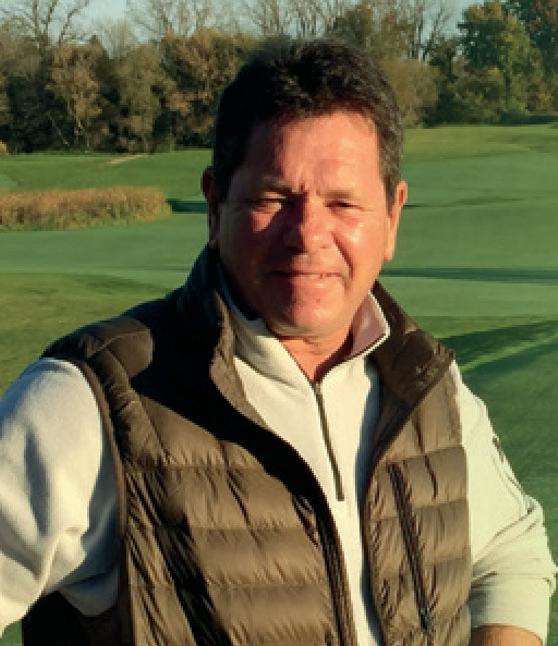
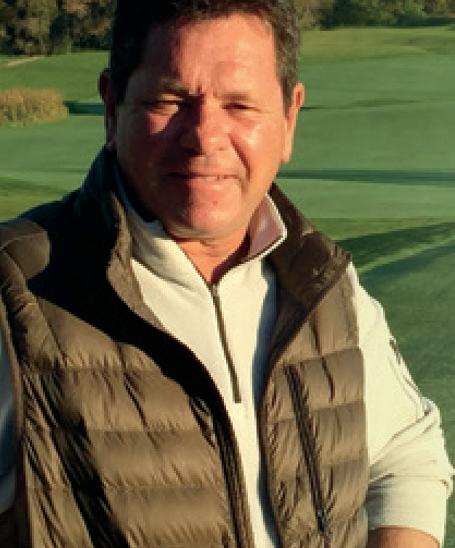


How does one go about describing someone so iconic as Dr. Joseph Vargas. His passing stunned not only those that knew him, but also those who respected him from a distance. Many heard of this larger-than-life figure and knew his stature in the turf industry. His long and illustrious tenure at Michigan State University and his notable recognition worldwide was well documented. They also knew of his ability to care for those he knew little about…but willfully would help at any time. The MSU Turf Program has been blessed with many significant instructors, skillful researchers and eloquent speakers during its time as one of the best Turf Programs anywhere. Dr. Vargas collaborated with many…and was a mentor for countless others.
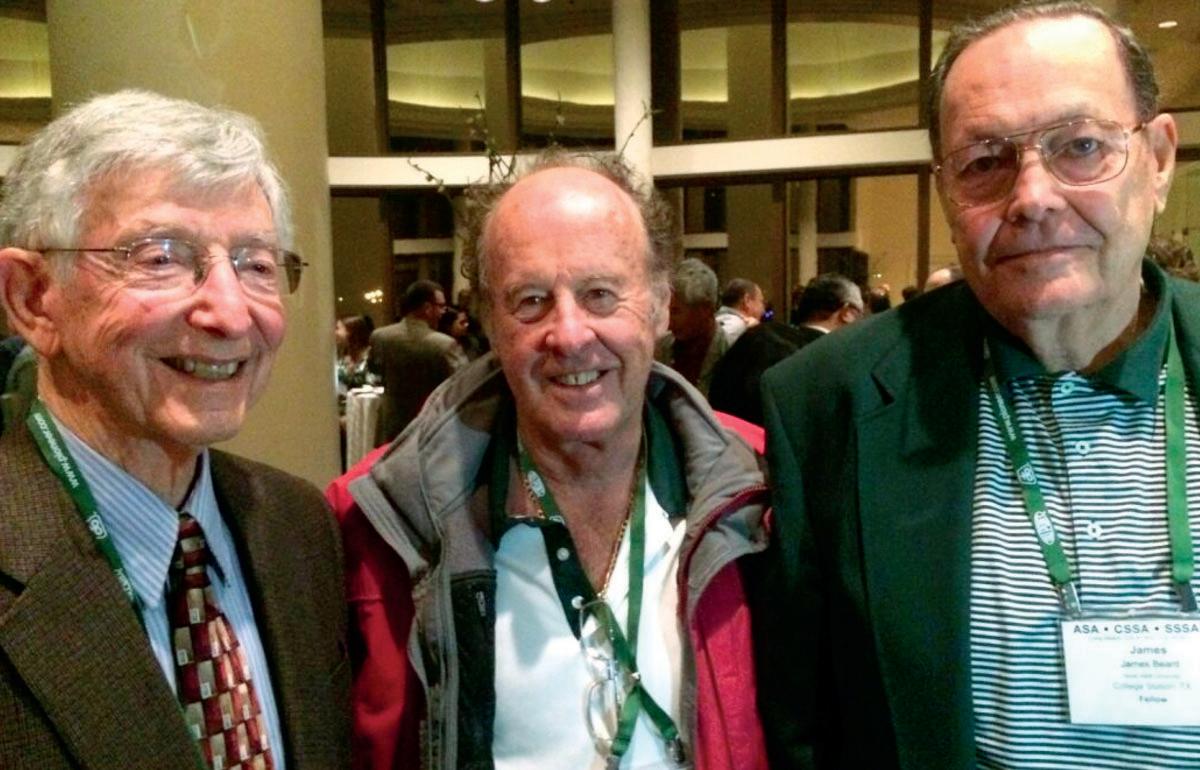
Including all those names is impossible and missing one would certainly happen. I am certain all of you who have been a part of what was built at MSU know who you are and understand his influence carried a great deal of weight. He taught us the difference between contact and systemic fungicides, the proper time to apply and how often…but most passionately …let us know to use common sense in your decision making. I, for one, learned that reacting… rather than thinking …can be disastrous. Knowing when not to do somethingis a talent.
And talent is what Dr. Vargas had. He would often visit the MTF Board meetings unannounced just to see what is going on. Sometimes he would be asked to comment on something, other times he would walk out as quickly as he came in without saying a word. In each case – he left an impression. It was fascinating seeing the highly respected, well-informed peers suddenly feel the pressure to not say anything inaccurate…or at all. His presence could do that. It was not out of fear- rather of respect.
There have been countless articles already presented on his behalf and he deserves each word that can be written. It was a remarkable time we had with him, and we were lucky. He managed his professional life in a whirlwind…and it was compelling to hear others describe the extensive time he spent traveling. It was a constant part of his vocation and life, and he spent a significant part of it encouraging others to make the best of their livelihoods. In order to accomplish so much in so many places were remarkable – but accomplishing it required a team effort. He represented MSU well and had countless supporters…but his remarkable life and time wouldn’t have been possible without the encouragement and backing of those closest to him. Joe’s family was keenly aware of his yearning to be everywhere and to help whenever. A loving family that allowed Joe to pursue what he cherished allowed Joe be the remarkable man he was.
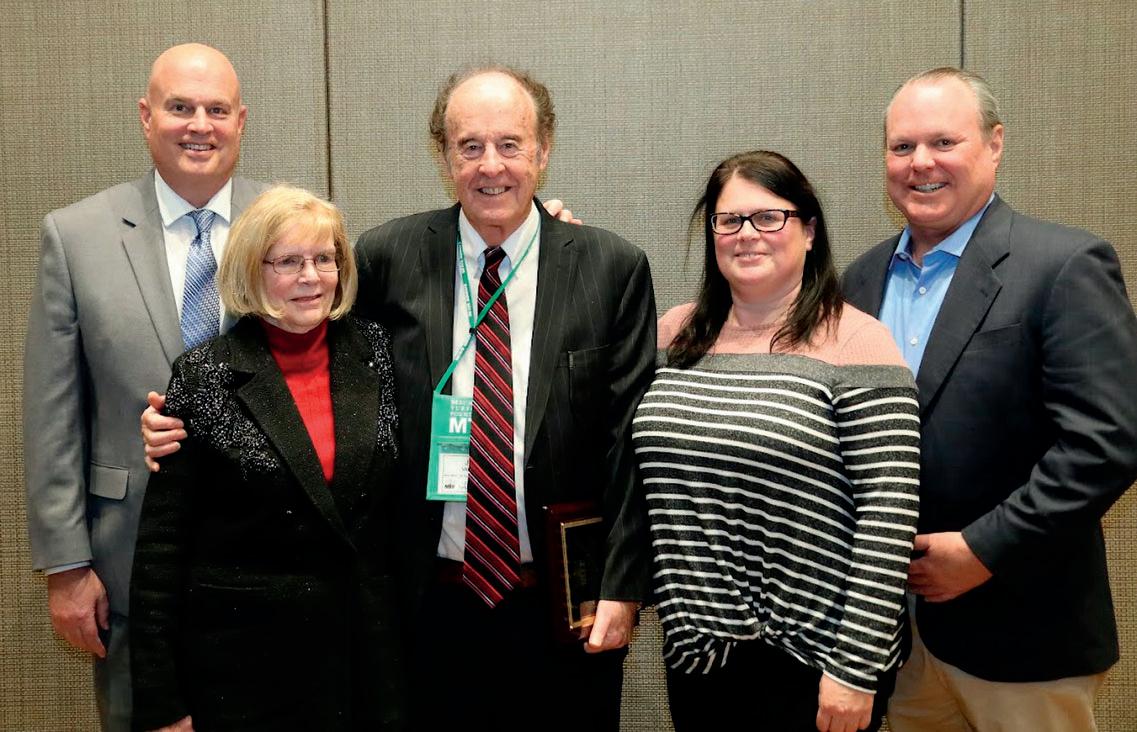
significant preparation…(MSU has many worthy candidates) without hesitation, Nancy put together the required paperwork. When he was selected, she was just as proud as Joe…as both should have been… they were a team, and it was an honor for her as much as Joe.
His immediate family, wife of 61 years - MaryAnn, sons Joseph III and Michael and Daughter Kathleen all knew how he was driven, and they allowed him the opportunity to dash to planes and places everywhere in the world. Those who were impacted by Dr. Vargas may not have had that chance if not for a family such as this. When they spoke at his Celebration of life on June 1, the love and care they expressed was heartfelt and would have made Joe proud.
Also, in this NewsNotes edition we have featured Nancy Dykema. Her time at MSU working with Dr. Vargas was special and her decision to be a part of his team is worth a moment of your time to review. Although not locked at the hips to the Hancock Center as so many of the Turf Team and Grad students who support them, I have had several opportunities to work with Nancy on items related to Dr. Vargas. And like many others it was because I needed something from her …about Joe. Nancy never said no…. and is probably a reason Joe had so many frequent flyer miles. Dr. Vargas was fortunate to have her by his side…and so are we. She appreciated all he did and was proud to be part of the ride. In this magazine you will see a picture of Nancy and Joe together when he received his College of Agriculture and Natural Resources - Distinguished Faculty Award. It is an award that I was proud to have nominated him for while I served on the CANR Alumni Association Board. The nomination process was complicated and required
Dr. Vargas received many acknowledgements and awards during his unbelievable run, and each one meant a great deal to him. He also enjoyed sharing moments with others. He approached me after the announcement - “Carey – this is one of the best moments of my career –Thank you” I know he meant it…and he did for each time he felt he could make someone a better person.
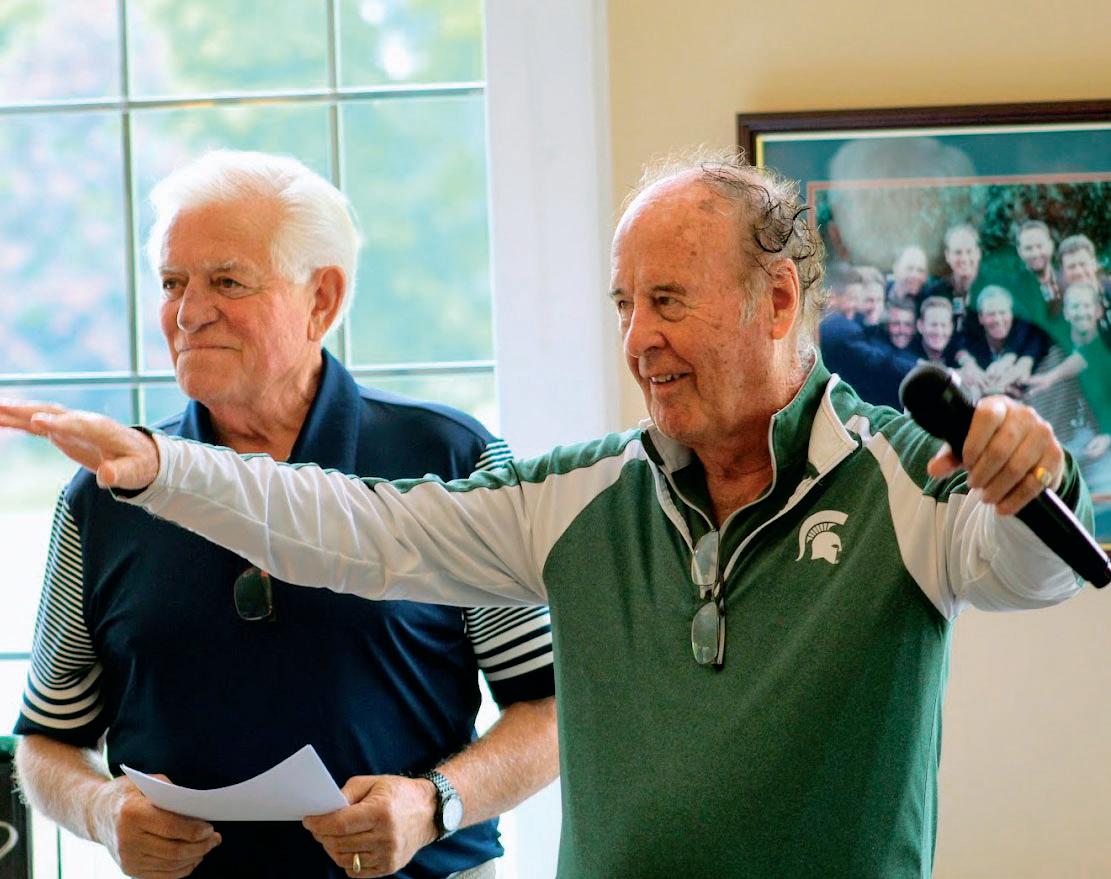

I was also able to spend some time with Joe when the MTF decided that it would be donating a leadership gift to MSU for an Endowed Chair position in his name. As Joe was beginning to contemplate retirement, his compatriot and sidekick, Gordie LaFontaine, approached me to suggest that now was the time that the MTF may be able to secure the future of Turf Program at MSU. At the time, some Universities were struggling with their own Turf Programs, and we wanted MSU to stay above and beyond any chances of that happening. Funding programs or positions at the University level requires commitments from commodities or other groups. Organizations must display that programs are needed and that aspiring students
will be available and make the program worthy. For commitment the MTF designated a leadership gift of $1 million and requested it be in Dr. Vargas’s name. We asked Joe to work with the MTF as we expressed to our members and MSU Administration the purpose and its benefits.
It may have been a bit humbling for Dr. Vargas when we spoke to individuals about how he was the perfect example of what we envisioned and that the Chair would be in perpetuity with his name. He spoke at times of how he felt embarrassed how much we endorsed him and his legacy. But he also knew that it was important that it succeed, and that the Turf Program needed this. The stars aligned as Dr. Brian Horgan became the Chair of the Department of Plant, Soils and Microbial Sciences. Dr. Horgan is a graduate of the MSU Turf Program, advanced his career in academics and then on to the University of Minnesota. He returned to MSU at the same time we undertook the Endowed Chair and has been an advocate for the Turf Program and Endowed Chair for Dr. Vargas. Dr. Horgan understood the importance of the Endowment and his recent announcement that the preliminary stages are now set for the selection process for the Vargas position to begin August 1, 2024. It is certainly heartbreaking that Joe was not able to see this stage of the process… but there was something special that proceeded this announcement.
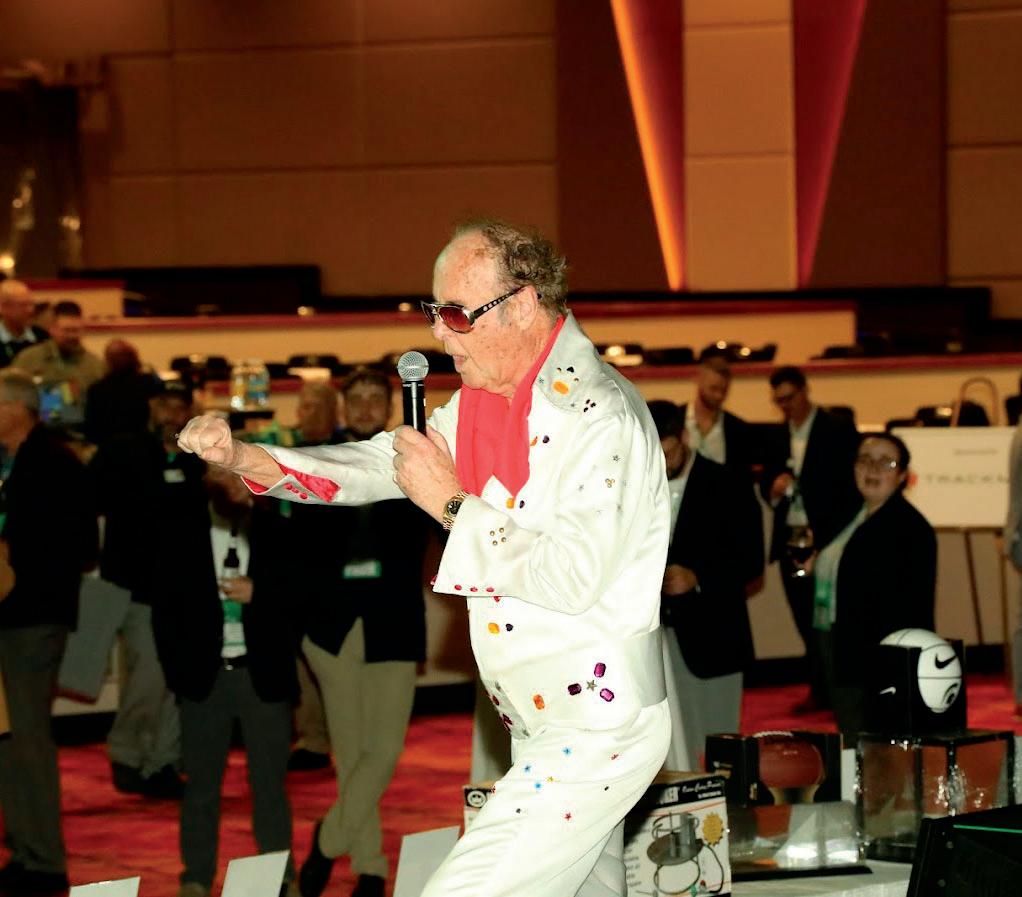
During its planning stages in the summer of 2023, the MTF decided to provide a reception in honor of Dr. Vargas. It seemed a perfect time to reflect on his career and allow those who he influenced to come and spend some time with him
and celebrate his career. Our Turf Team liaison, Dr. Kevin Frank offered to put together a program for the attendees. He enlisted Dr. Phil Dwyer to help with the planning and communications required. Eventually, they not only had an evening, but a conference dedicated to Dr. Vargas. All the speaker sessions prior to the reception included those who were guided by Joe and his illustrious career. I was amazed by the comradery leading up to the reception …you could feel the emotions as the conference progressed. The vendors show the day before the reception, Dr. Vargas was asked to perform his fabled Elvis Presley tribute for those in attendance. Despite a bit of a hiccup with the audio portion….Joe let the show go on and loved every minute of it. Some wonderful pictures were captured and those that had not seen it before had a moment that will be remembered.
The following day, January 9th the reception for Dr. Vargas was unveiled. Joe was seated with his family and friends. Dr. Frank and Dr. Dwyer had done their homework …and Joe was treated to an amazing evening.
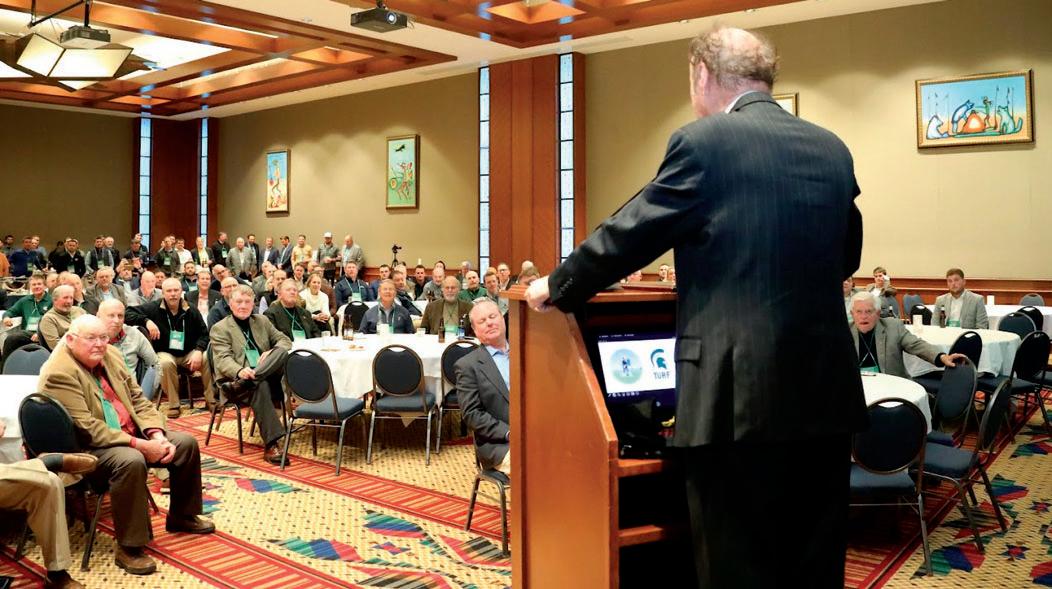
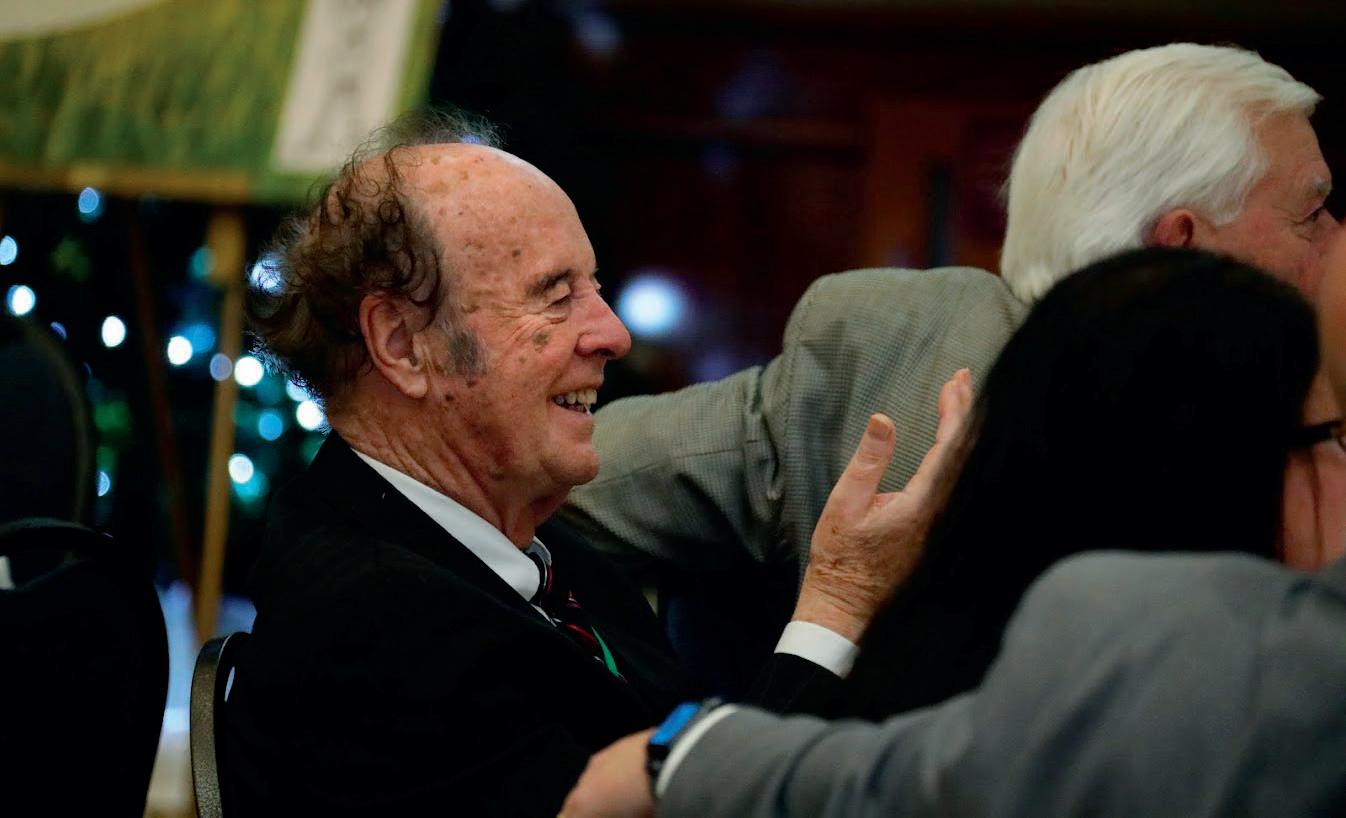
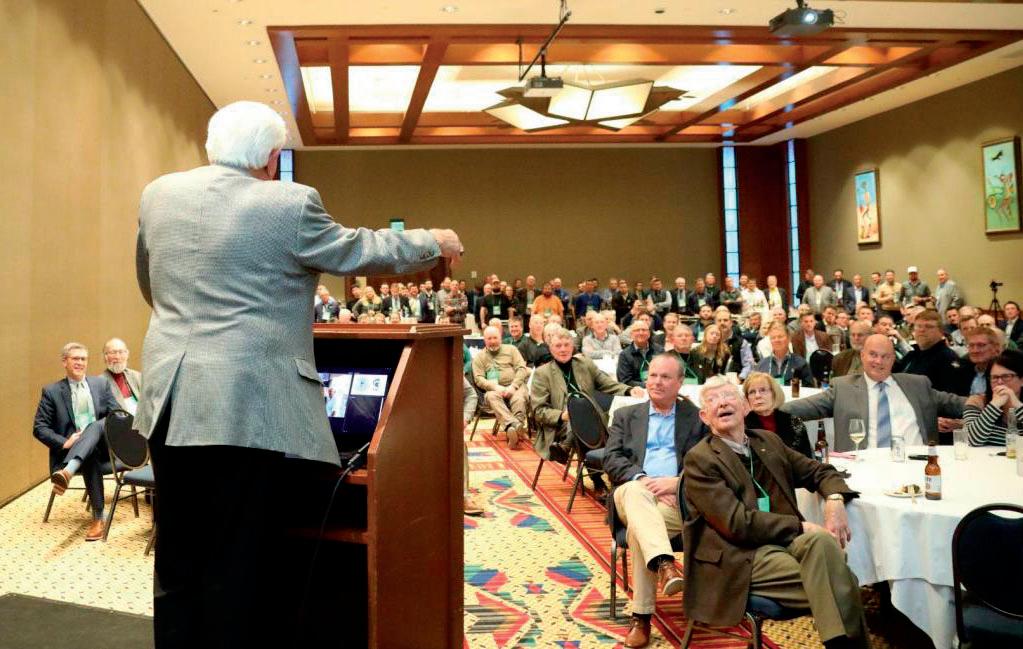
Speaker after speaker were introduced – each with a story to tell and each one a moment in time. Those in attendance were treated with a special moment that is quite hard to describe …. except for perfect for someone who certainly deserved it. Joe was sitting in the first row, and you could see the extreme pleasure he had in seeing so many of his friends there to express themselves and offer gratitude for what he gave them. There were stories we never heard before….and some we wish we had not….but each one a tribute.

Left to right - Dr. Dave Roberts, Dr. Brandon Horvath, Dr. Phil Dwyer, Nancy Dykema, Dr. Rob Golembiewski, Dr. Joe Vargas, Dr. Paul Giordano, Mr. Ron Detweiler, Dr. William L. Berndt, Dr. Karl Danneberger, Dr. Paul Reike
The MTF is grateful to all those who attended and be certain… it was a moment you will remember.
We are grateful for those who took the time to express their care for such an individual. It was an evening that we all wish we could have at least once in our lives.
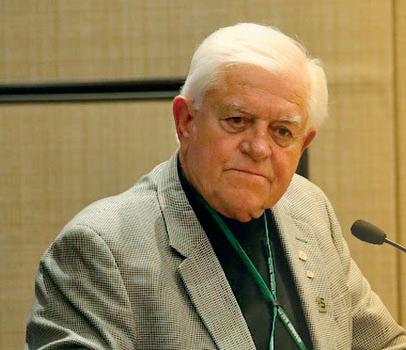

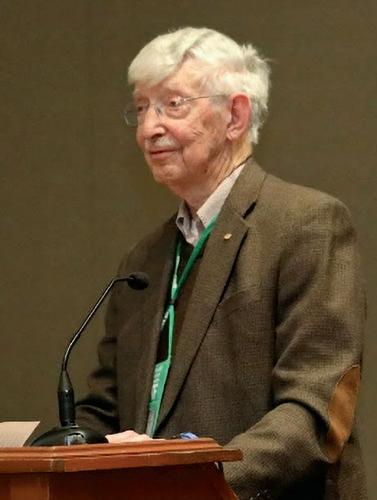
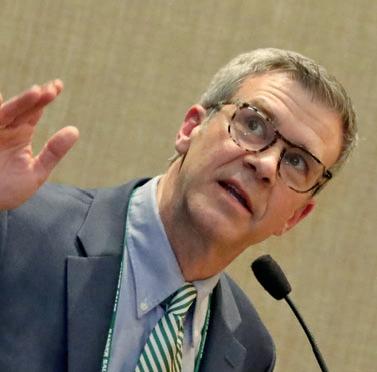
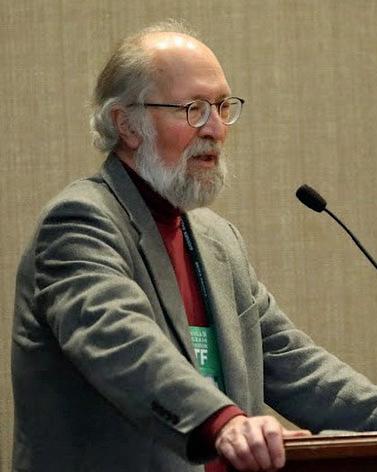
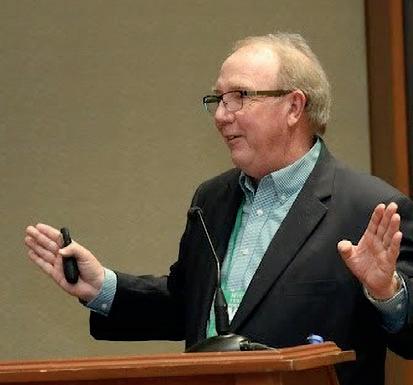
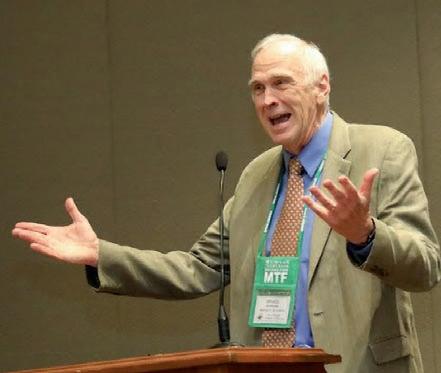
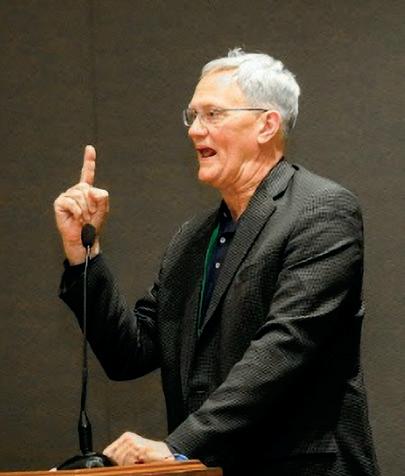



Dr. Vargas was touched by your thoughts. He taught you well.
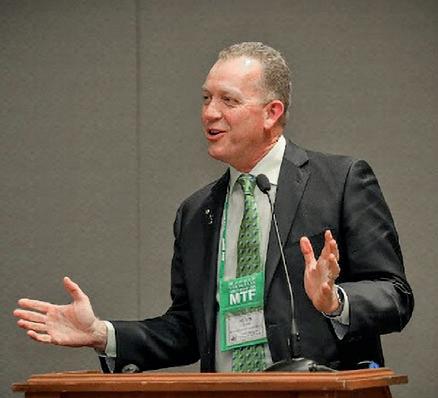















It was a perfect day for the LaFontaine Golf Outing!
Thank you to everyone who played or participated, the staff at Coyote Preserve Golf Club and all the event’s sponsors (listed below). The funds raised from this annual event fund The Gordon LaFontaine Endowment for Turfgrass Research, which was created to establish a solid source of funding for basic research in the field of turfgrass science.
The MTF recognized Dan Bywalec of D&B Landscaping for his continued participation at the LaFontaine Golf outing and support of the MSU turf program.
The MTF also recognized Doug Ware and the City of Livonia for registering multiple teams every year at this event.

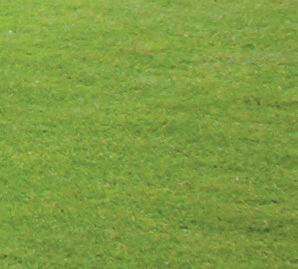
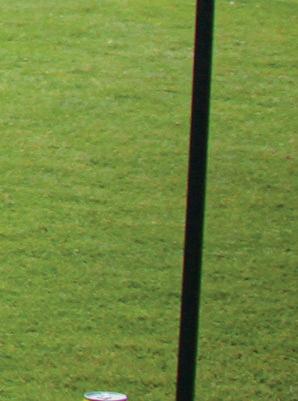
COYOTE PRESERVE GOLF CLUB
Closest to the pin winners:
Gordon LaFontaine #6, A. Wise #8, Jesse Sholl #12, Danny Bo #14, Jason Toffalo #17
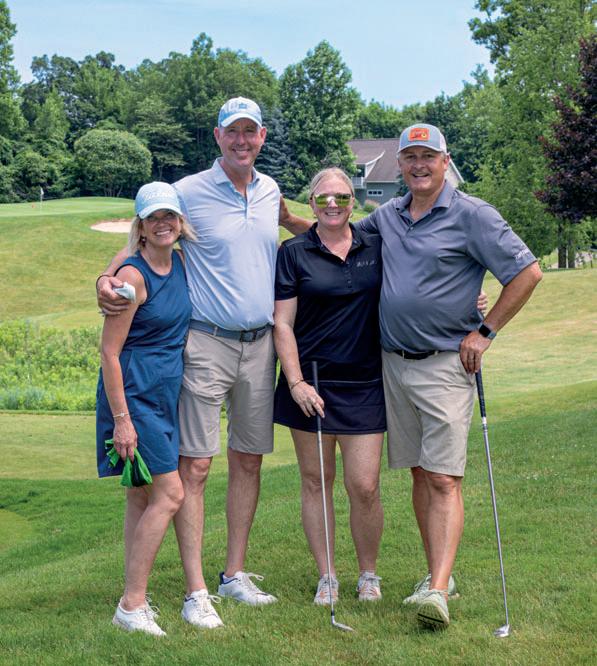
Longest Drive Winners:
Men - Jeff Holmes #4, Women - Julie Schweihofer #18

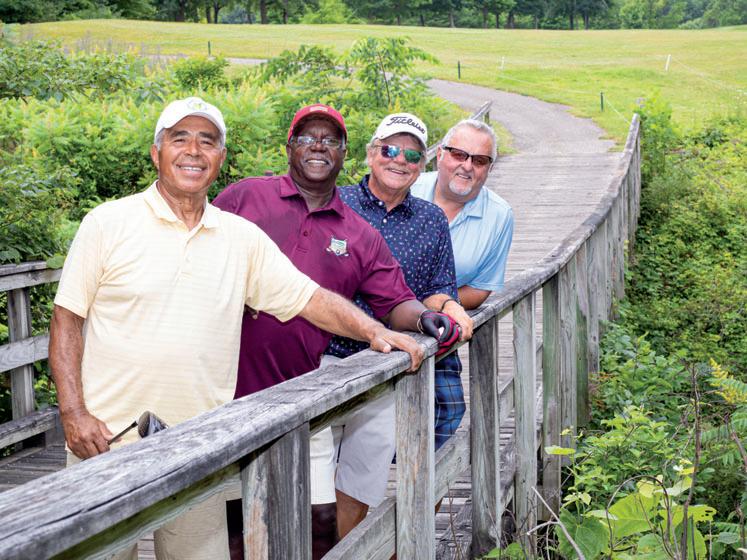

LaFontaine Championship:
Winning team (12 under par - 59)
Jeff Holmes, Richard Porter, Kevin Thielke, AJ Rings

Vargas Corporate Champions (9 under par – 62)
John Bork, Dan Bywalec, Jeff Thomas, Robert Bywalec
The Vargas Corporate Champions Flight has been created in honor of
Dr. Joseph Vargas.
Corporate Sponsorship Teams compete for this tribute and award.
Tee Sponsors:
Dr. Paul Rieke
Michigan Golf Course Association
Golf Association of Michigan
Jon Maddern
Target Specialty Products
Executive Golf Search
Breakfast Sponsor:
Helena Reception Sponsors:
Michael Kuhn and Associates
Envu Environmental Science
Healthy Turf Plus
Simplot
Corporate Sponsors:
Advanced Turf Solutions
Atticus MiGCSAA
D&B Landscaping
LaFontaine Motors
Syngenta
John & Justin Kirtland
Michigan Sports Fields Managers Association
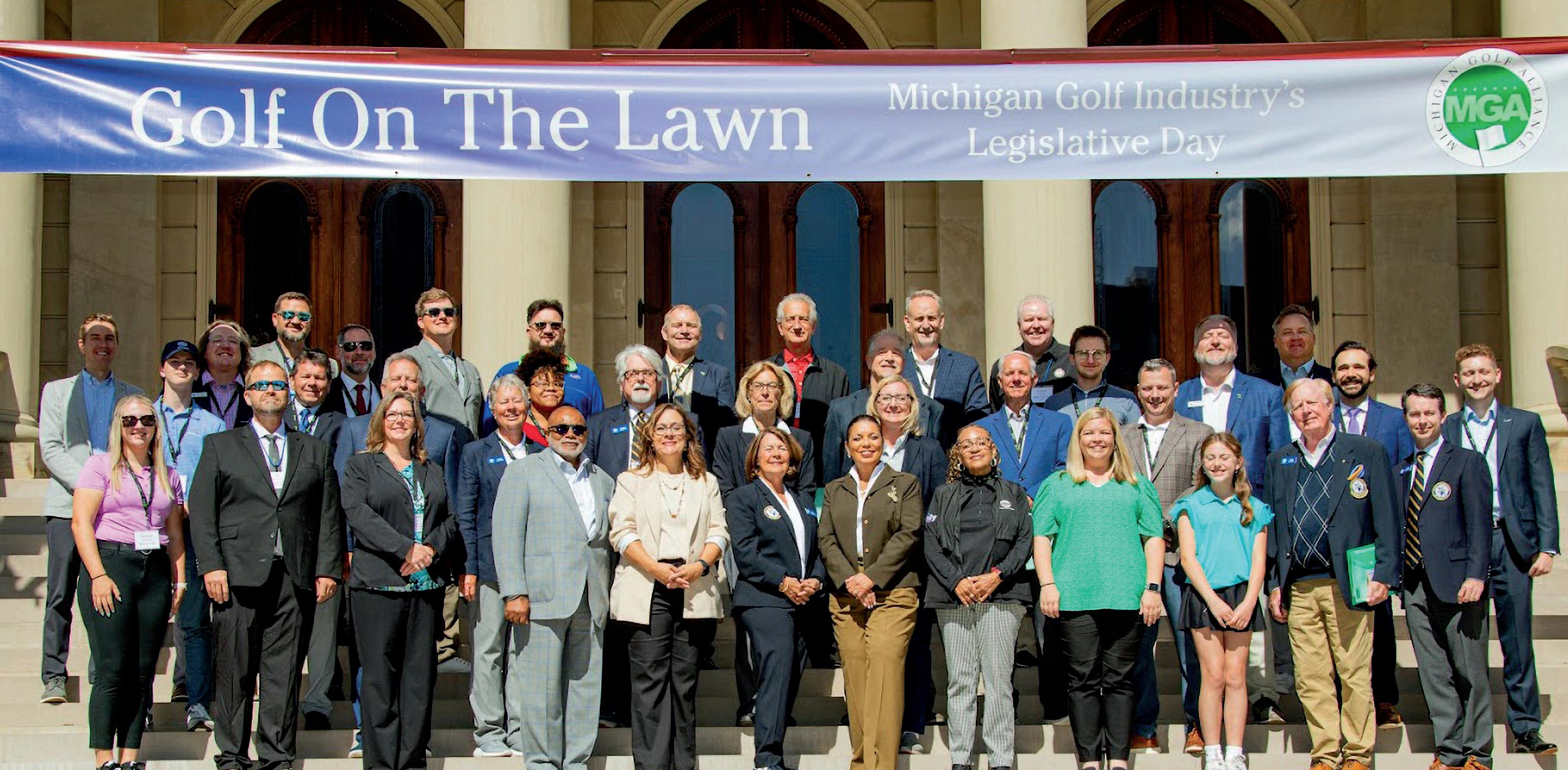

June 6, 2024






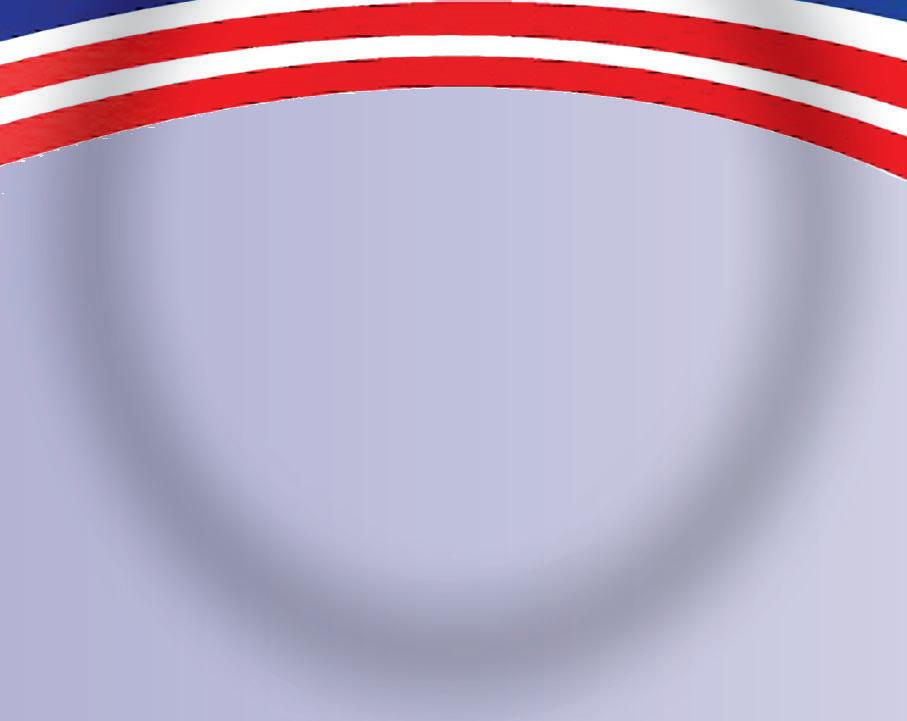
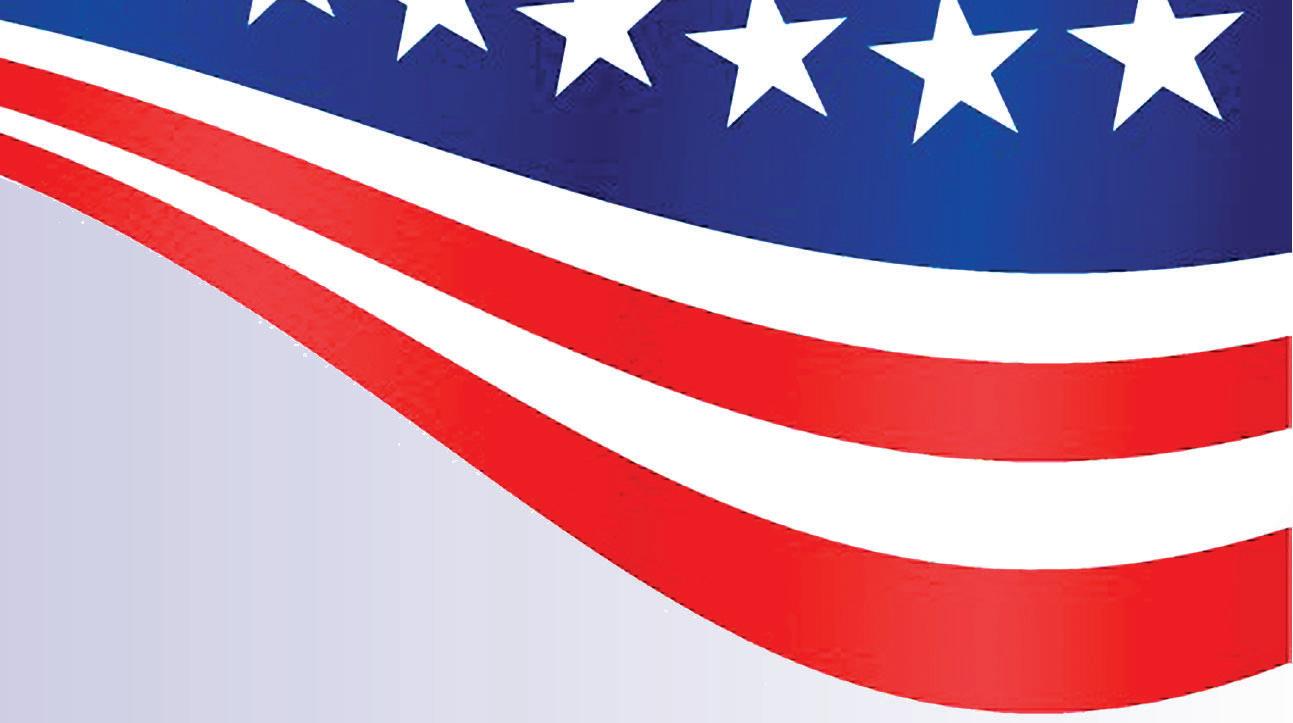


his year’s Michigan Golf Day at the Michigan Capitol was the 17th year that the event has been held at the state capitol lawn. The concept of Michigan Golf Day was a combined effort of the Michigan Golf Alliance comprised of: The Michigan Golf Course Association (MGCA), the Michigan Golf Course Superintendents Association (MiGCSA), the Michigan Section PGA, the Michigan Turfgrass Foundation (MTF), the Golf Association of Michigan (GAM) and the Greater Michigan Club Management Association (GMCMA). The original creation of this event was proposed by the MGCA (Michigan Golf Course Owners Association at the time) and this organization, lead by Jada Paisley, continues to do the heavy lifting to ensure golf in Michigan is an important industry and its place with the state legislature is not forgotten.
This year’s event was highlighted by the rollout of an Economic Impact Study (EIS) that was commissioned by the Michigan Golf Alliance to provide the true value of golf and its importance as an industry to the state of Michigan. The EIS was documented and put together by the National Golf Foundation (NGF) with the MGCA taking the lead to ensure it would be assembled and provided to the Michigan Legislature and the attendees at the event. The documentation provided a keen perspective of how engaged the golf industry in Michigan is in comparison to the rest of the country. A few takeaways include:
• The Michigan golf industry contributed almost $6.1 billion to the state’s economy in 2023 and supports 61,000 jobs with $1.795 billion of wage and benefits income and more than $821 million in state and local taxes.
• Michigan has 859 golf courses that are part of 709 facilities, almost all of which are classified as small businesses. Of those 709 facilities, 604 are public and 105 are private.
• The NGF said outside of the coastal, warm weather states of Florida and California, it can be argued that no U.S. state has a more substantial footprint in the world of recreational golf. Michigan is 10th in the U.S. in size and 11th in population but ranks third in the total number of golf courses.
• Only Florida, California and Texas with golf facilities open the year around have a higher volume of annual rounds played than Michigan, which had approximately 16.42 million rounds played in 2023.
FOR MORE INFORMATION: Contact Jada Paisley of the MGCA at 517-482-4312. See more about the study at michigangolfalliance.com
Michigan Golf Day allows all attendees a chance to interact with State legislators and express the needs, expectations and values of the golf industry to the State of Michigan. The information above is critical when expressing to others the contribution that golf provides to the Michigan economy. Understanding its importance is the first step to continued success which can never be minimized. The MGCA can be proud of its efforts with Golf Day and everyone in the Michigan golf industry can be proud of the efforts of its allied associations. Their commitment to ensuring Michigan Golf is always on the list of places to work and play is second to none.

• Golf facilities in Michigan had a charitable impact of $104.3 million in 2023 by hosting an estimated 4,880 dedicated charity events with 467,400 participants.
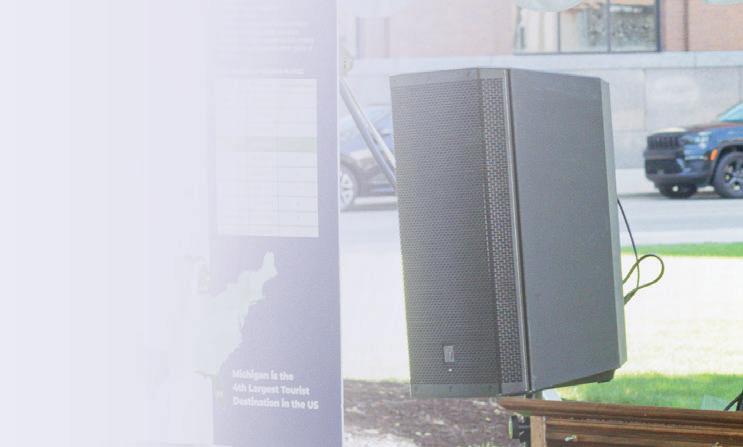
• Approximately 896,700 residents play traditional, green-grass golf. Only seven U.S. states have more golfers.
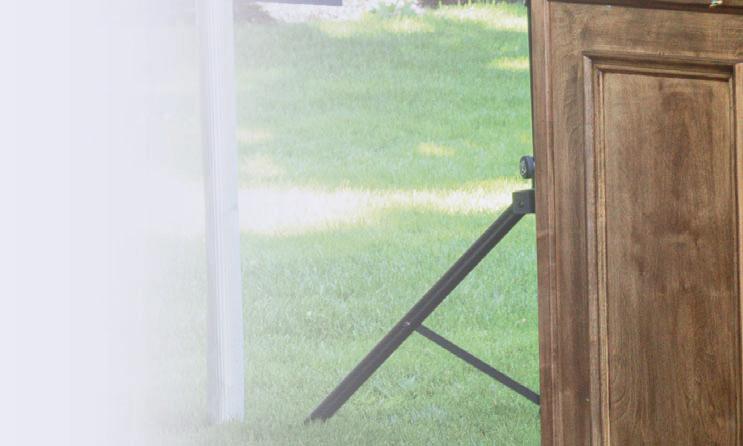

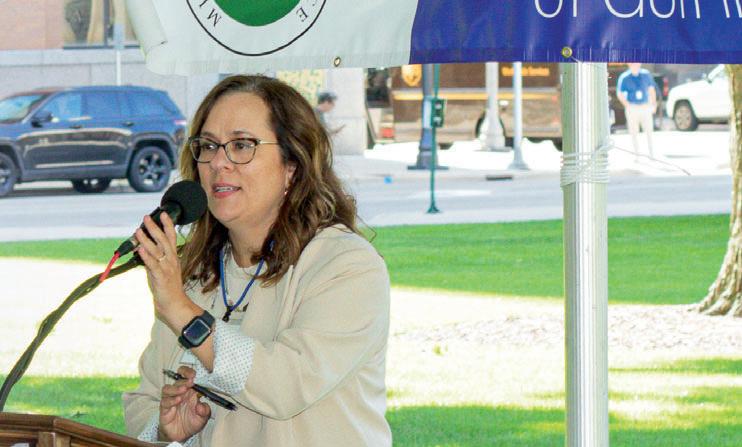
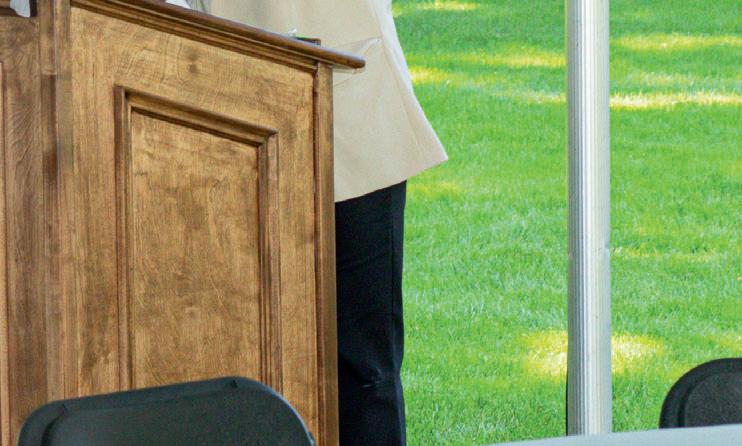





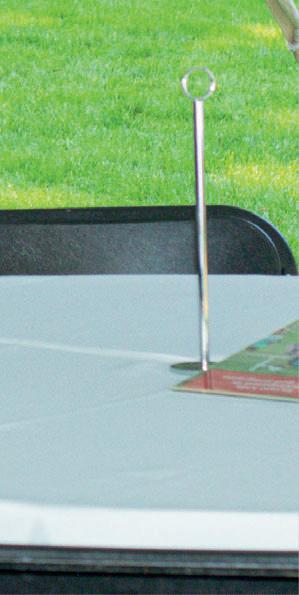








































P.O. Box 27156

Lansing, MI 48909-7156
www.michiganturfgrass.org
Phone: 517-392-5003
miturfgrass@gmail.com




